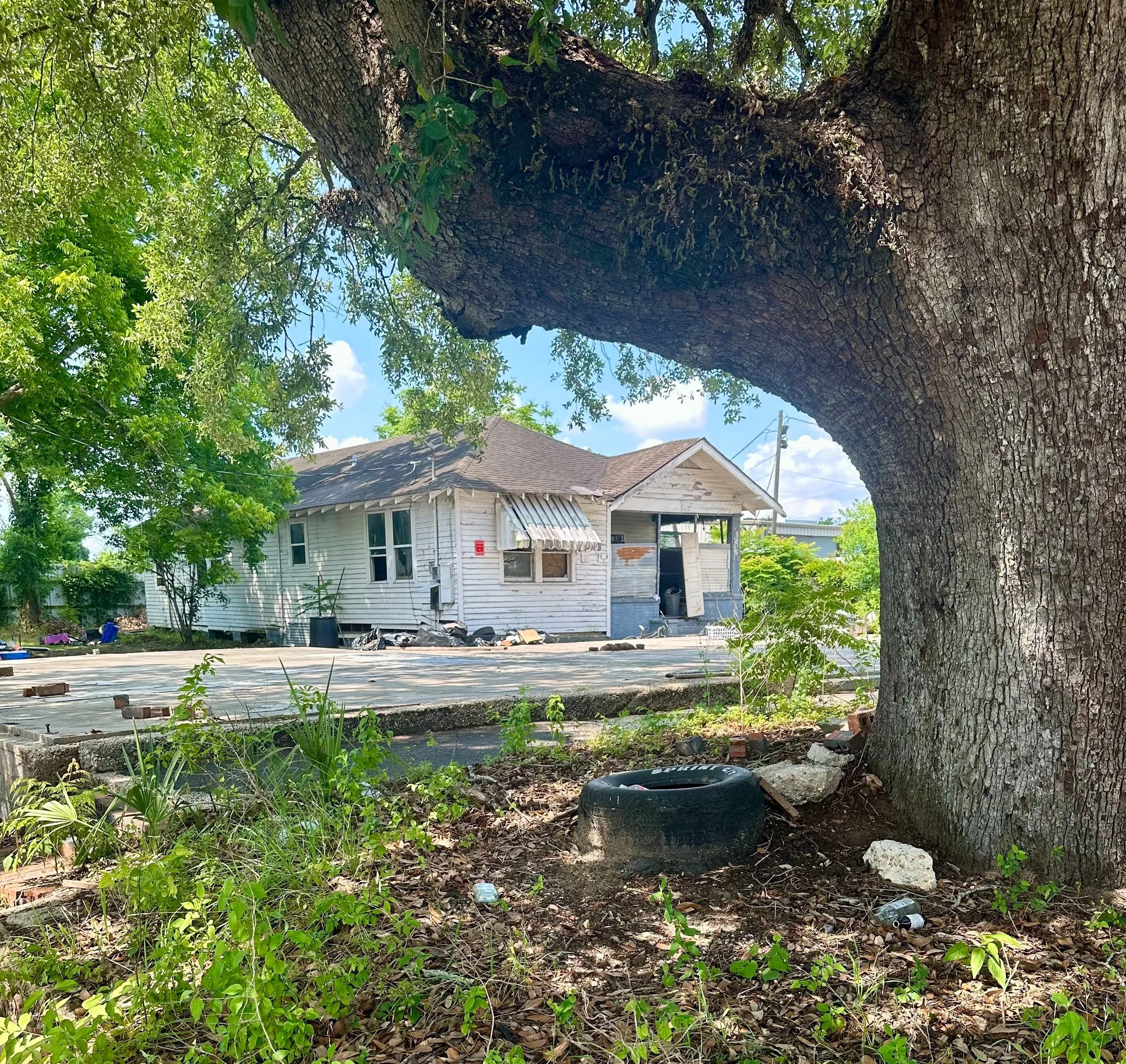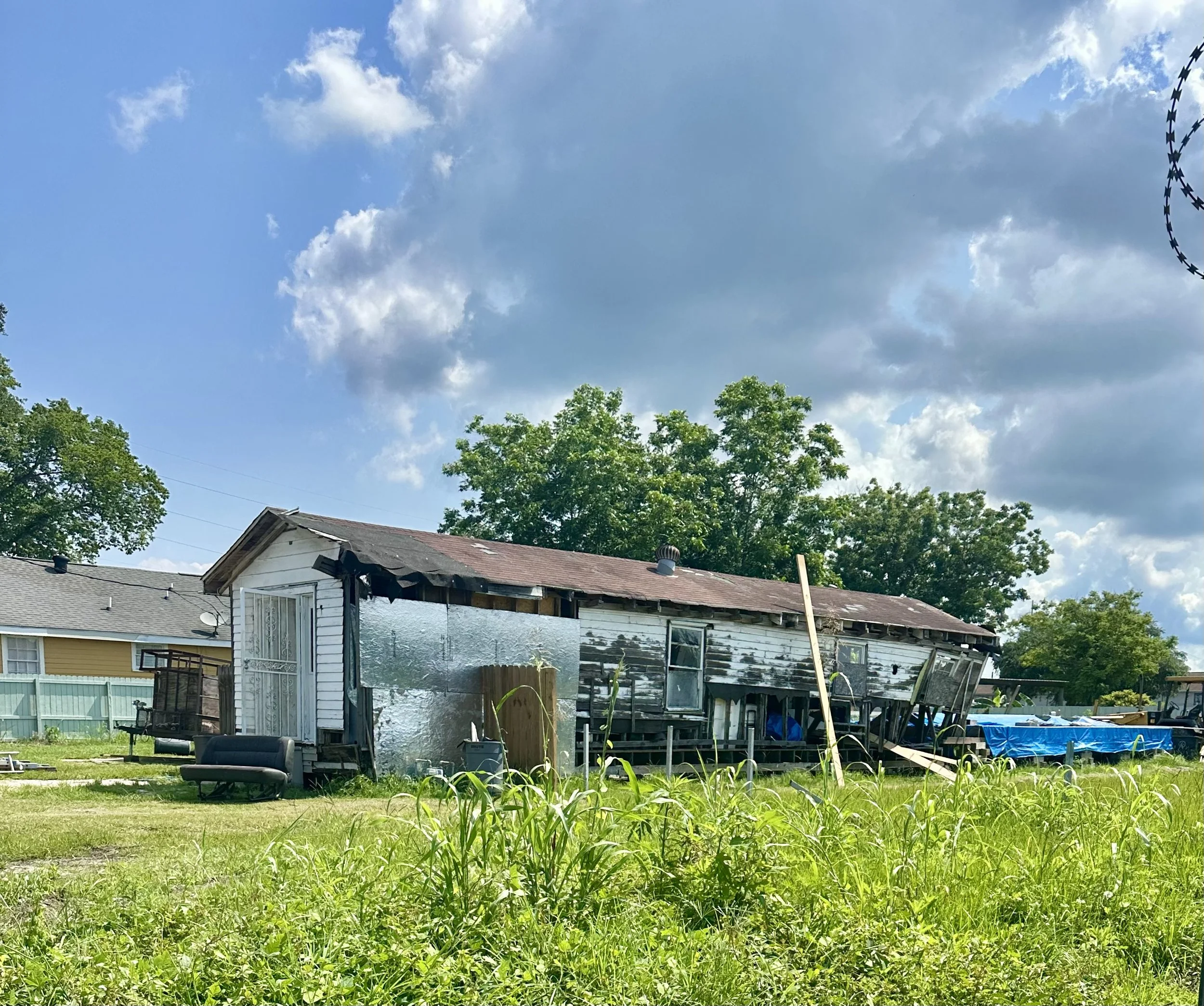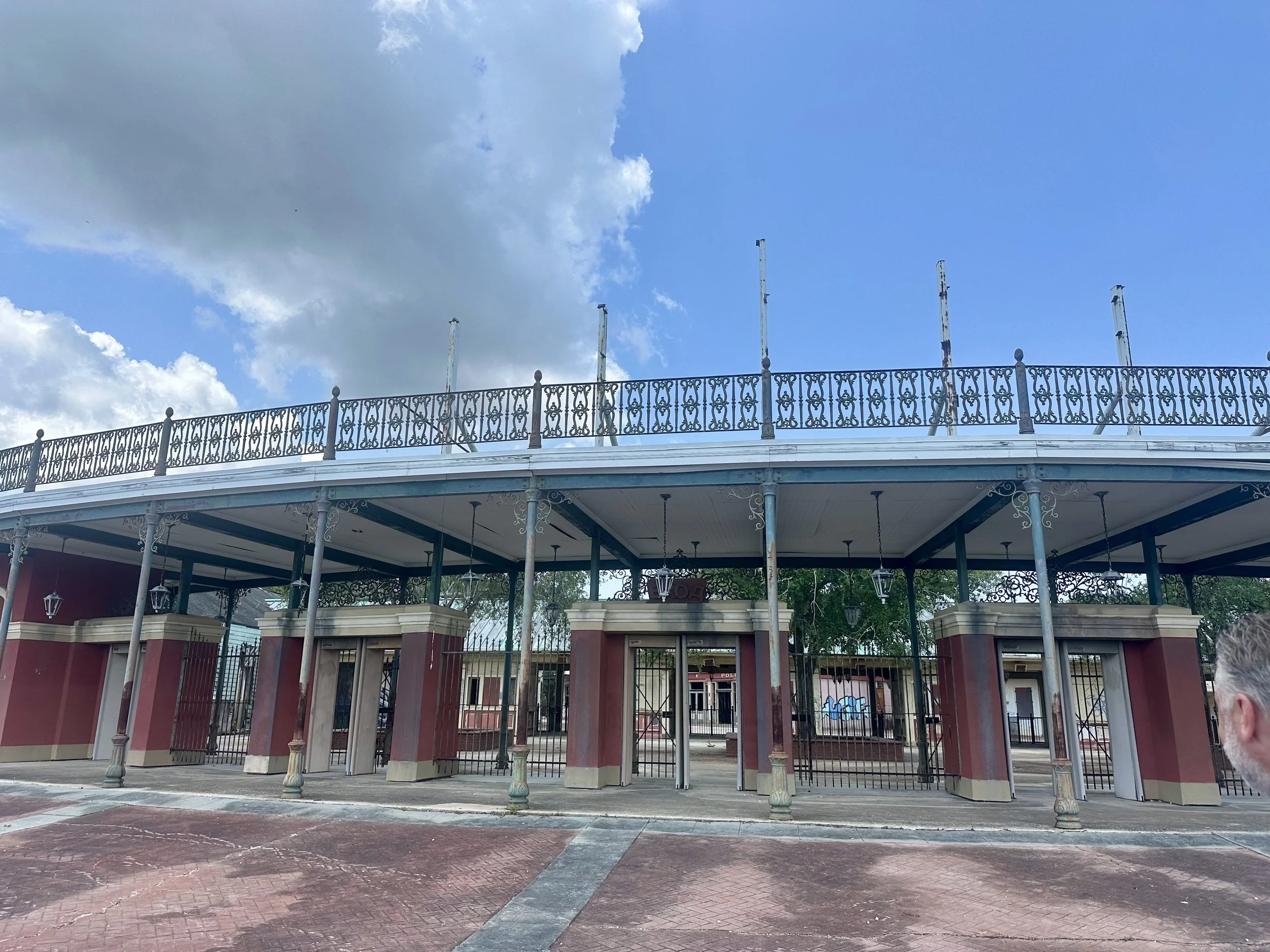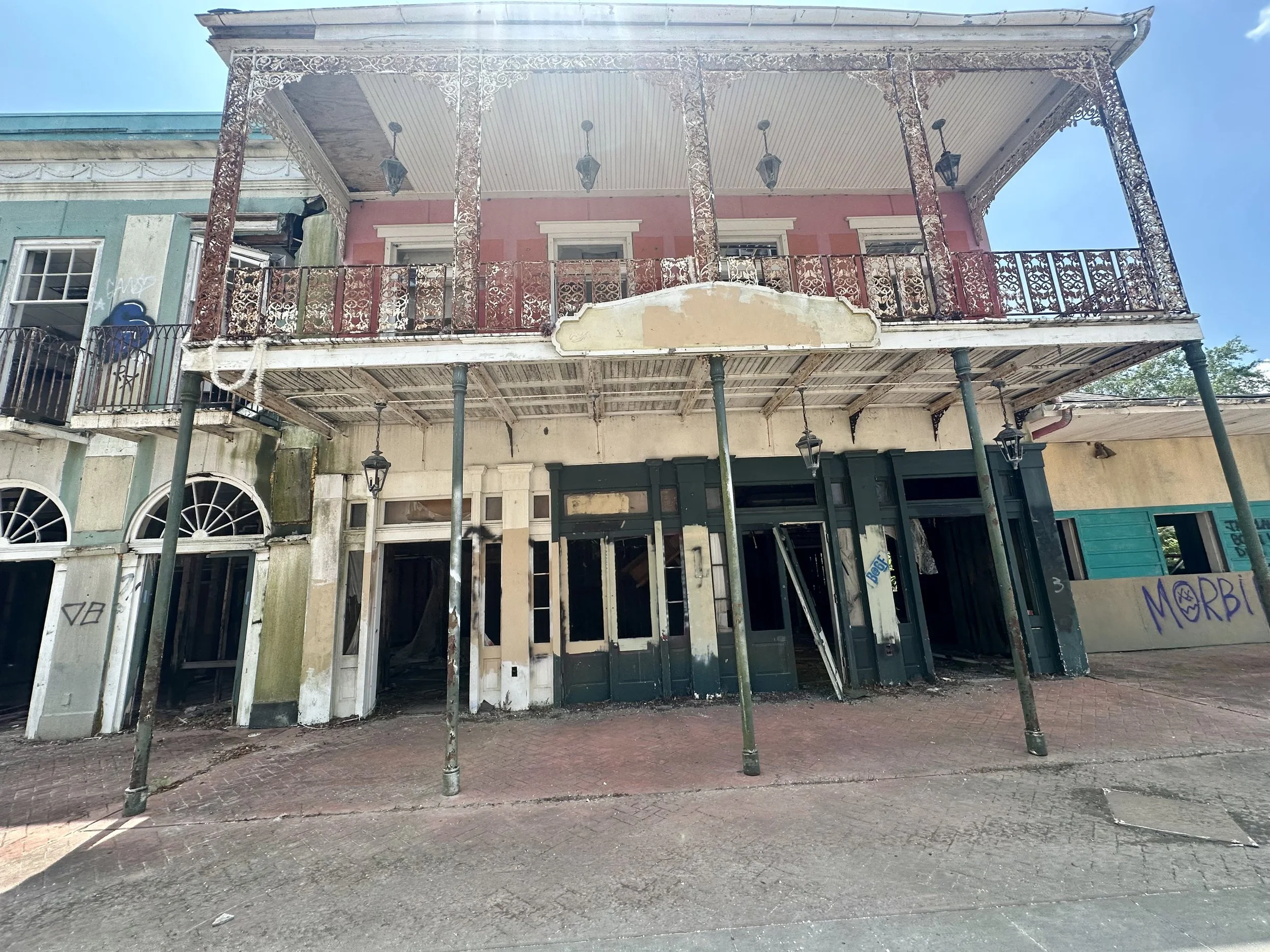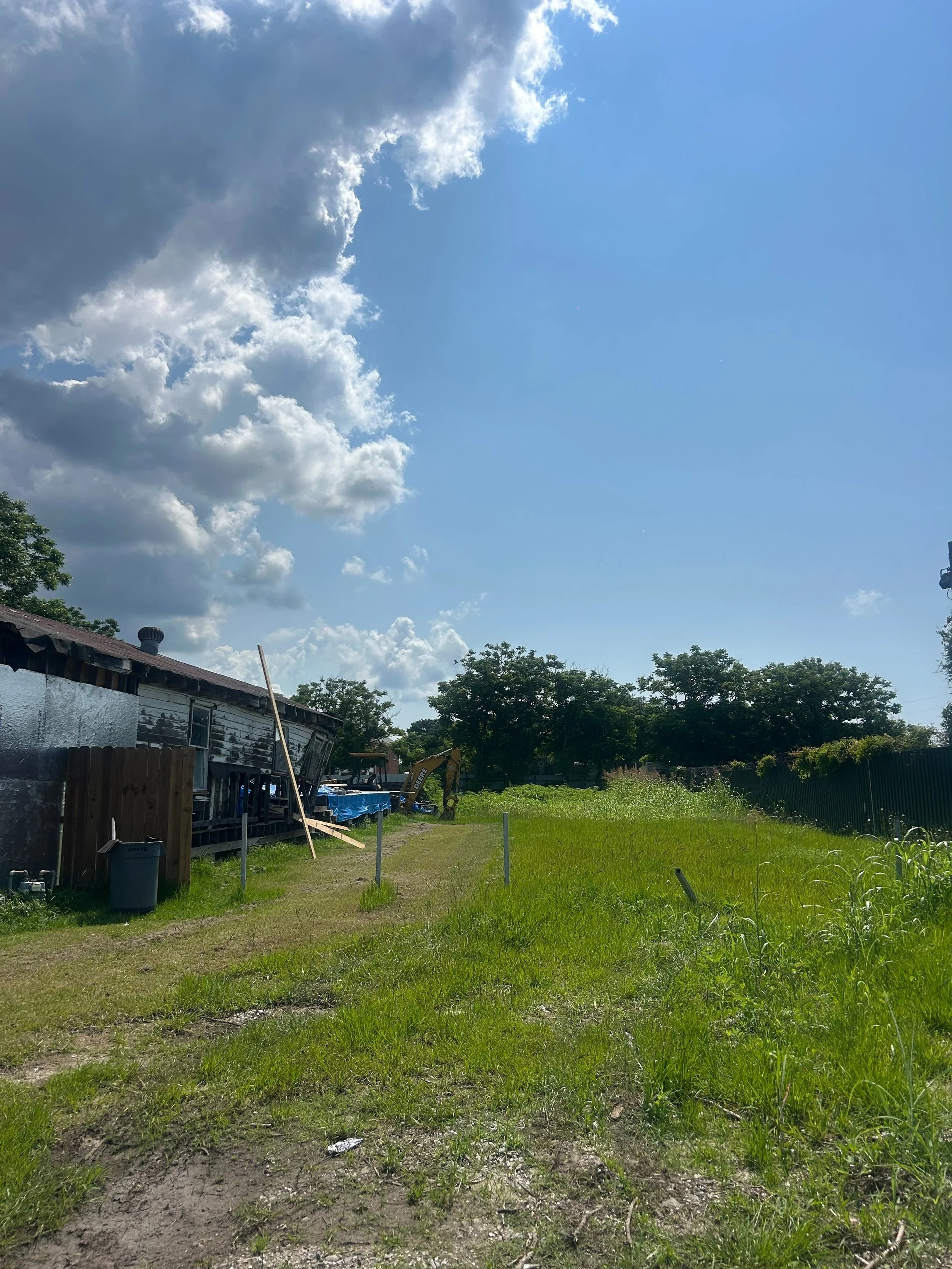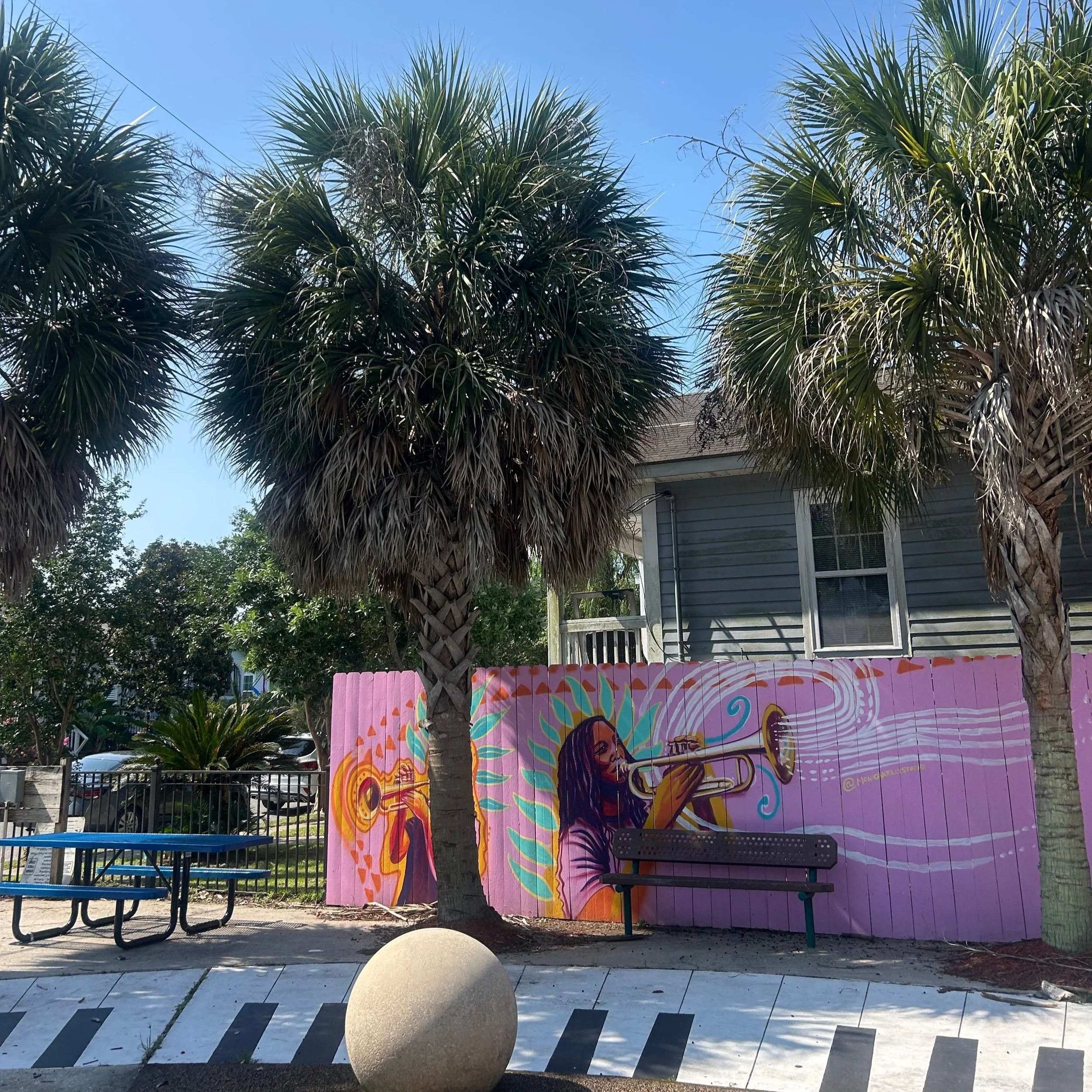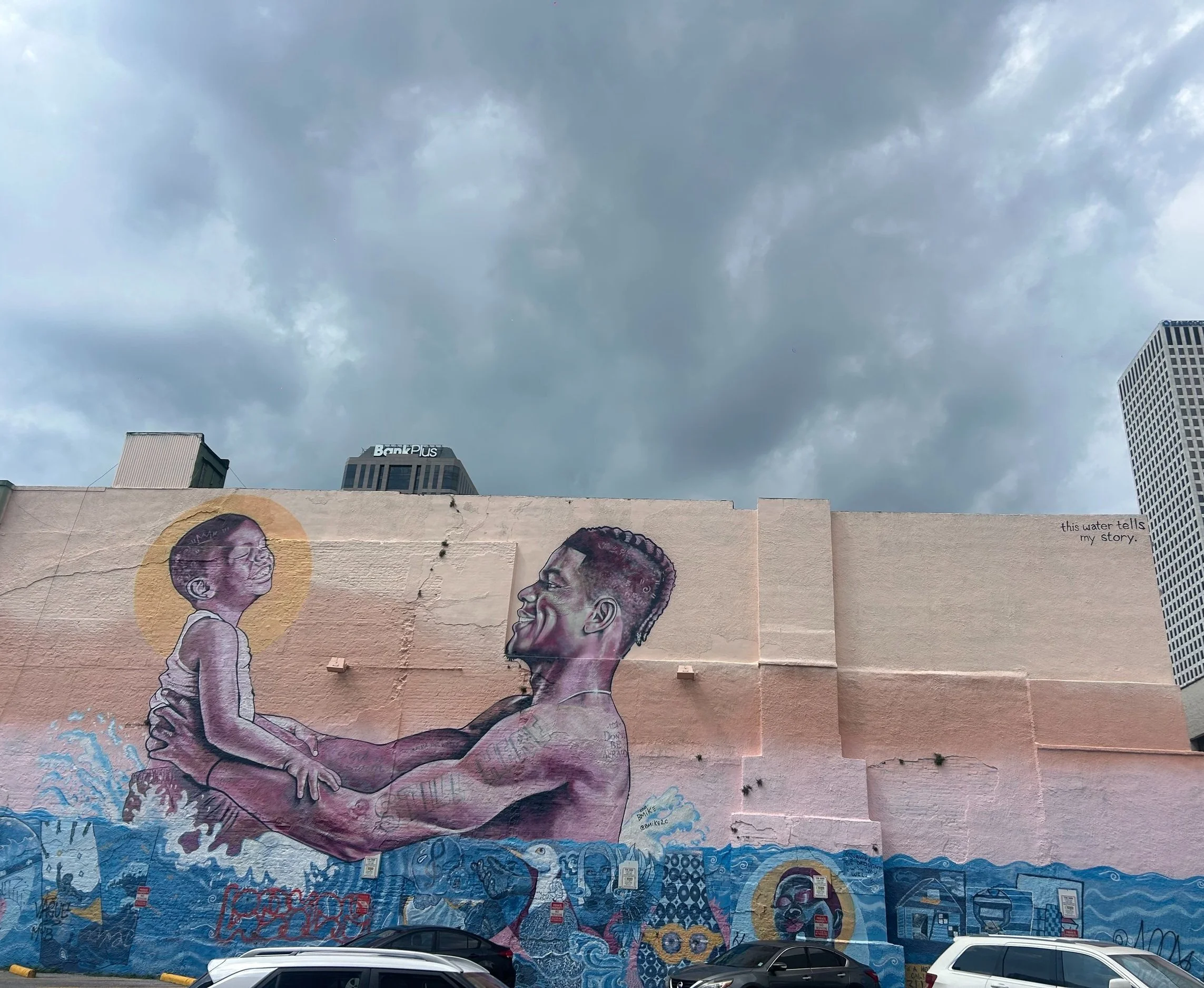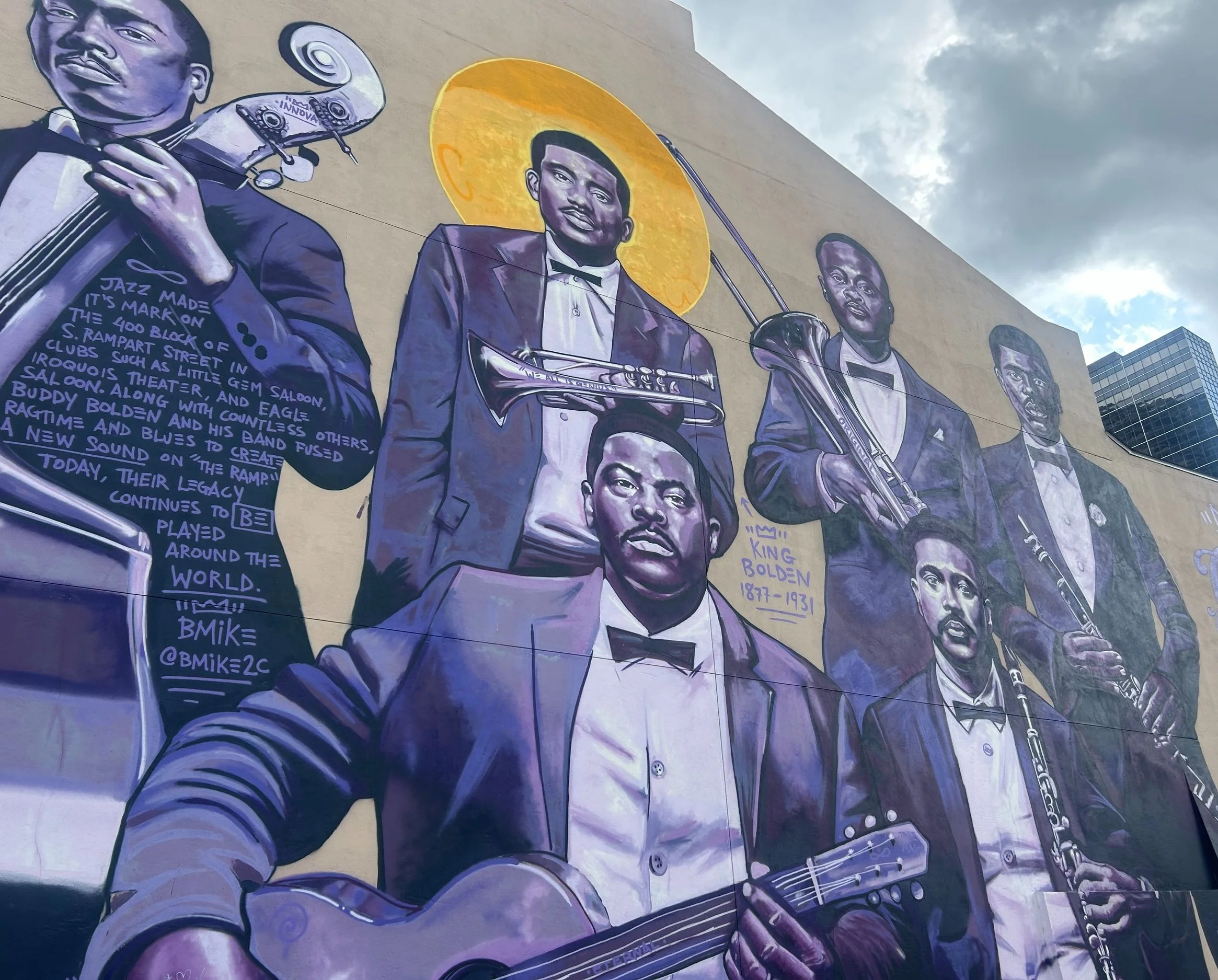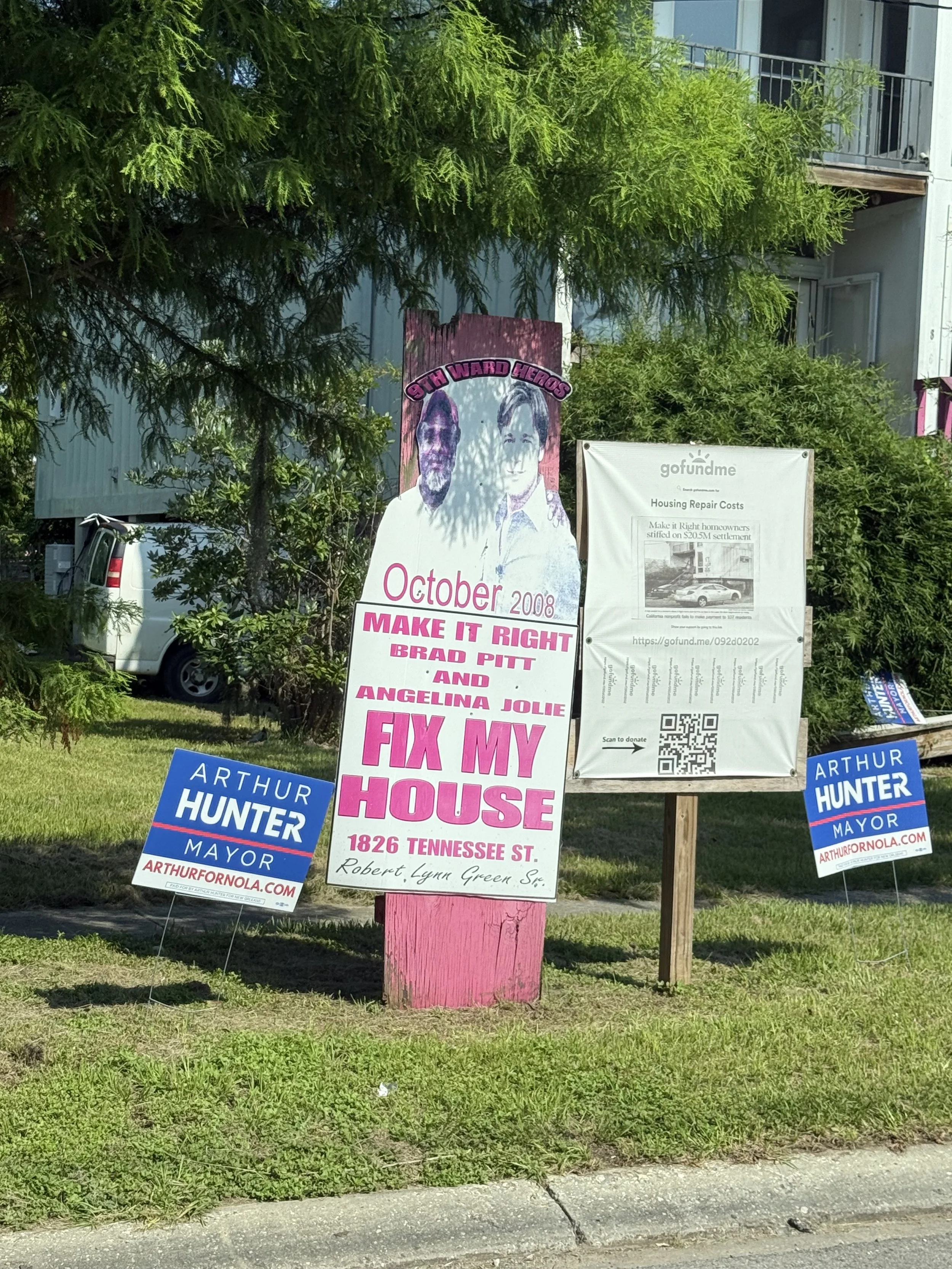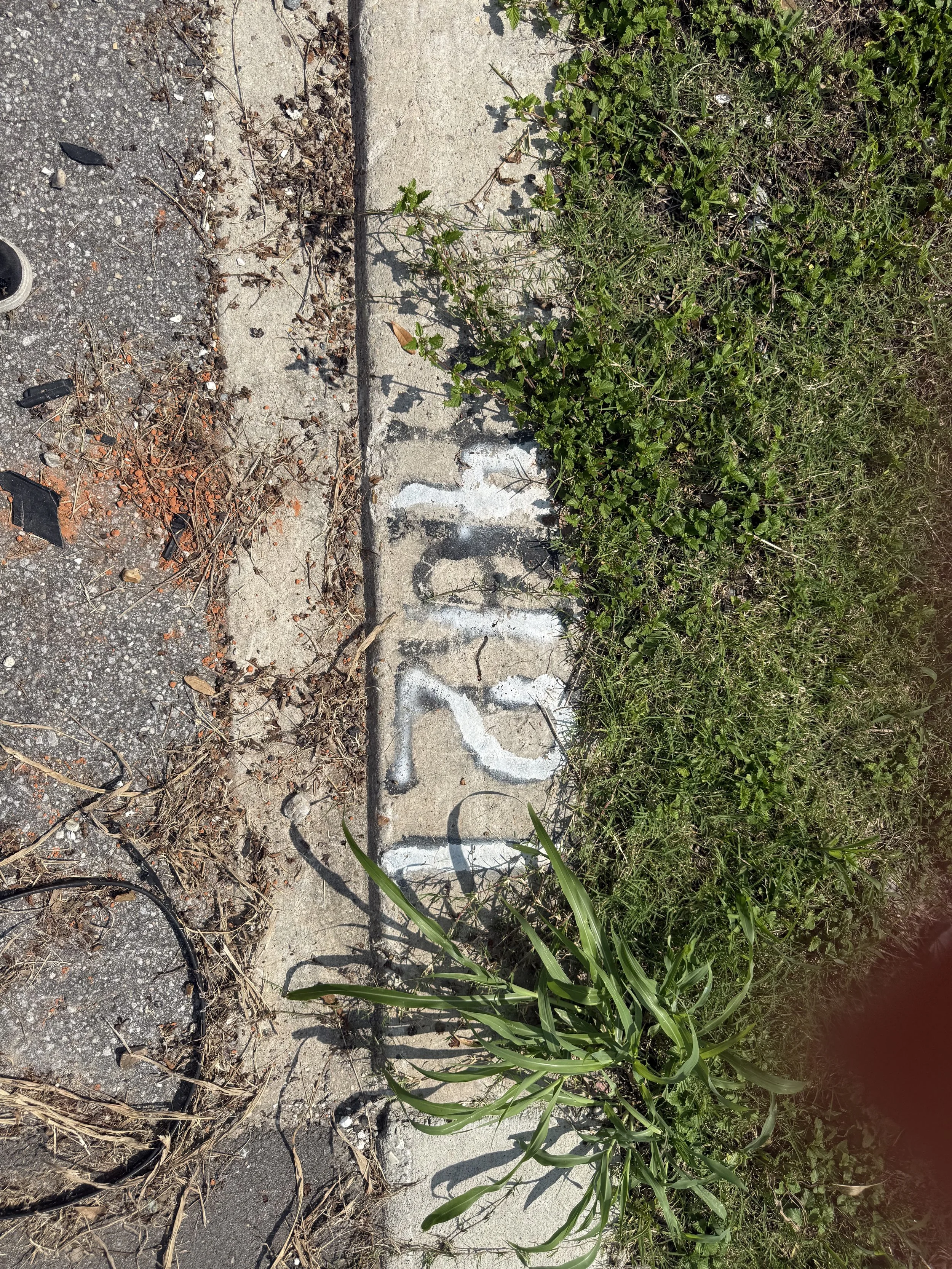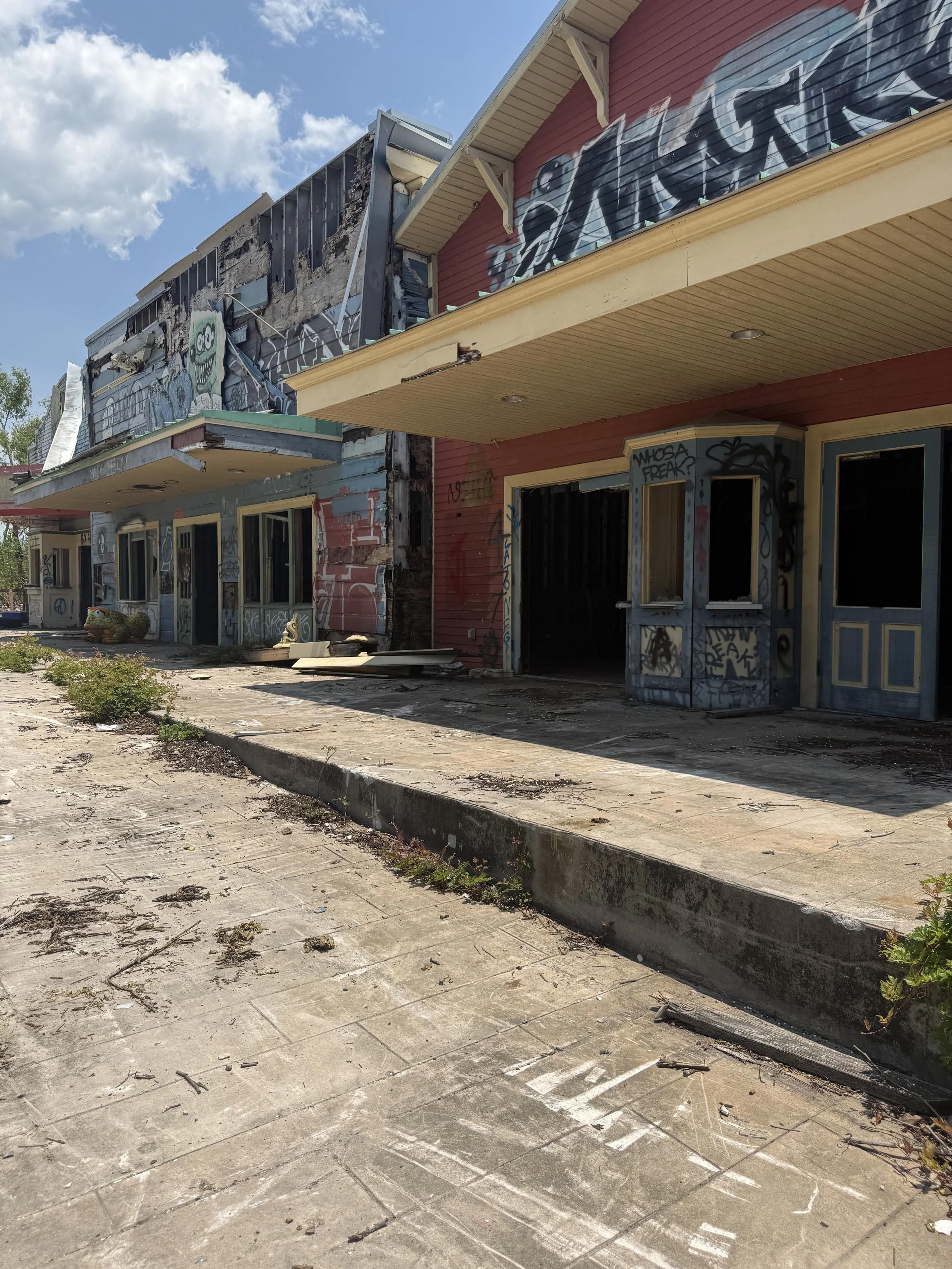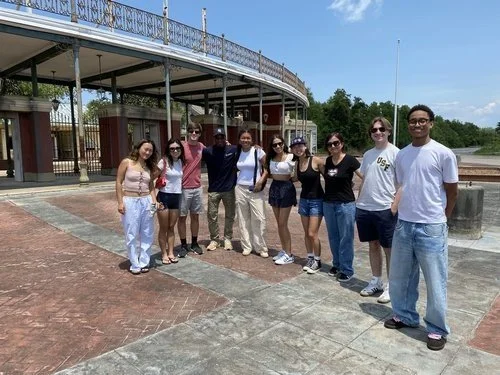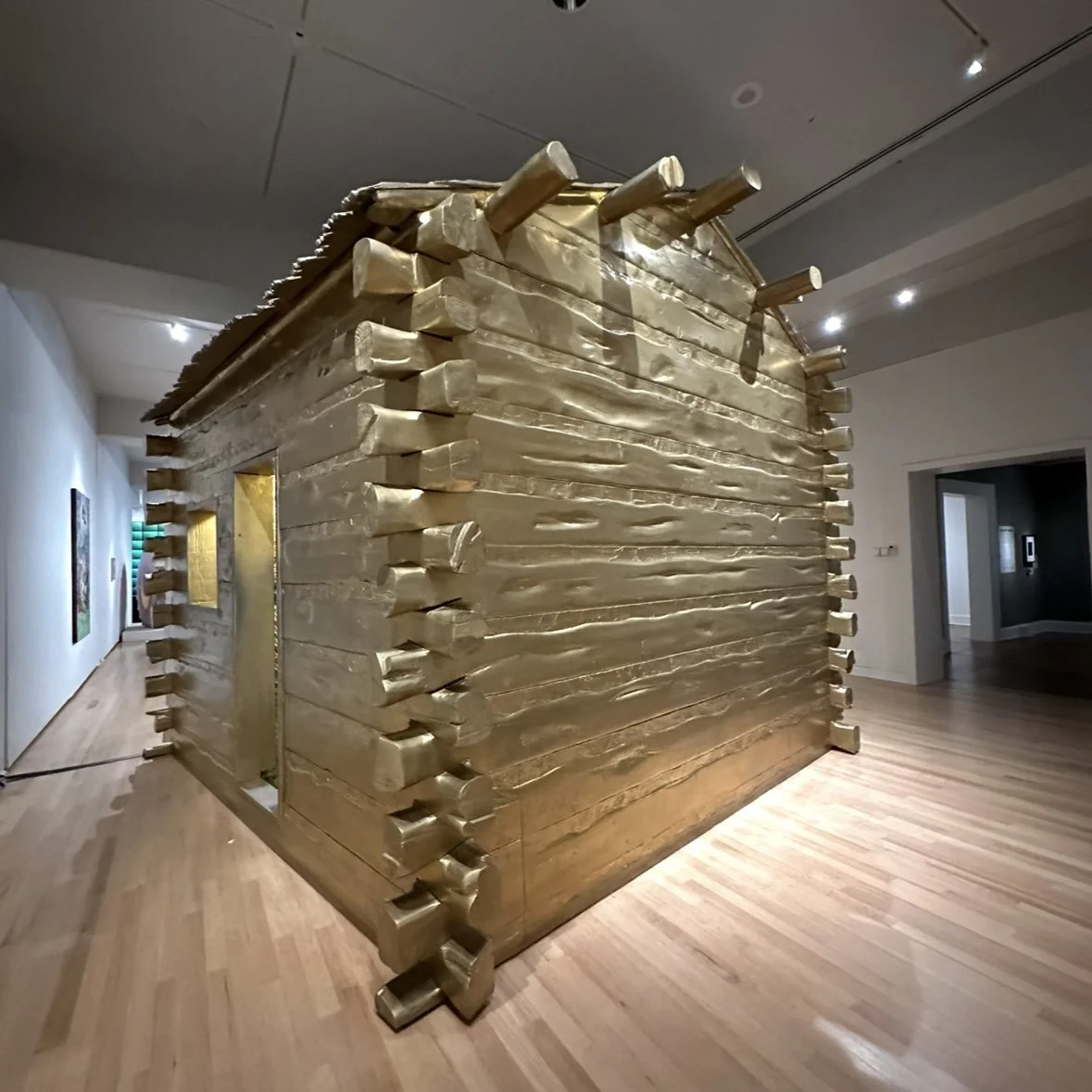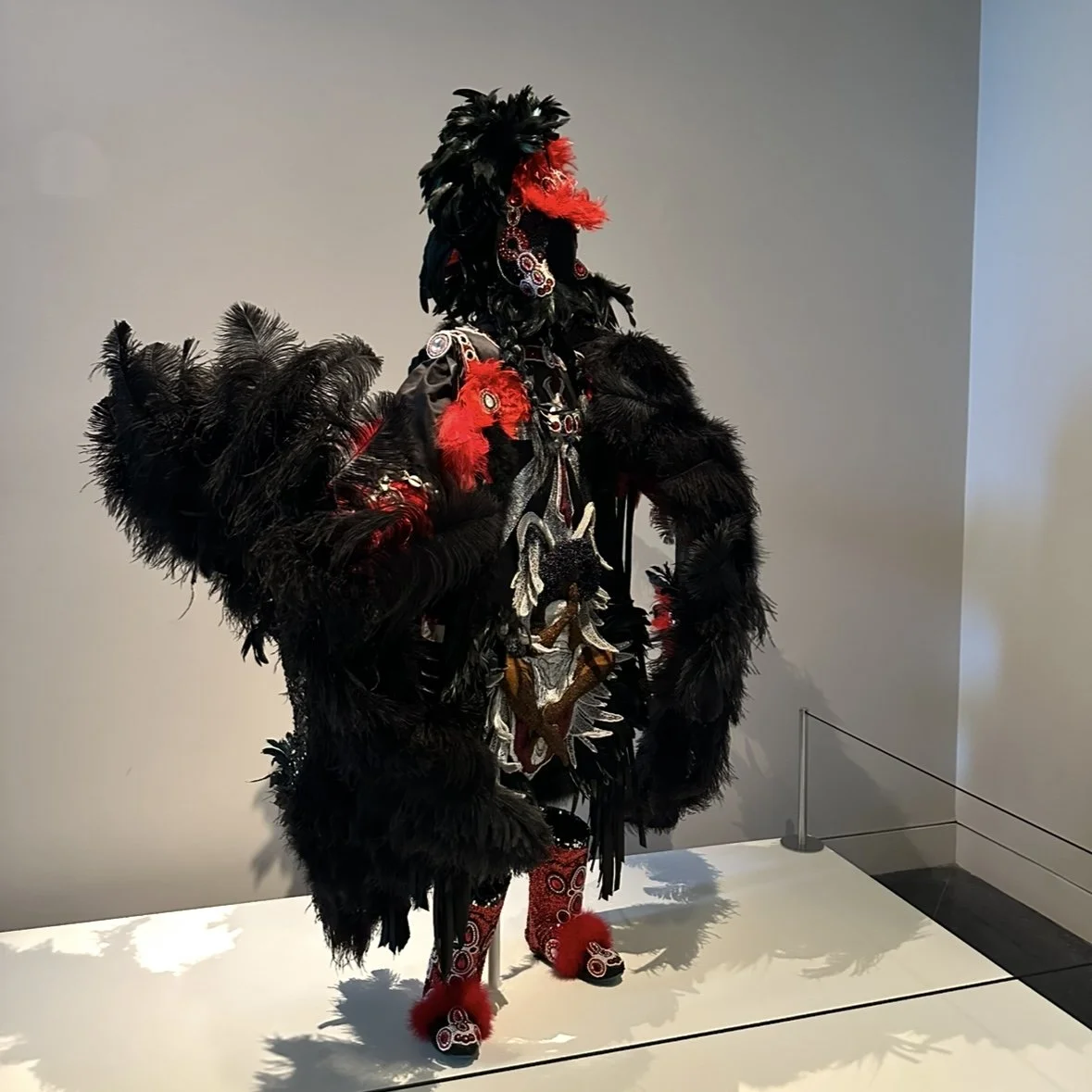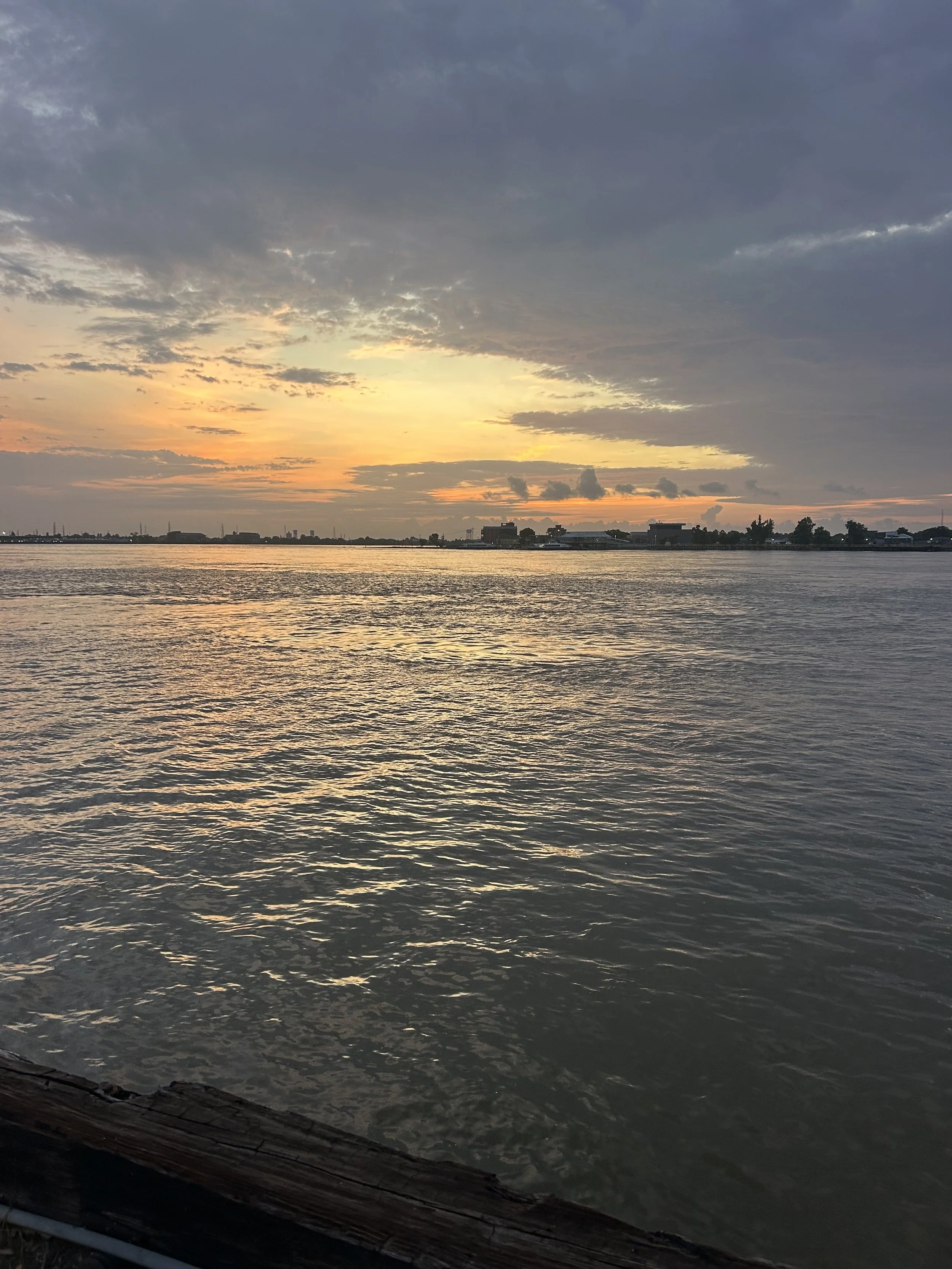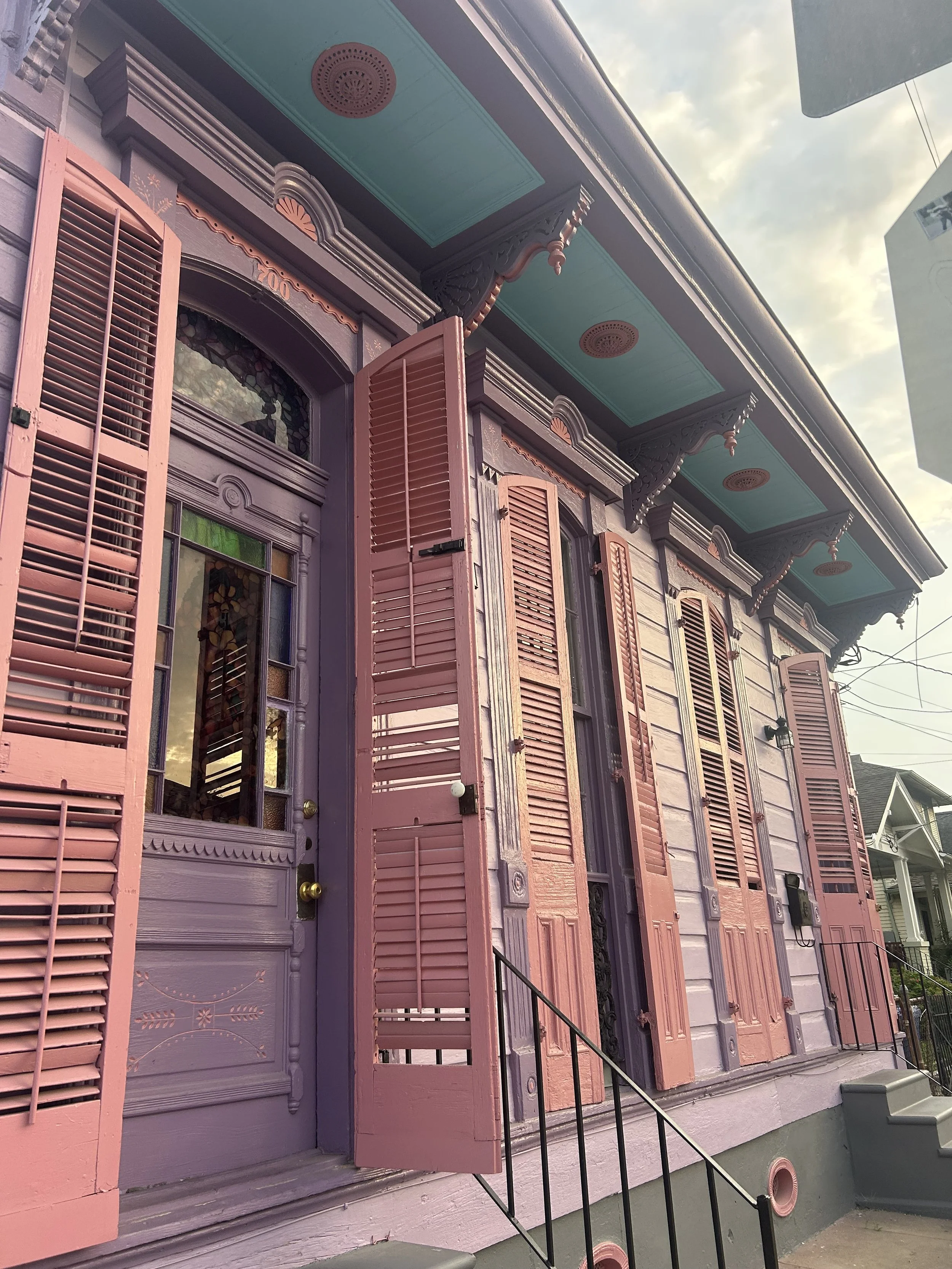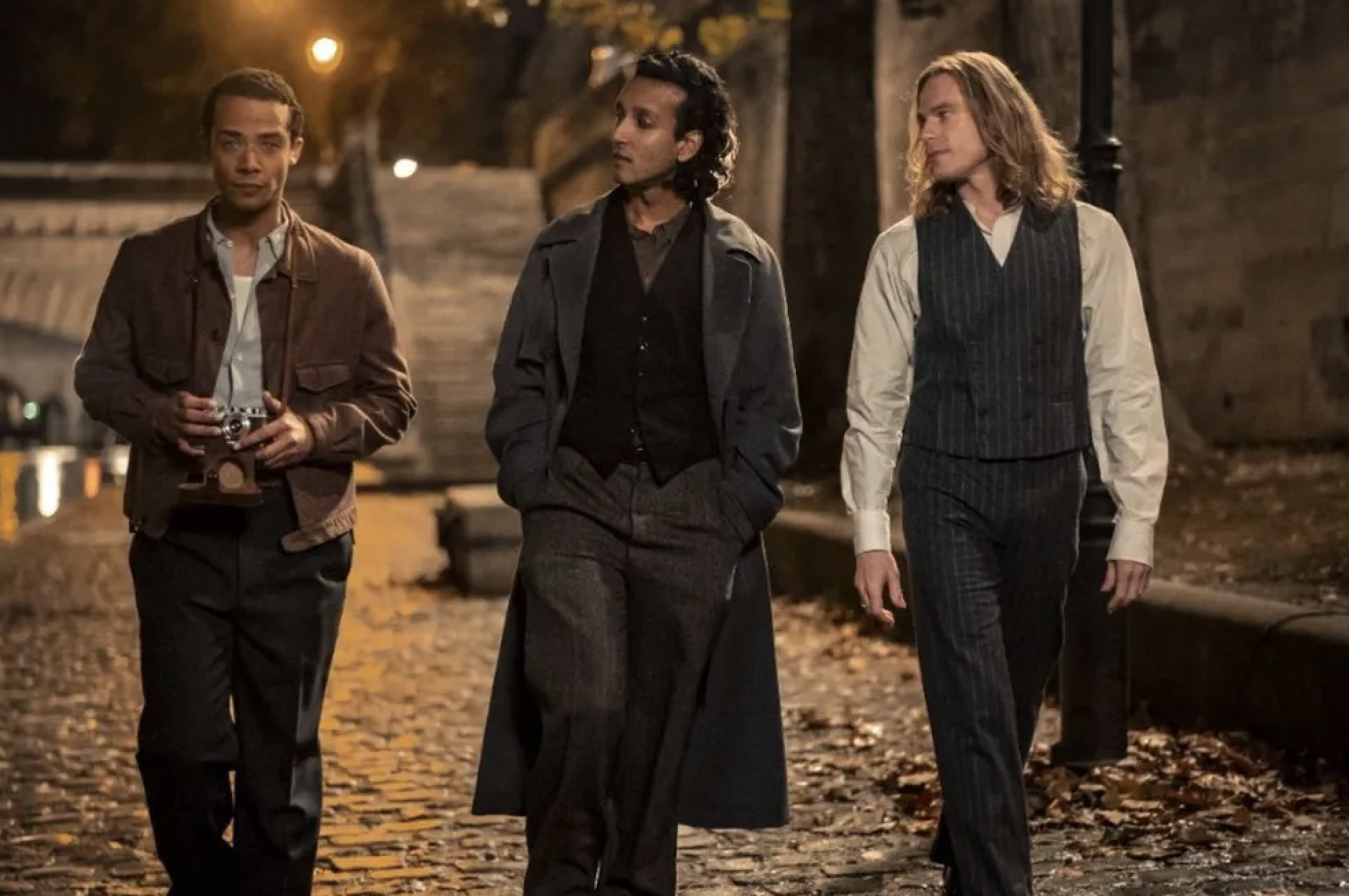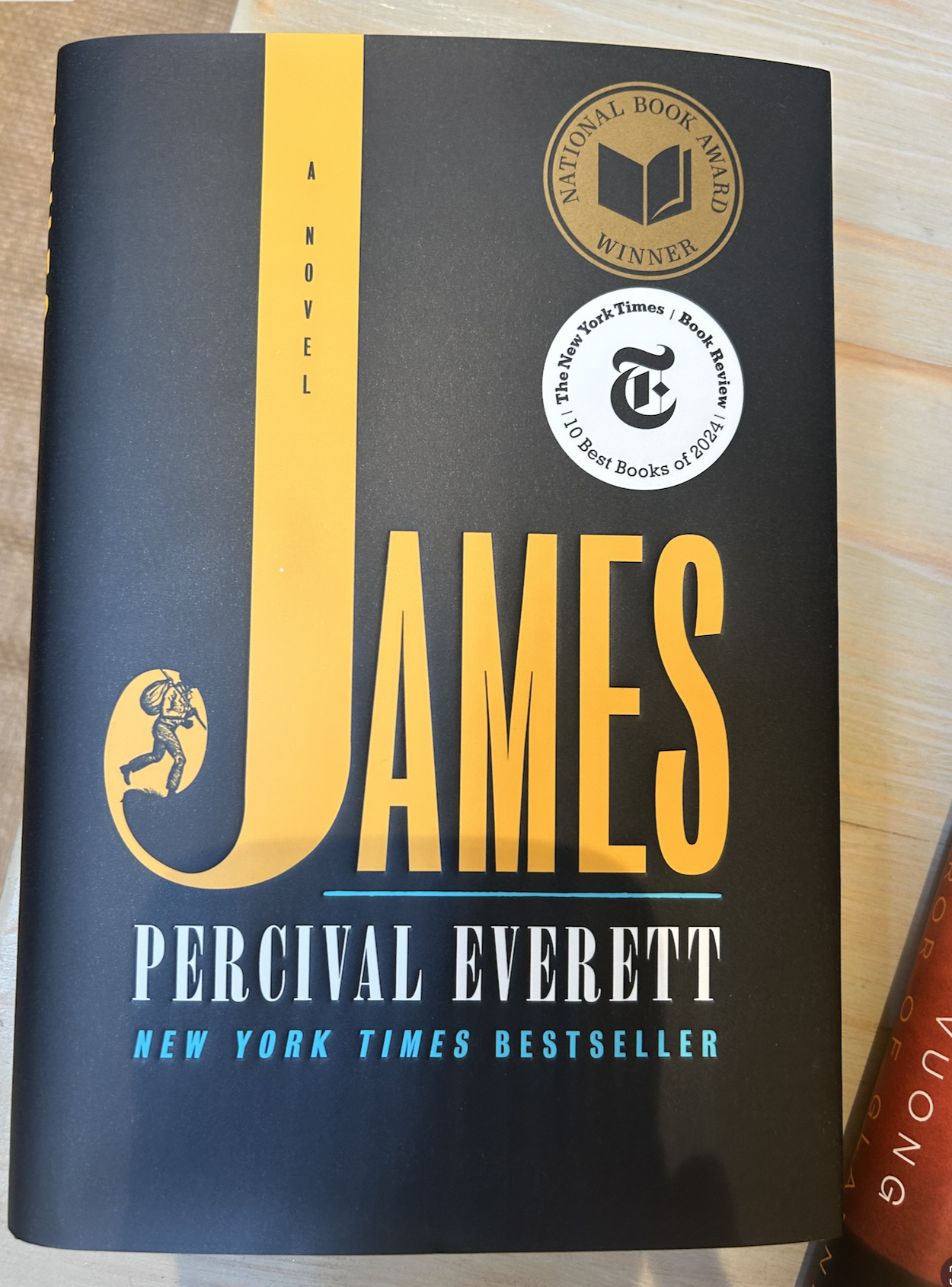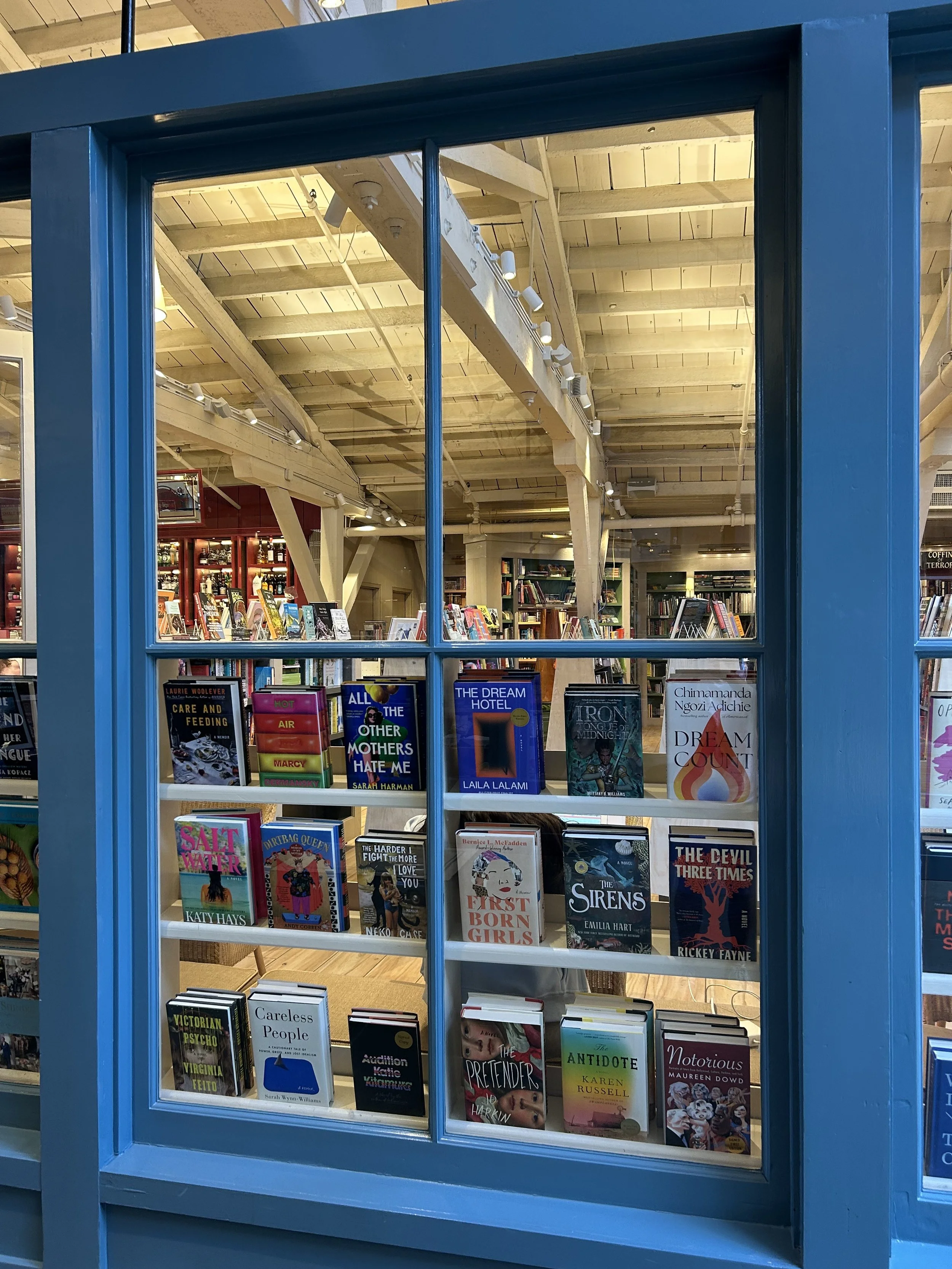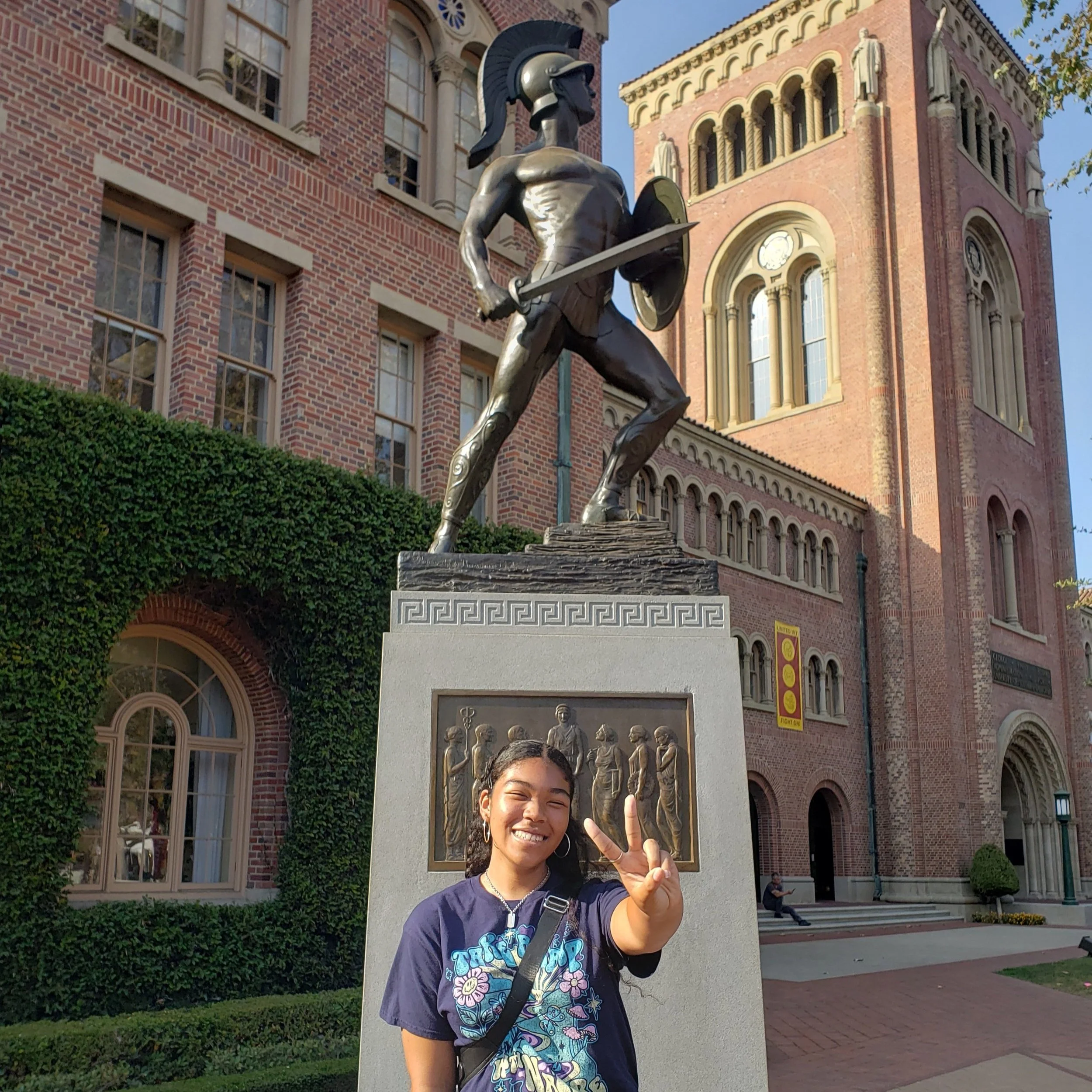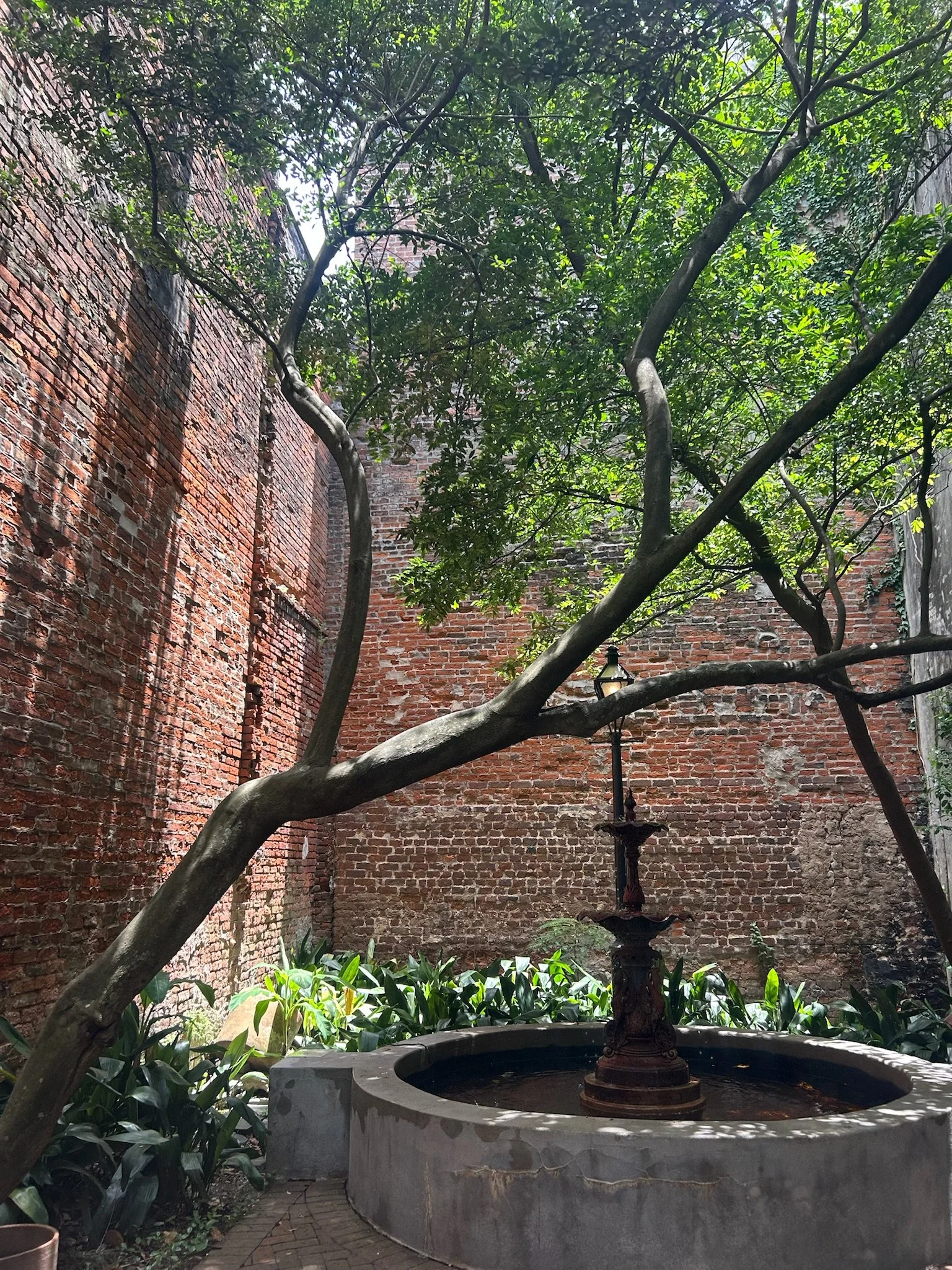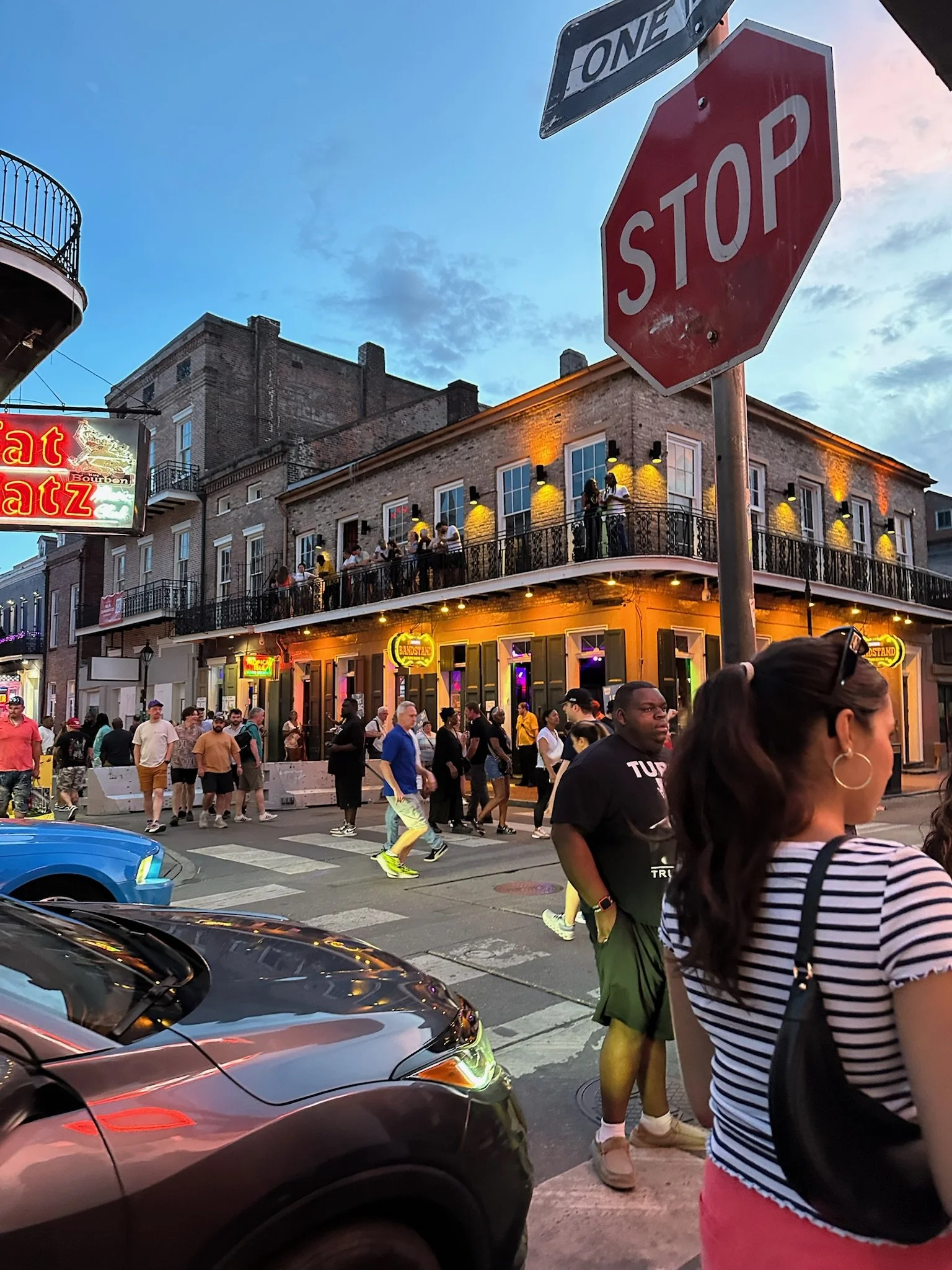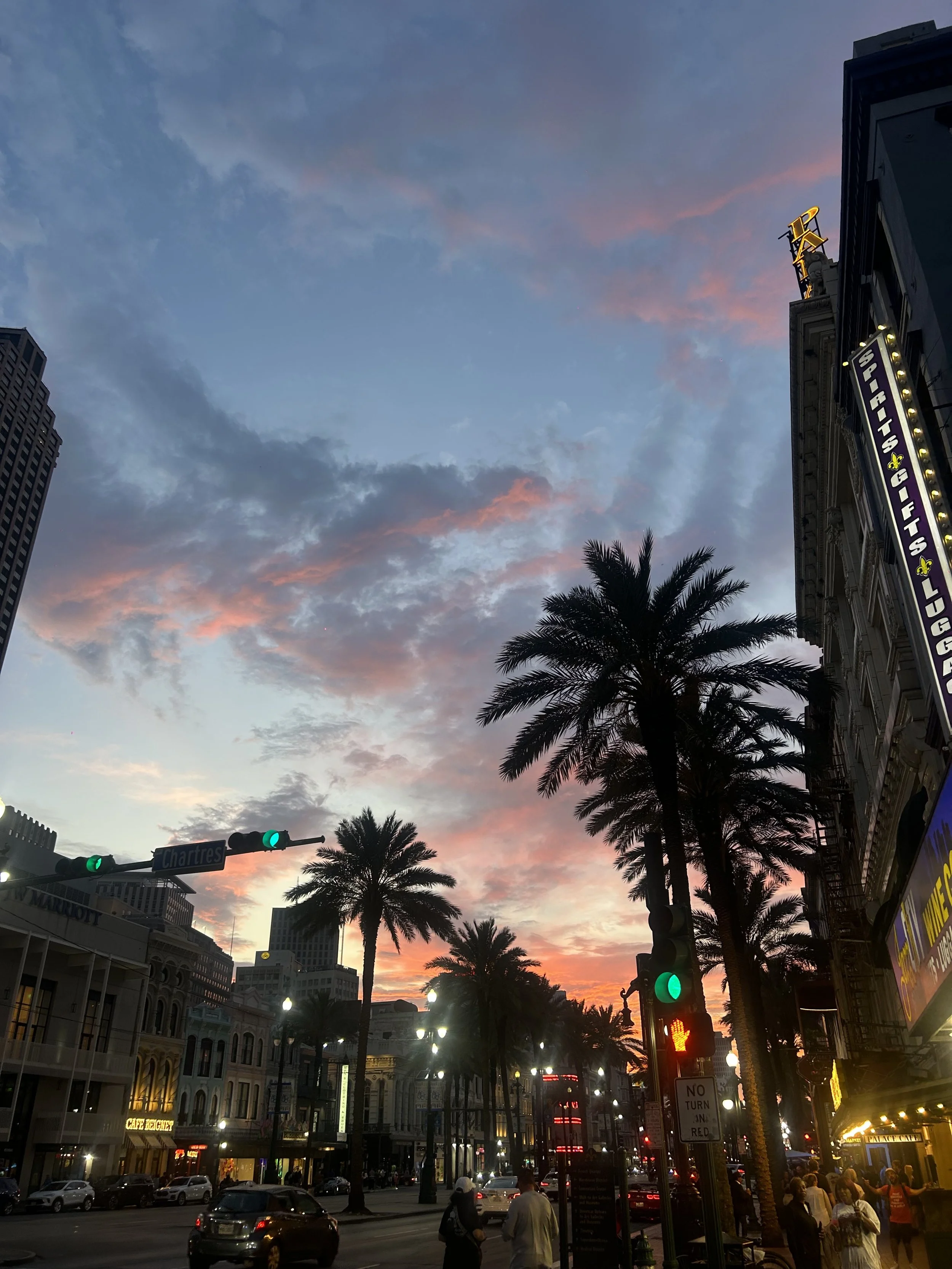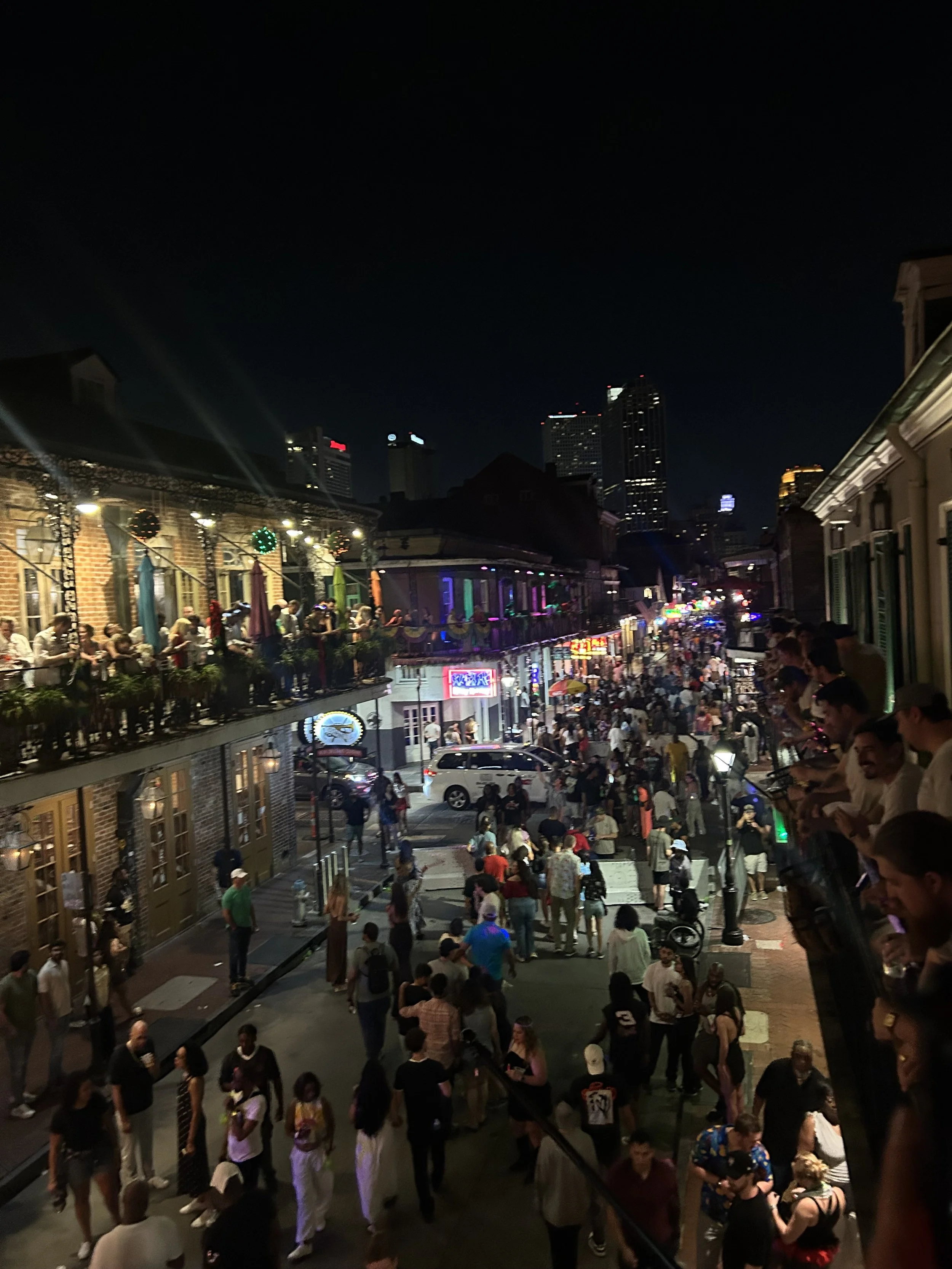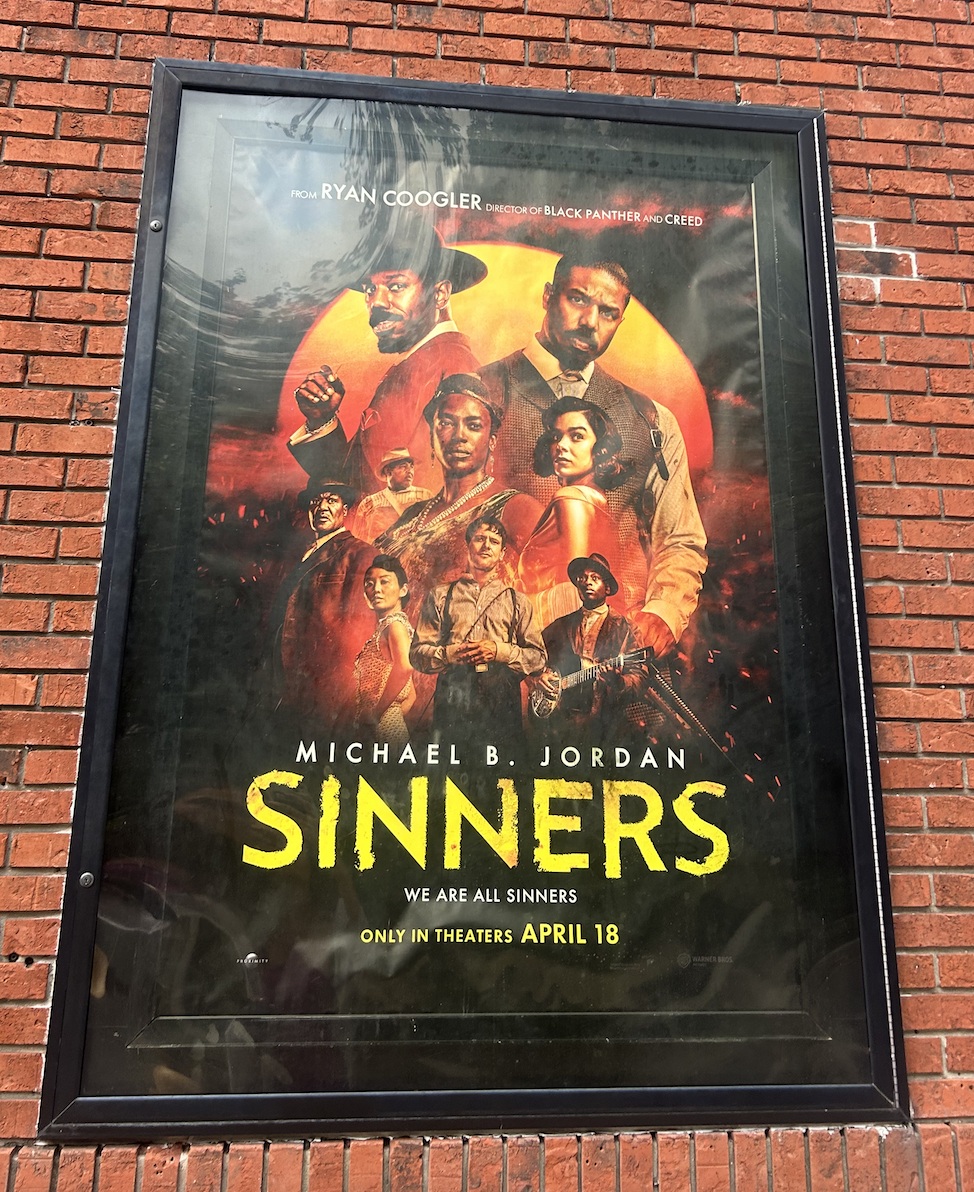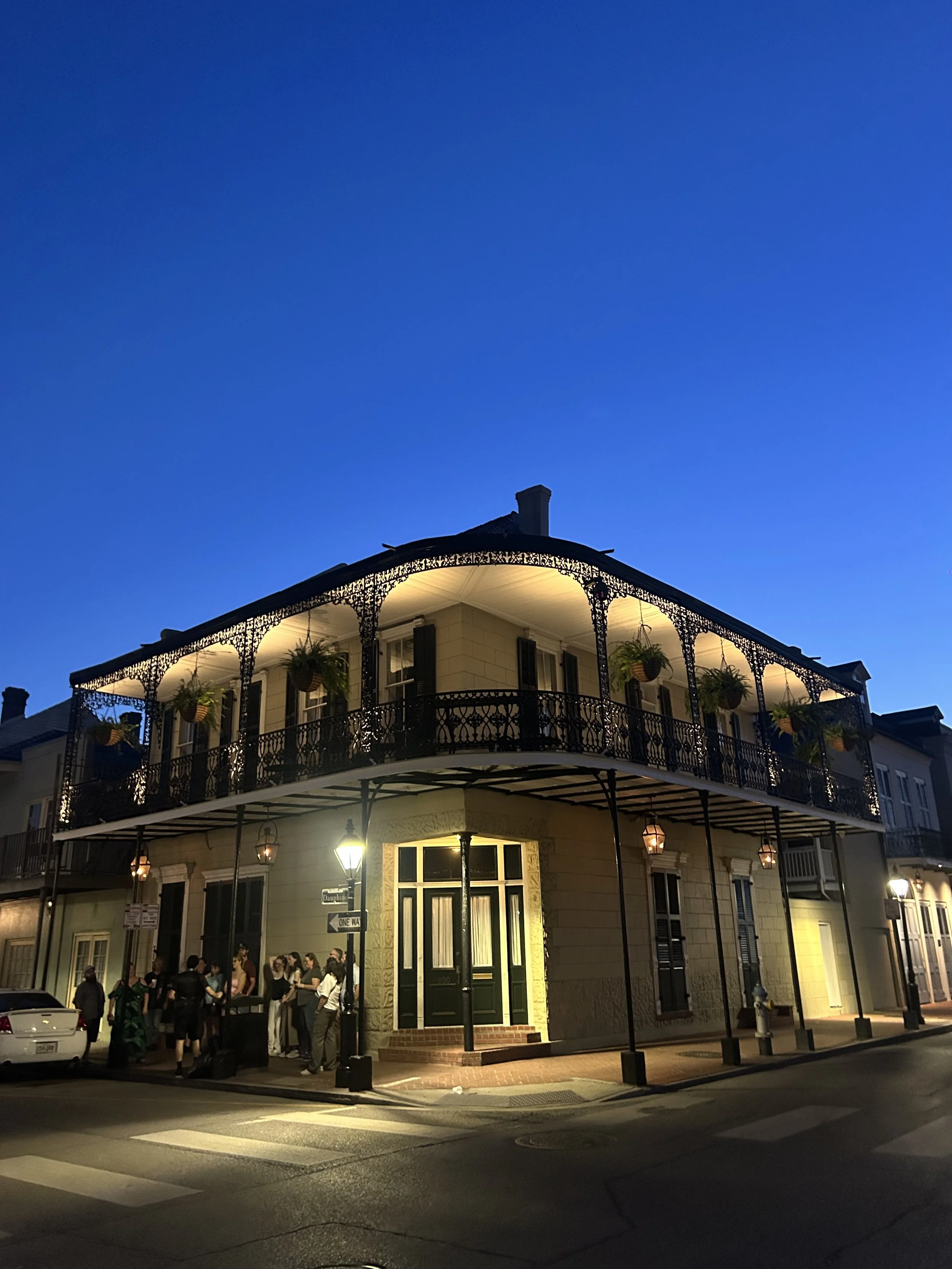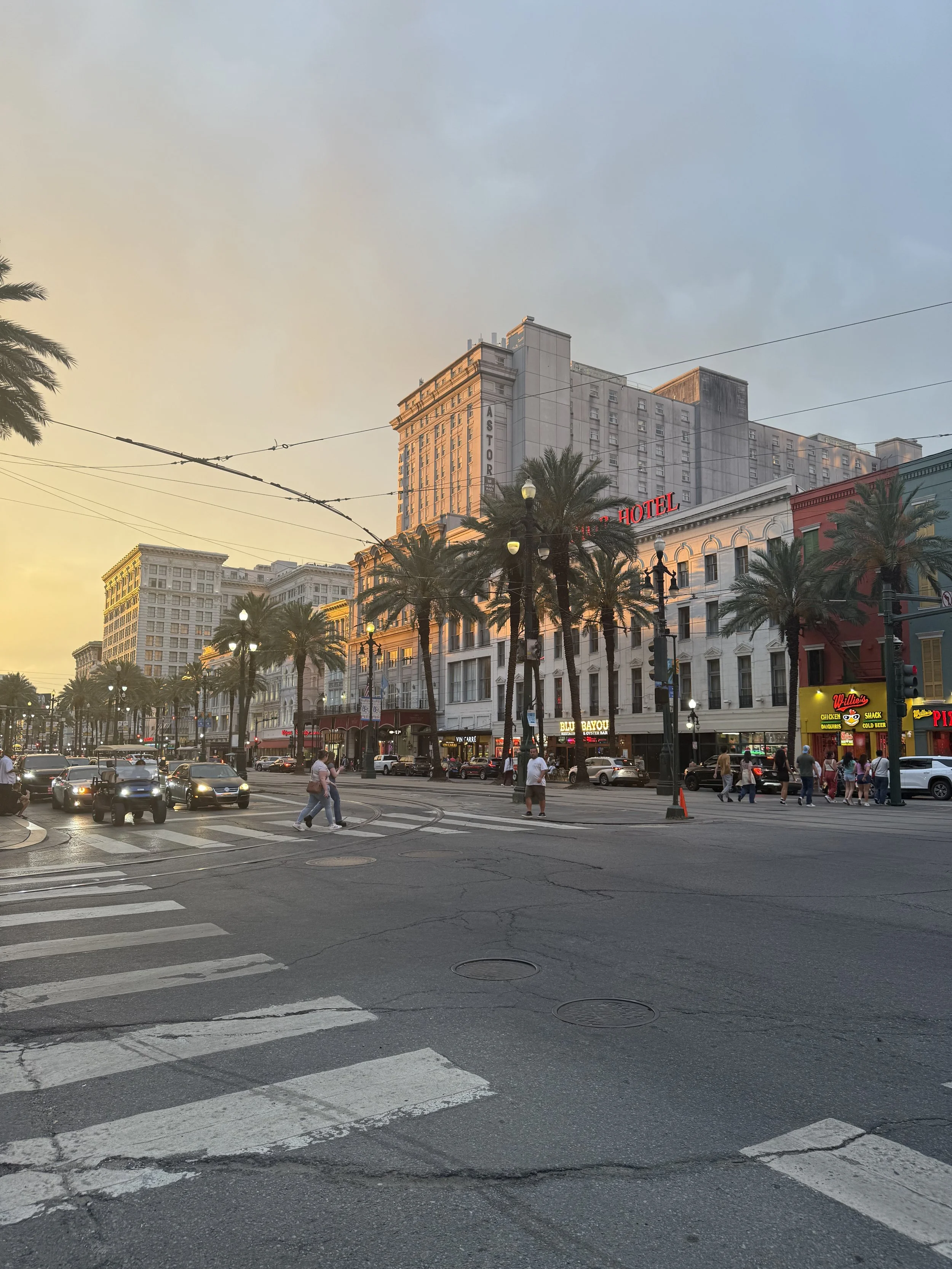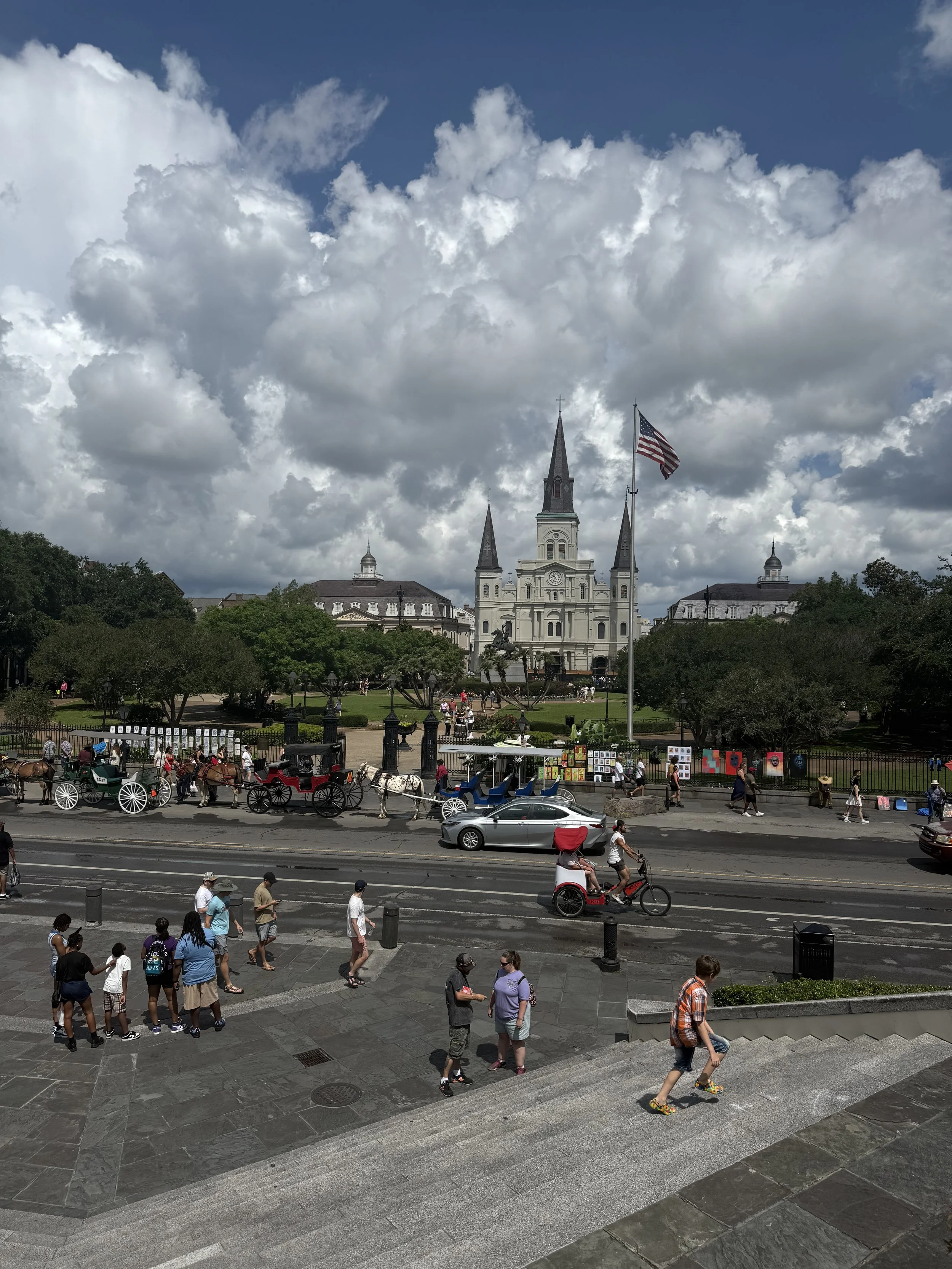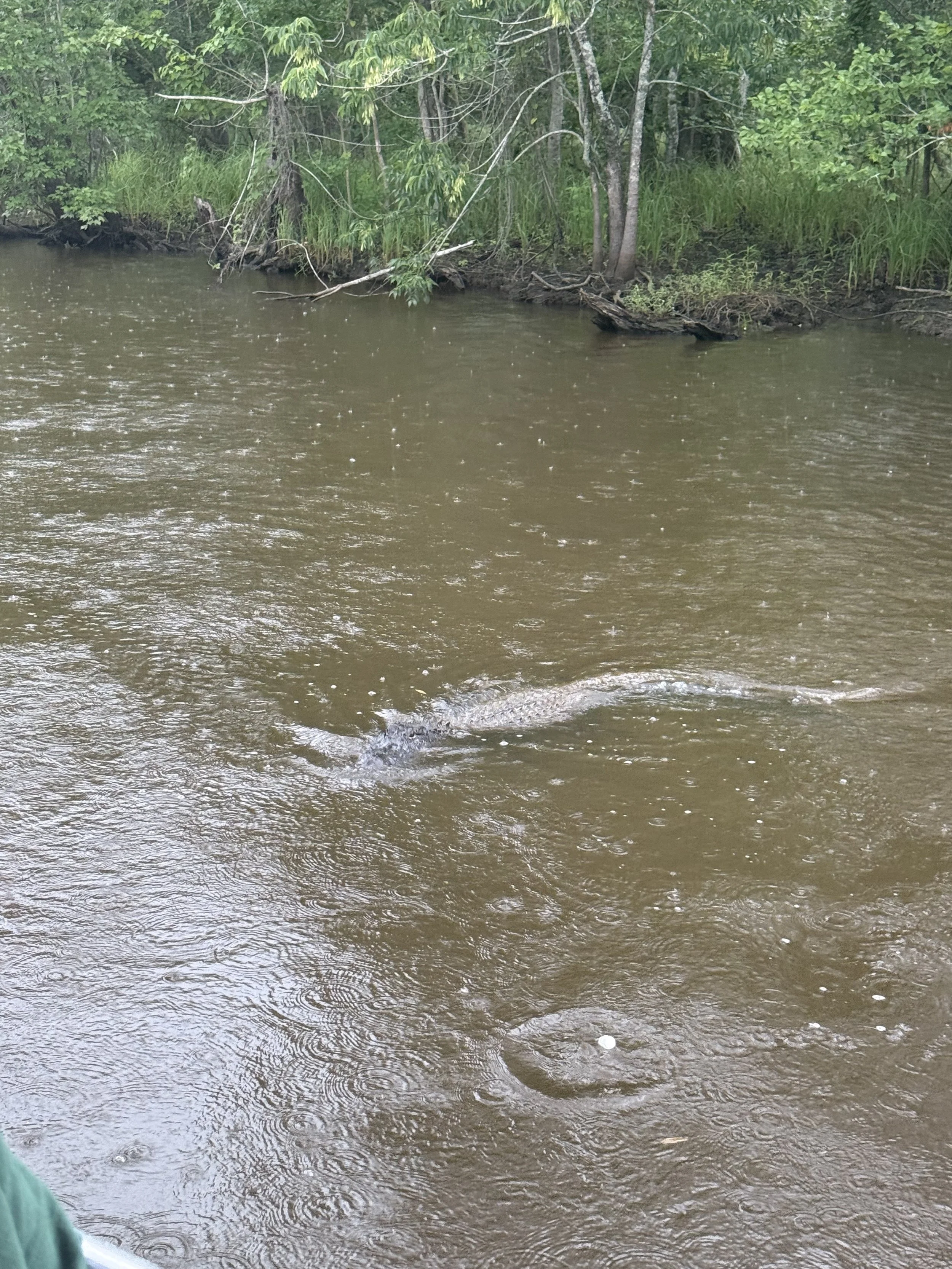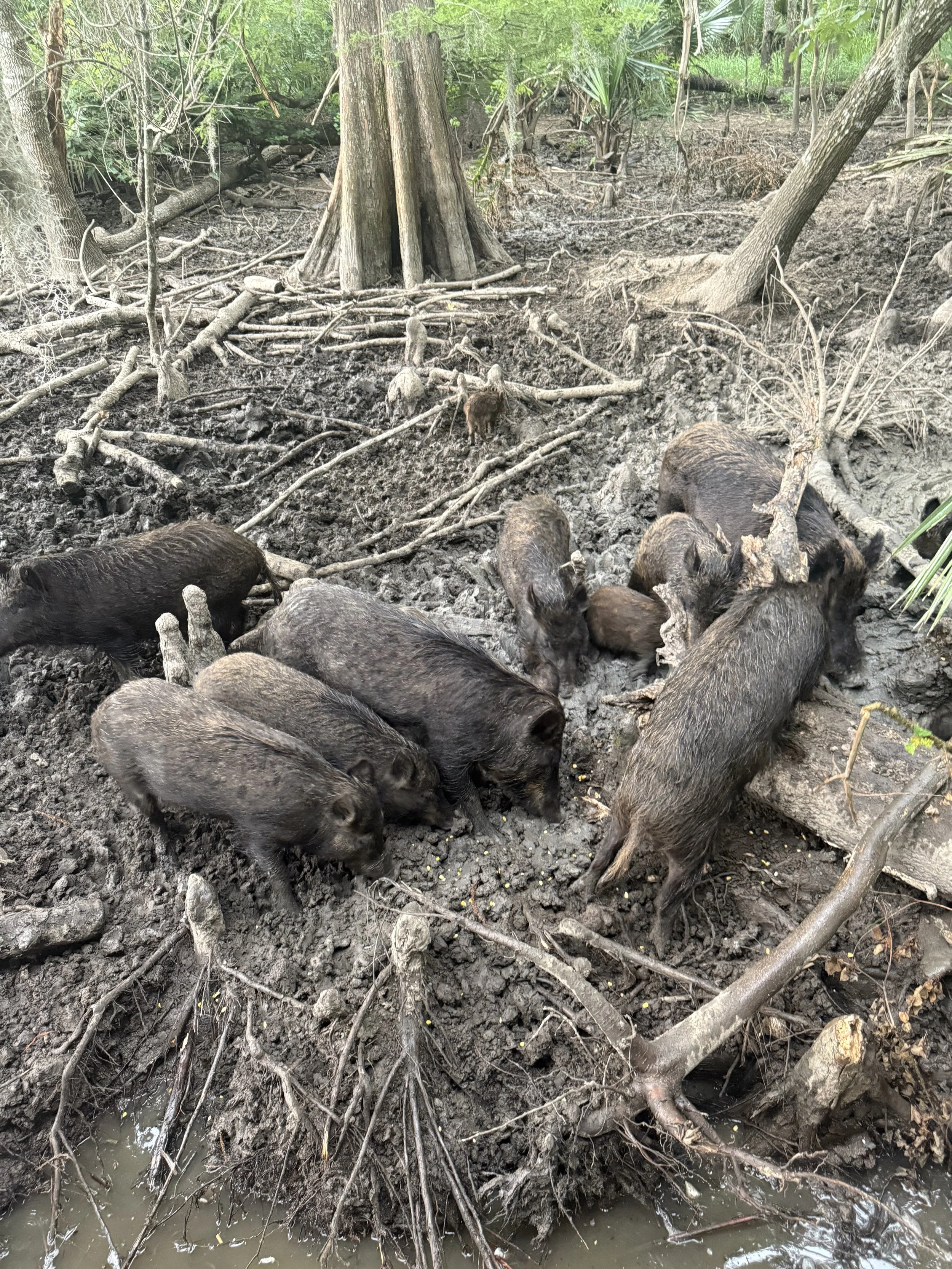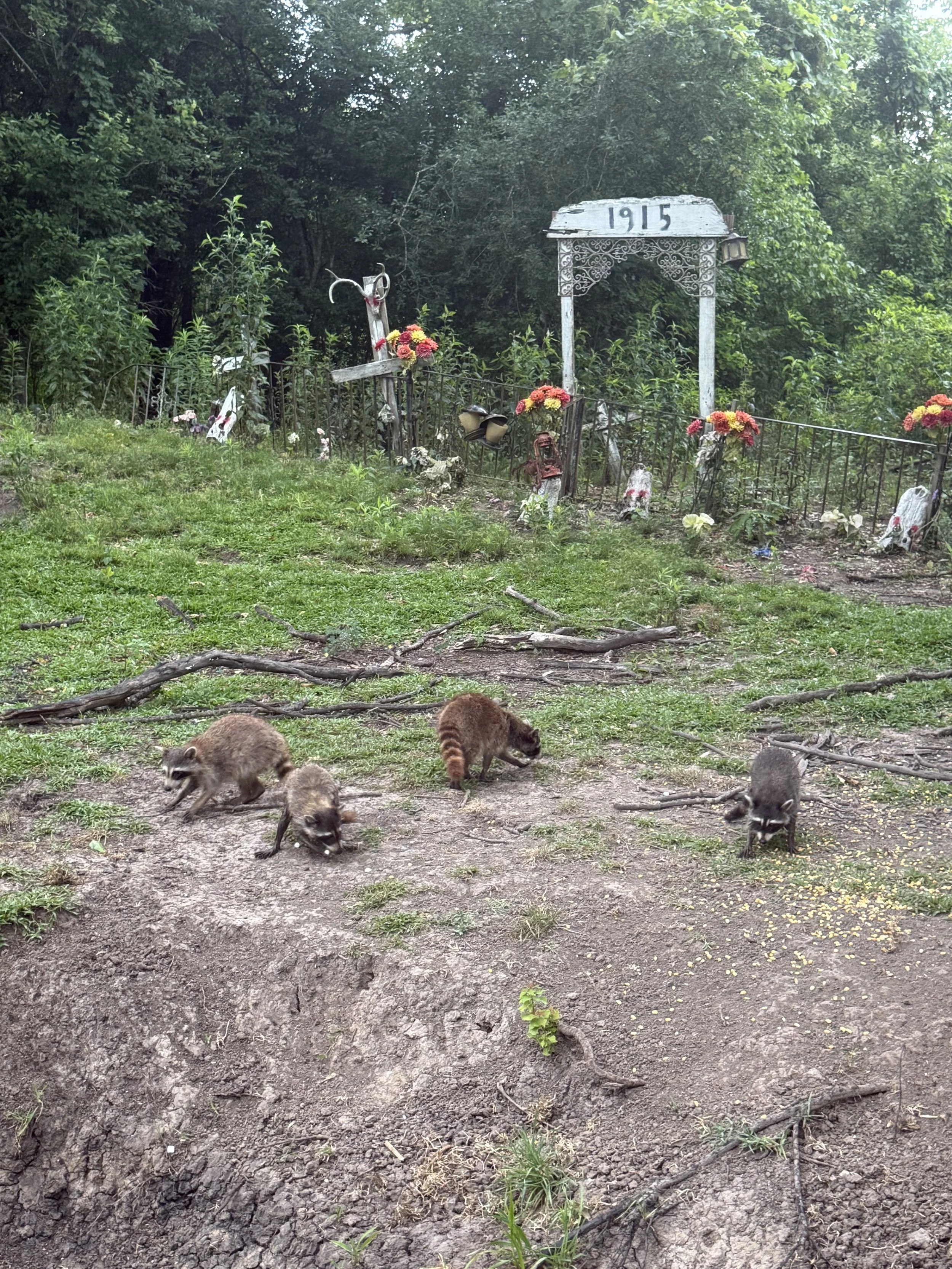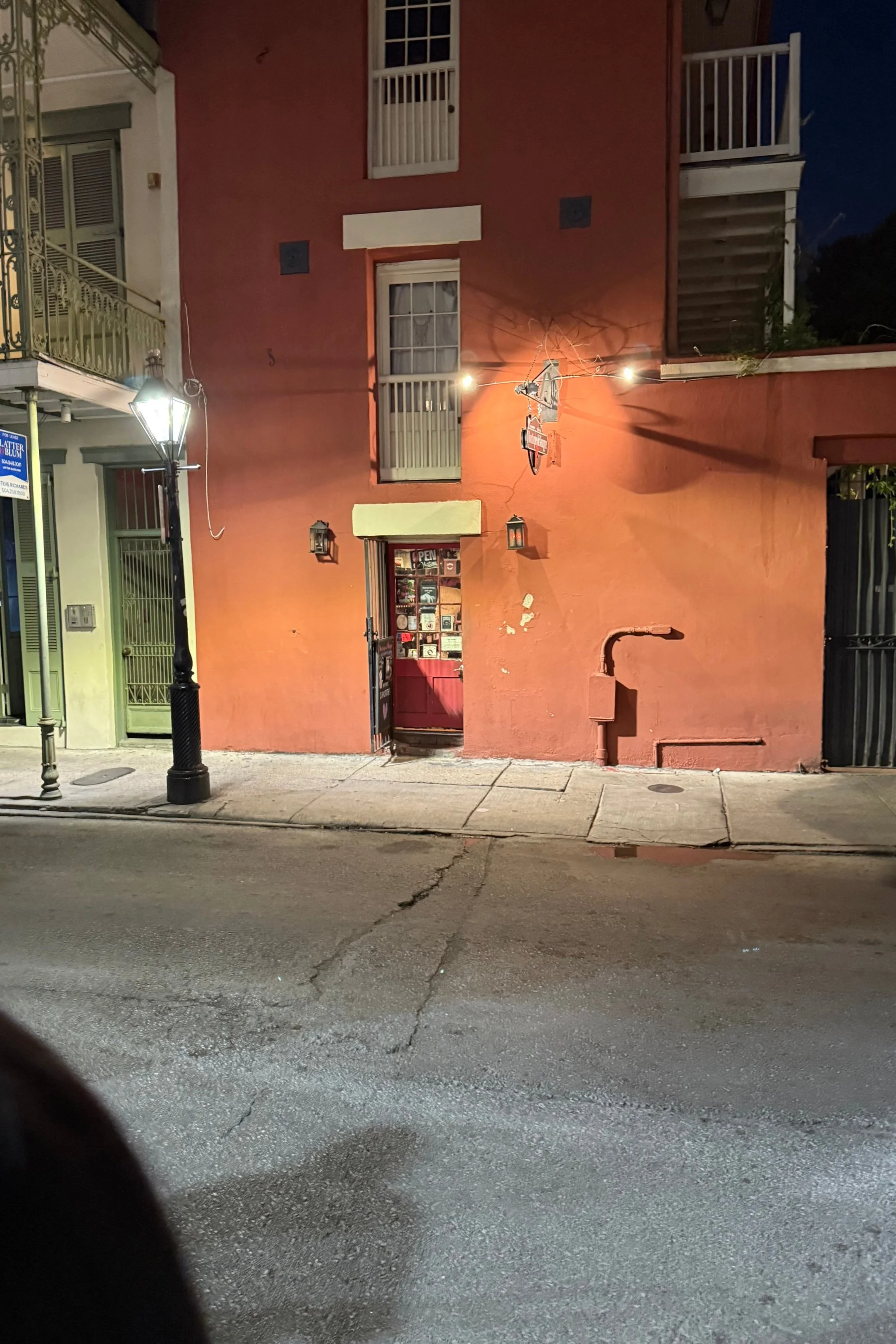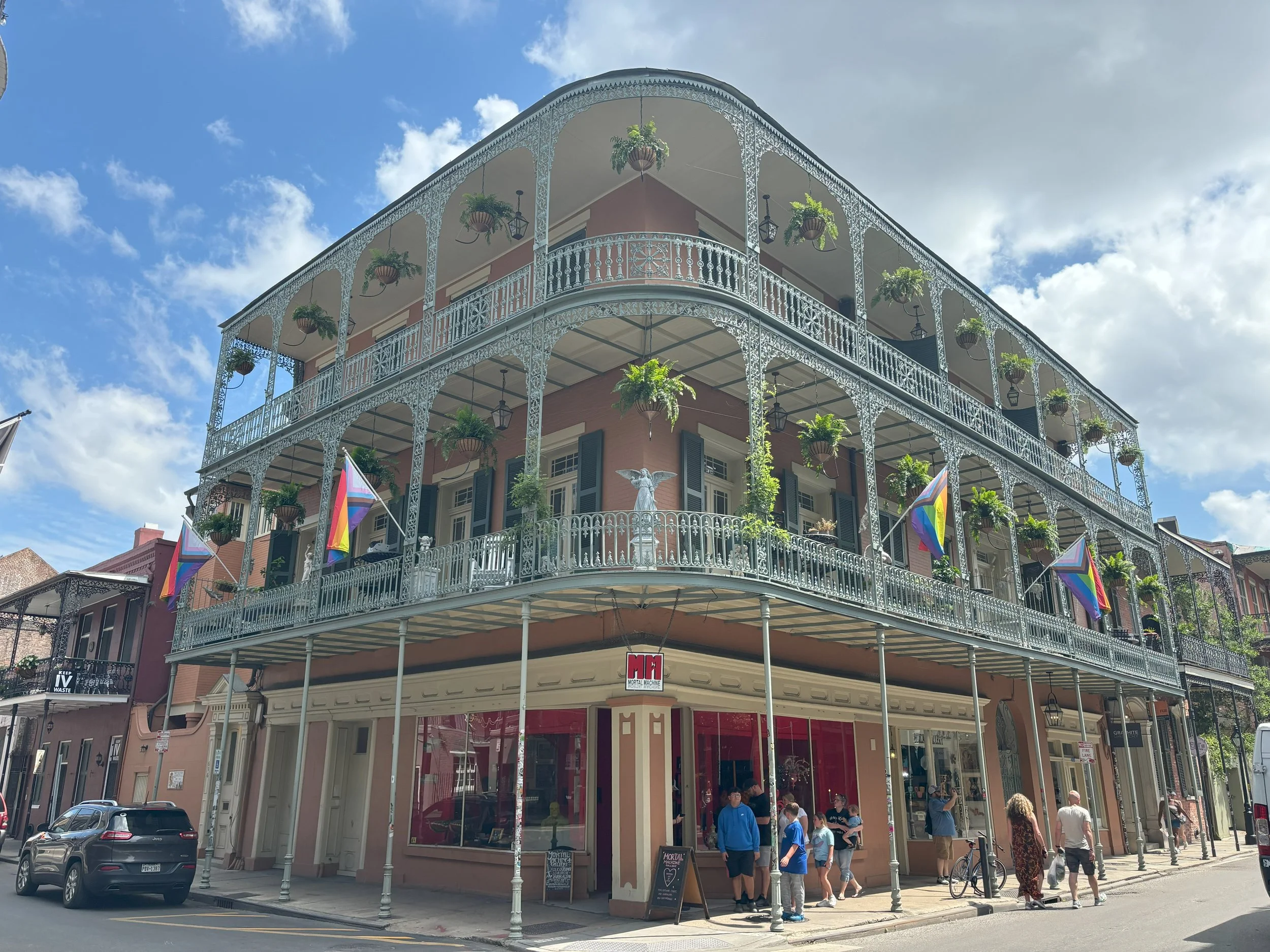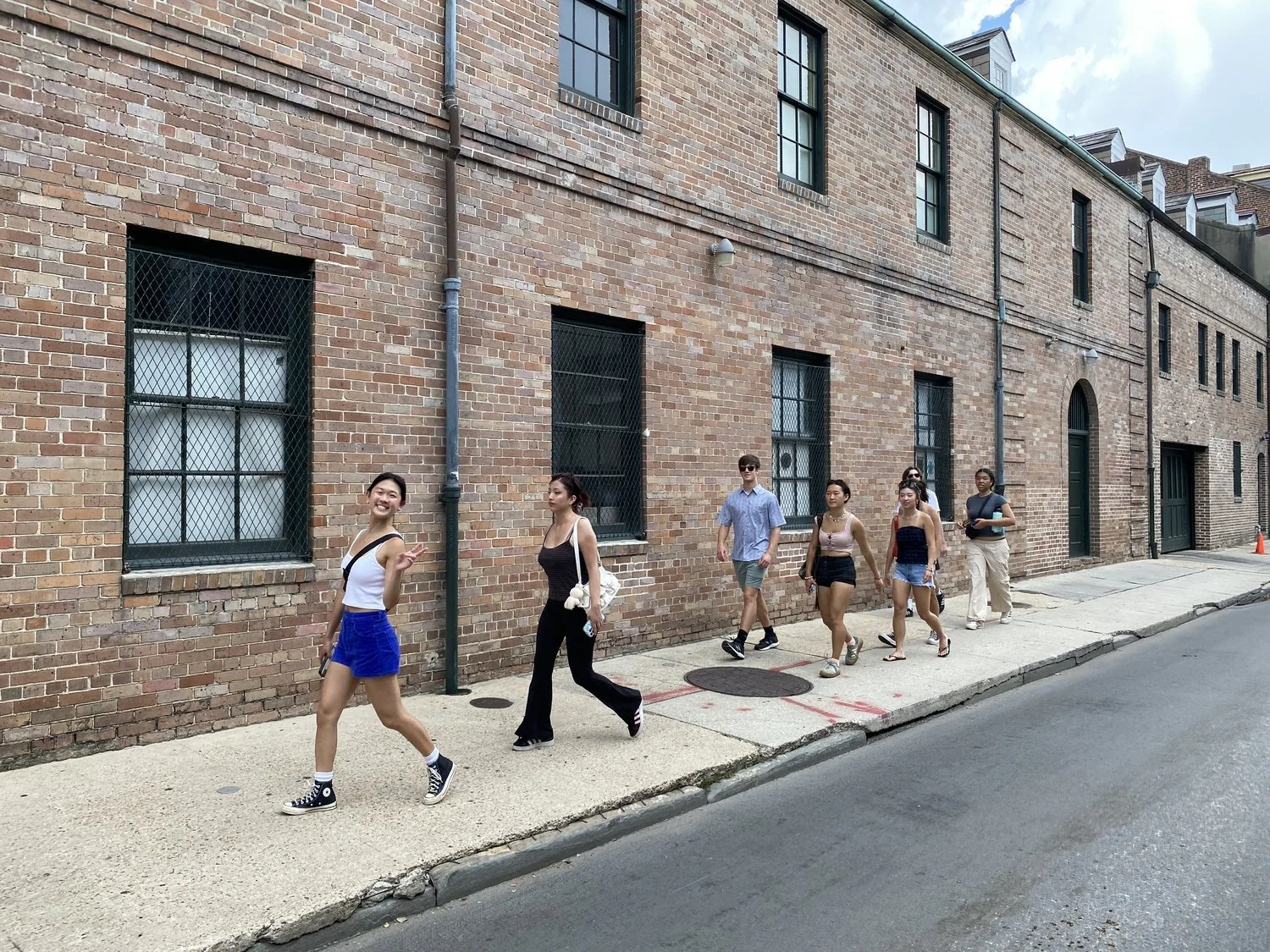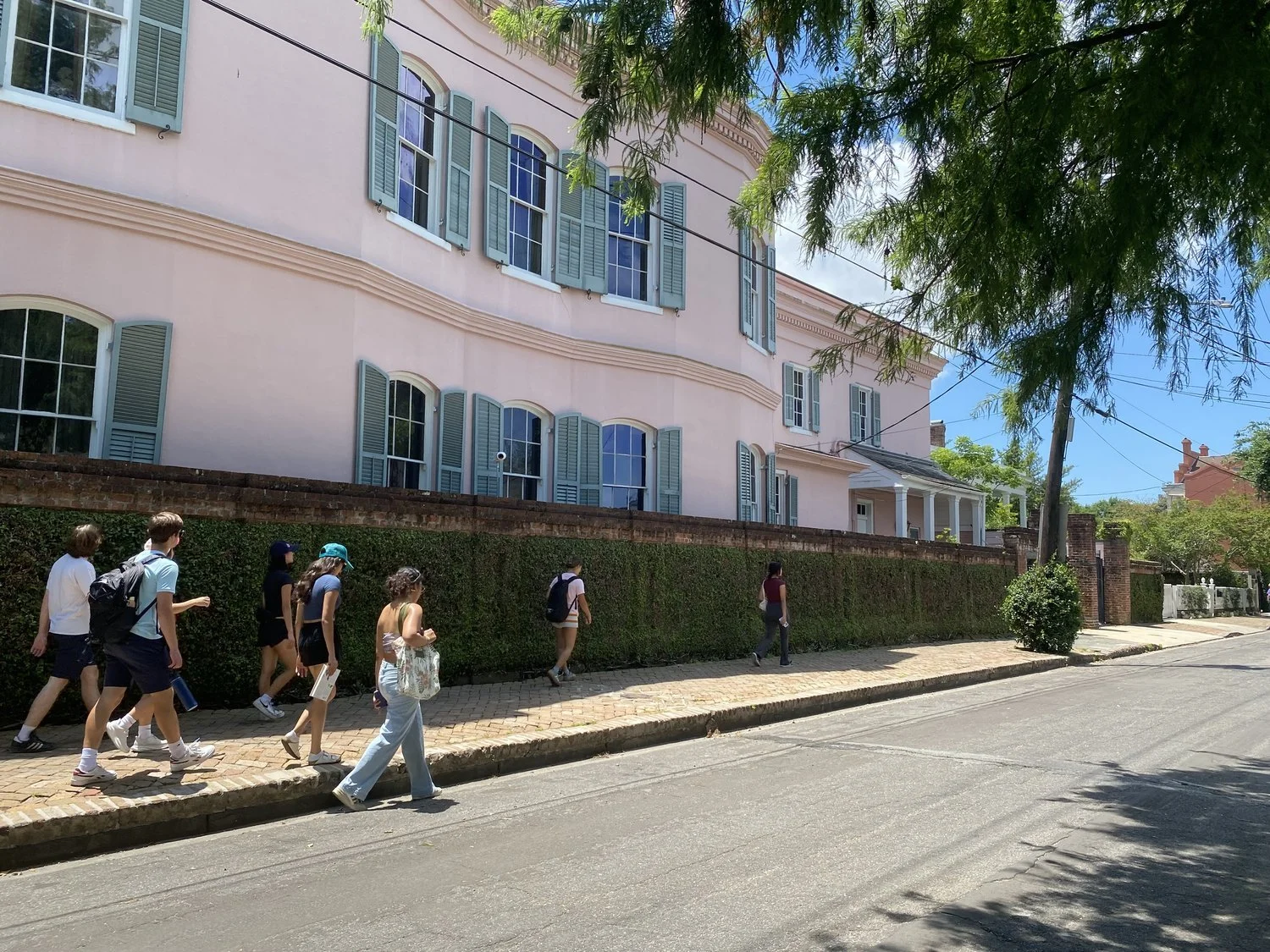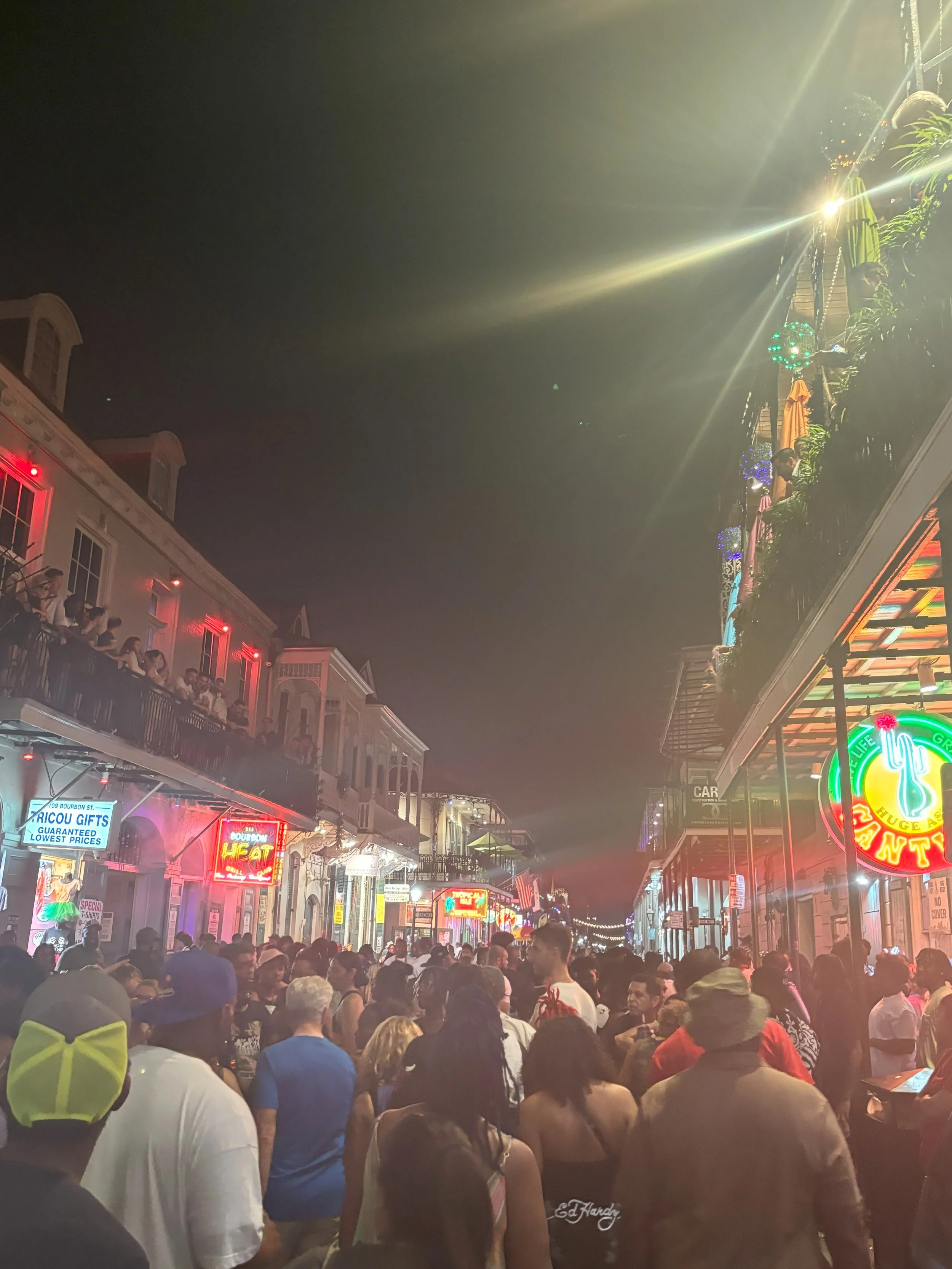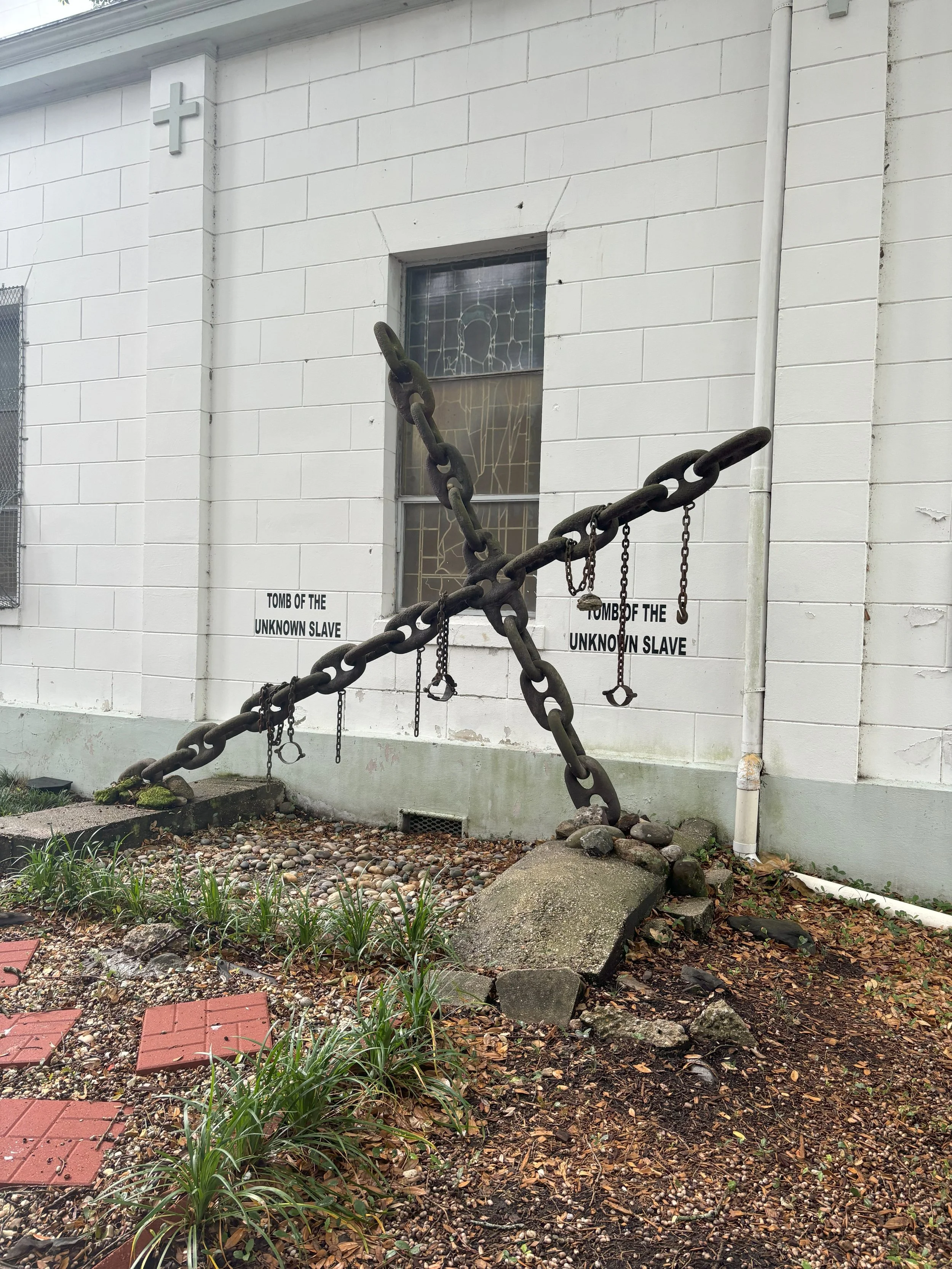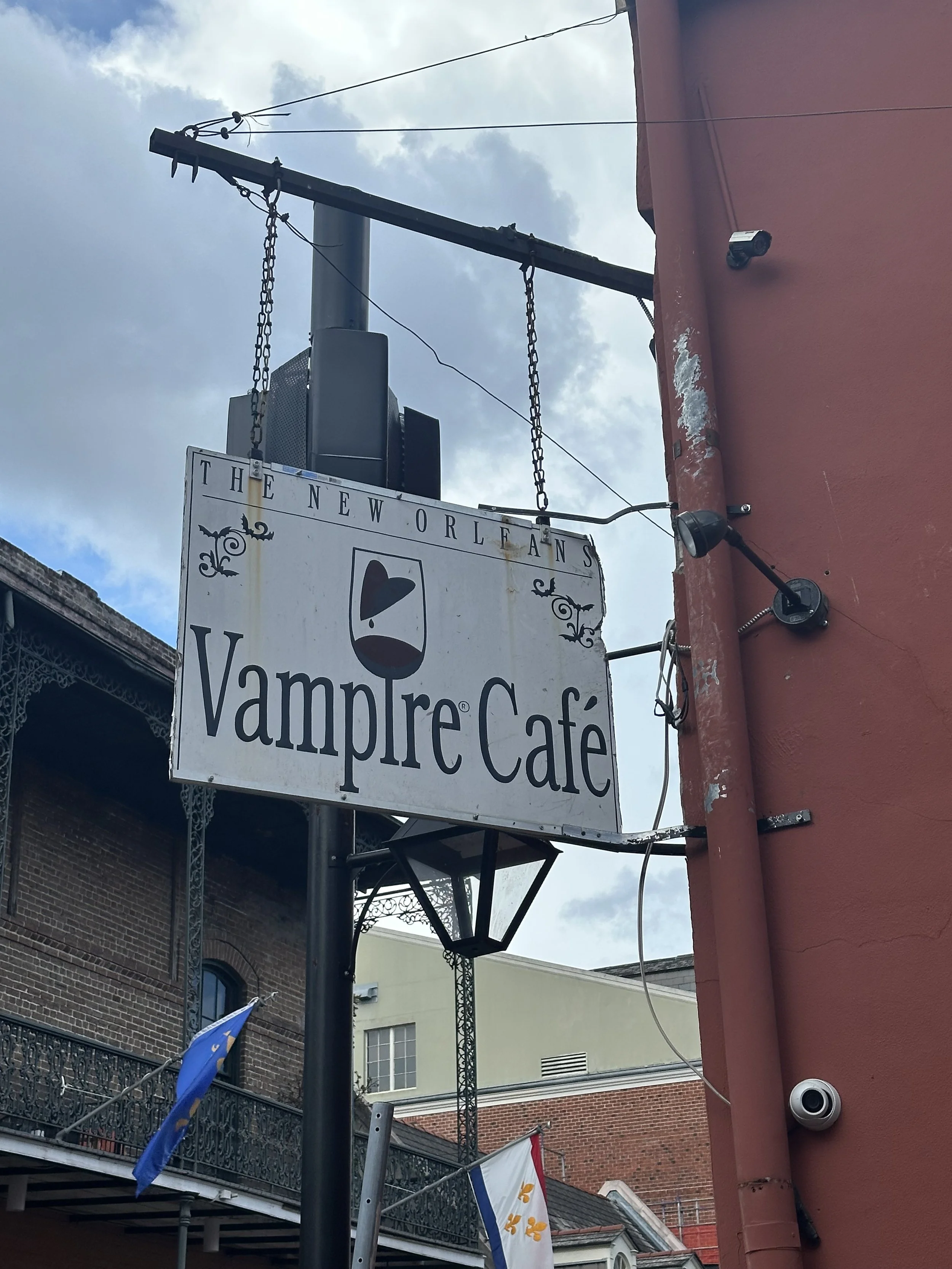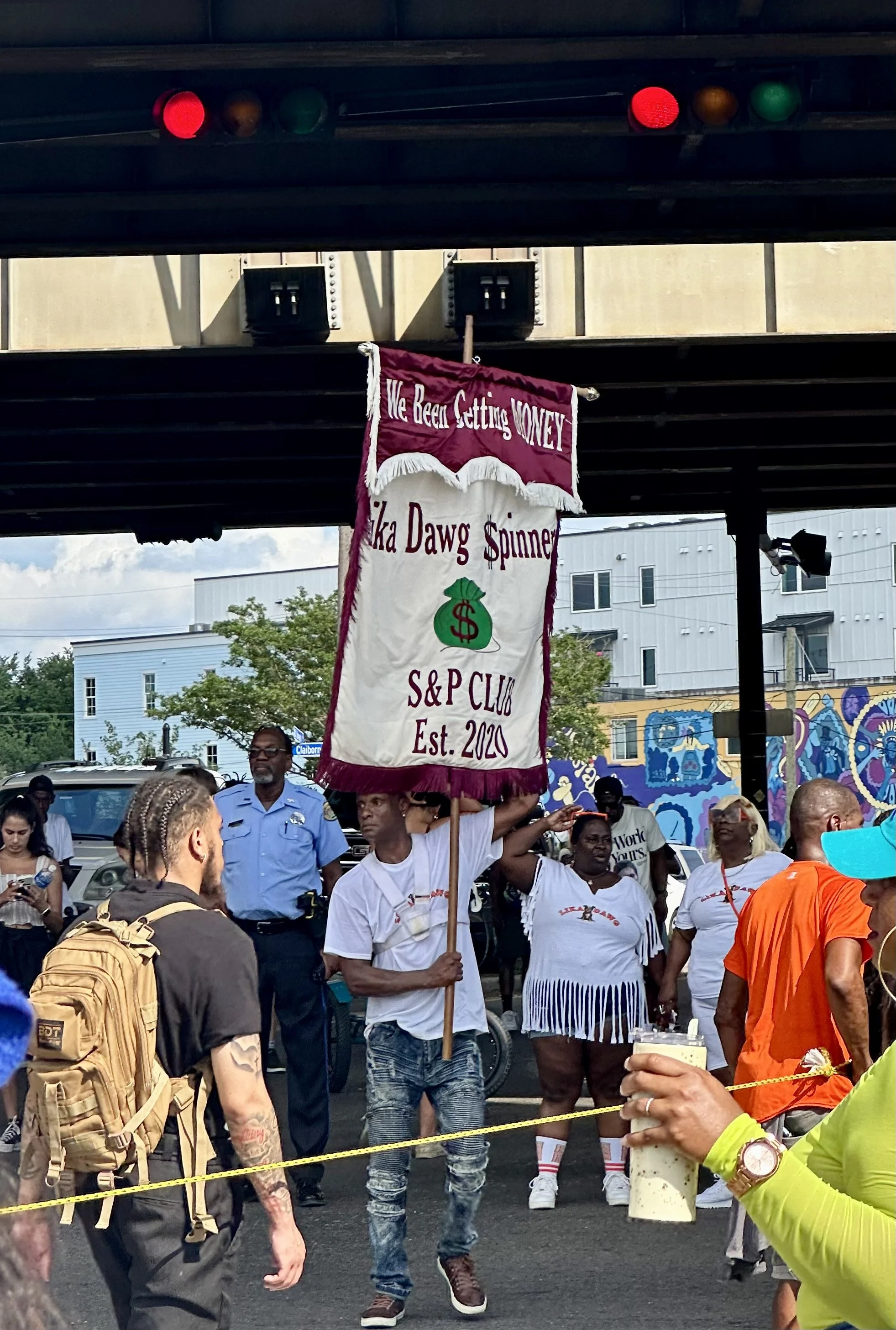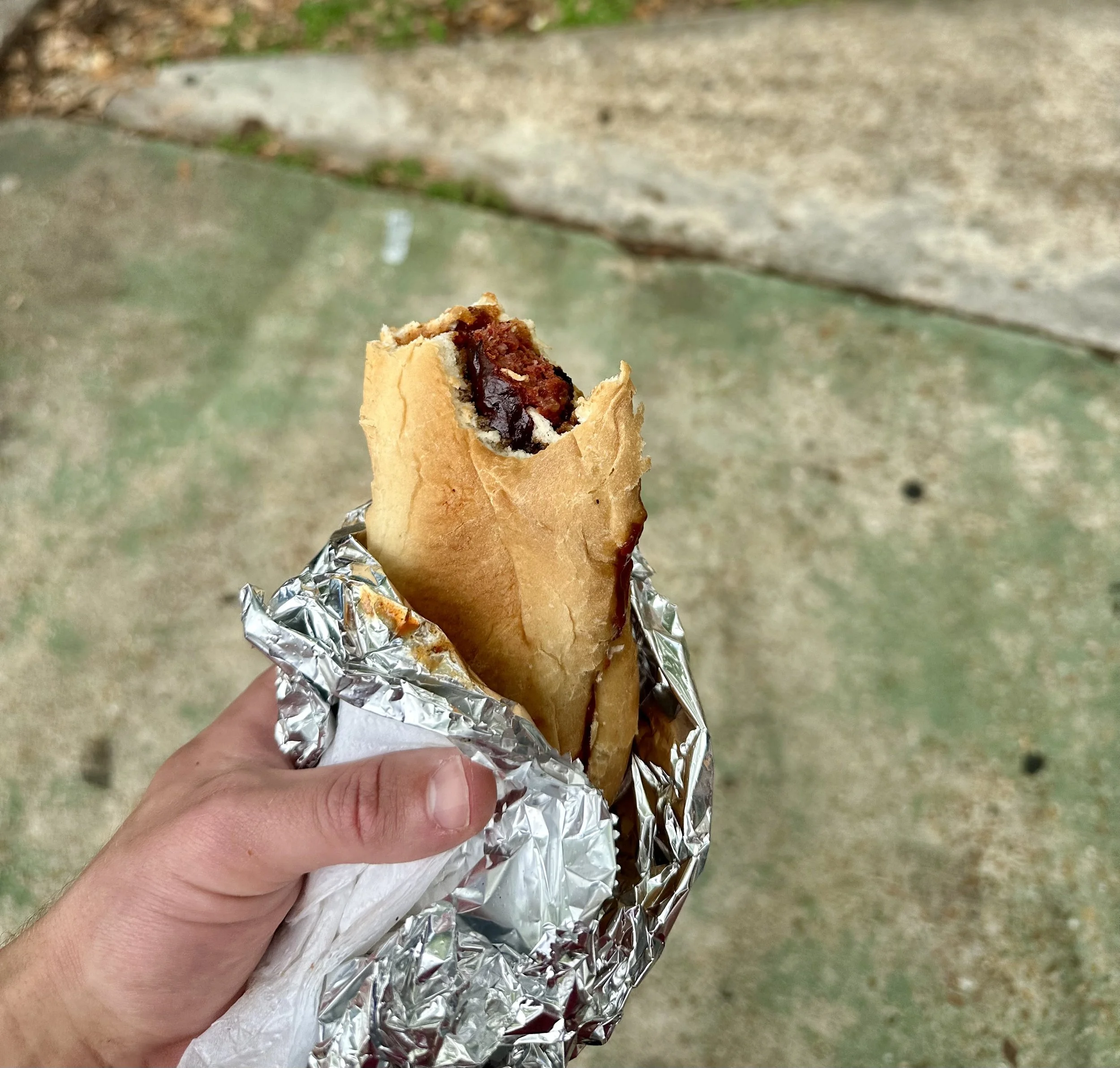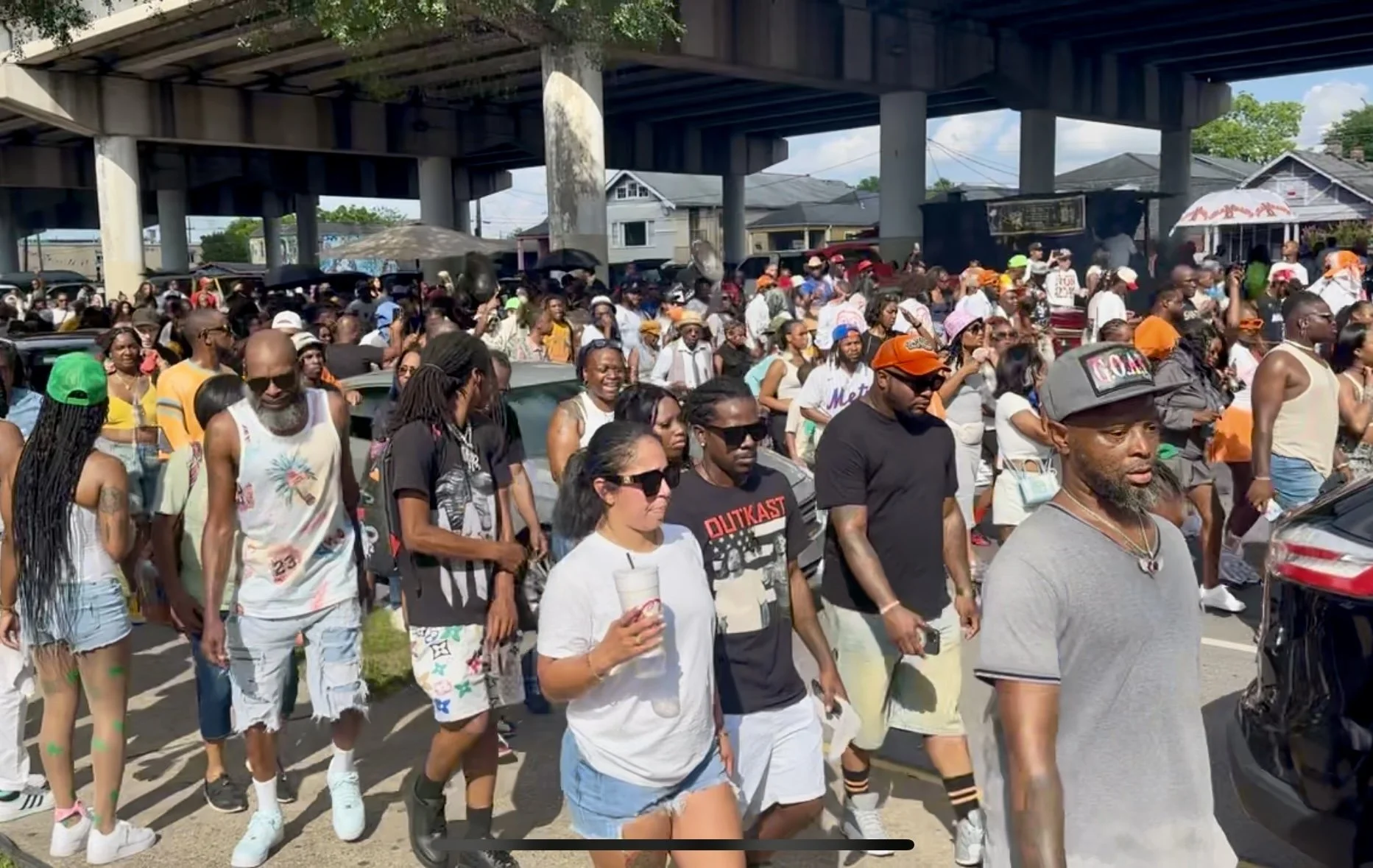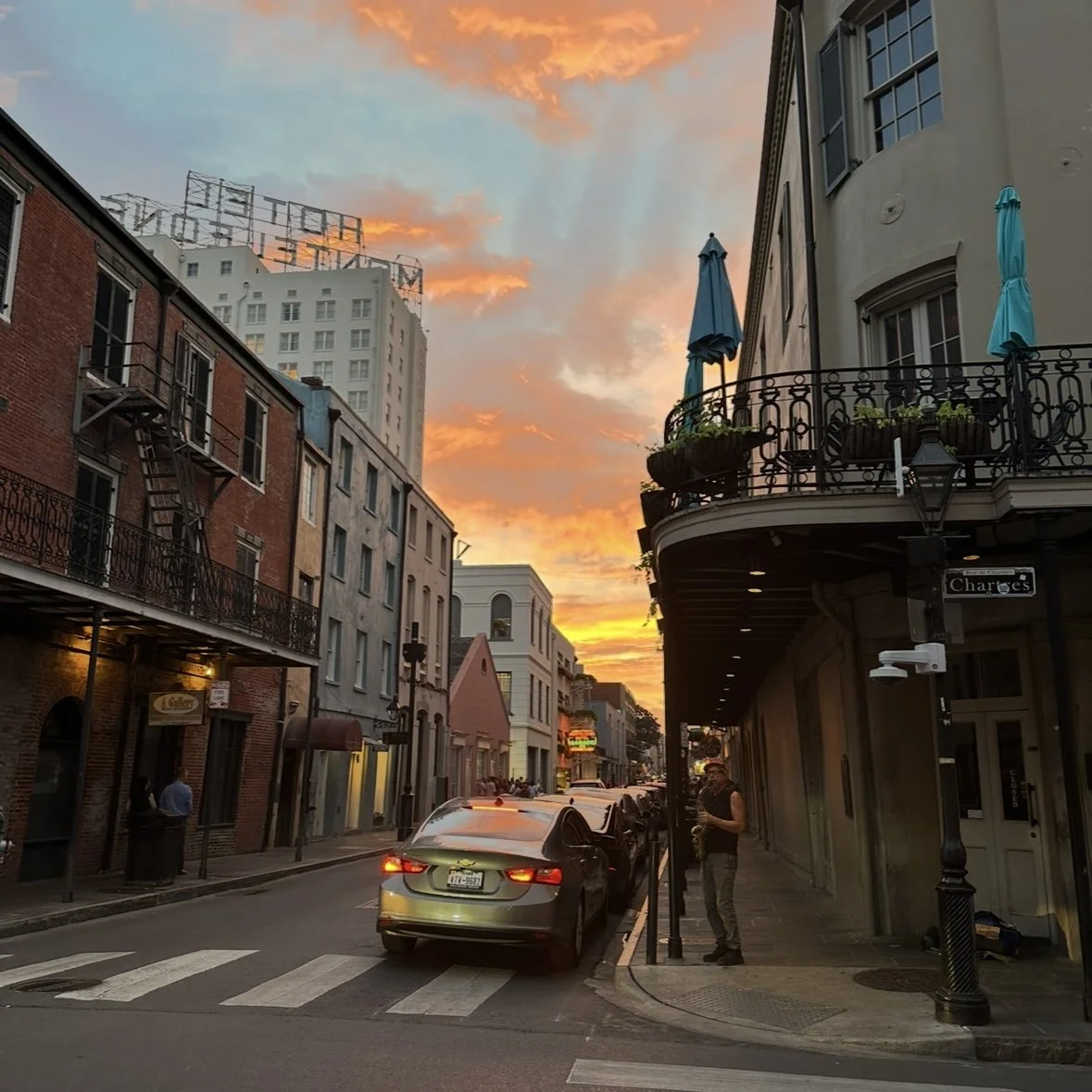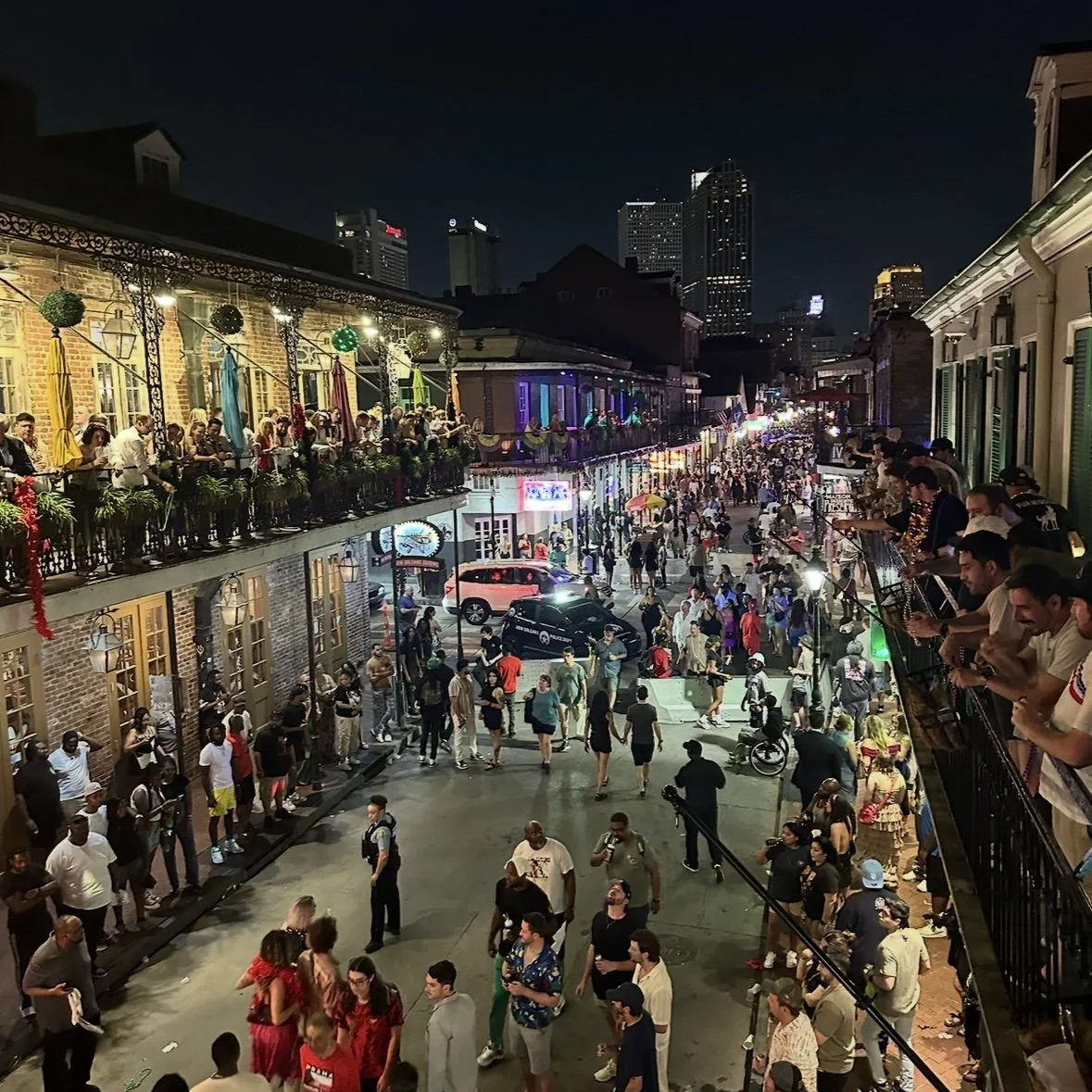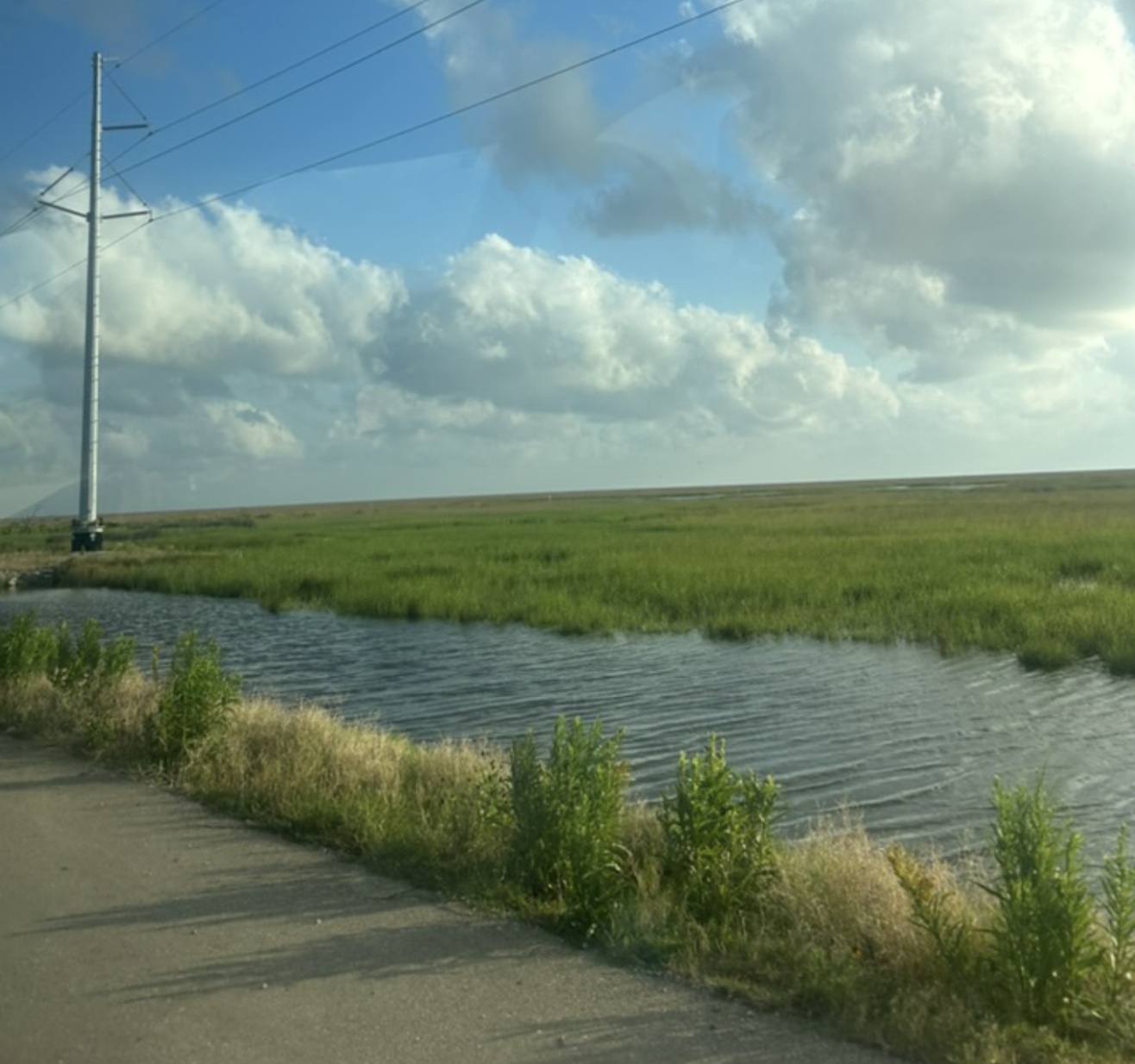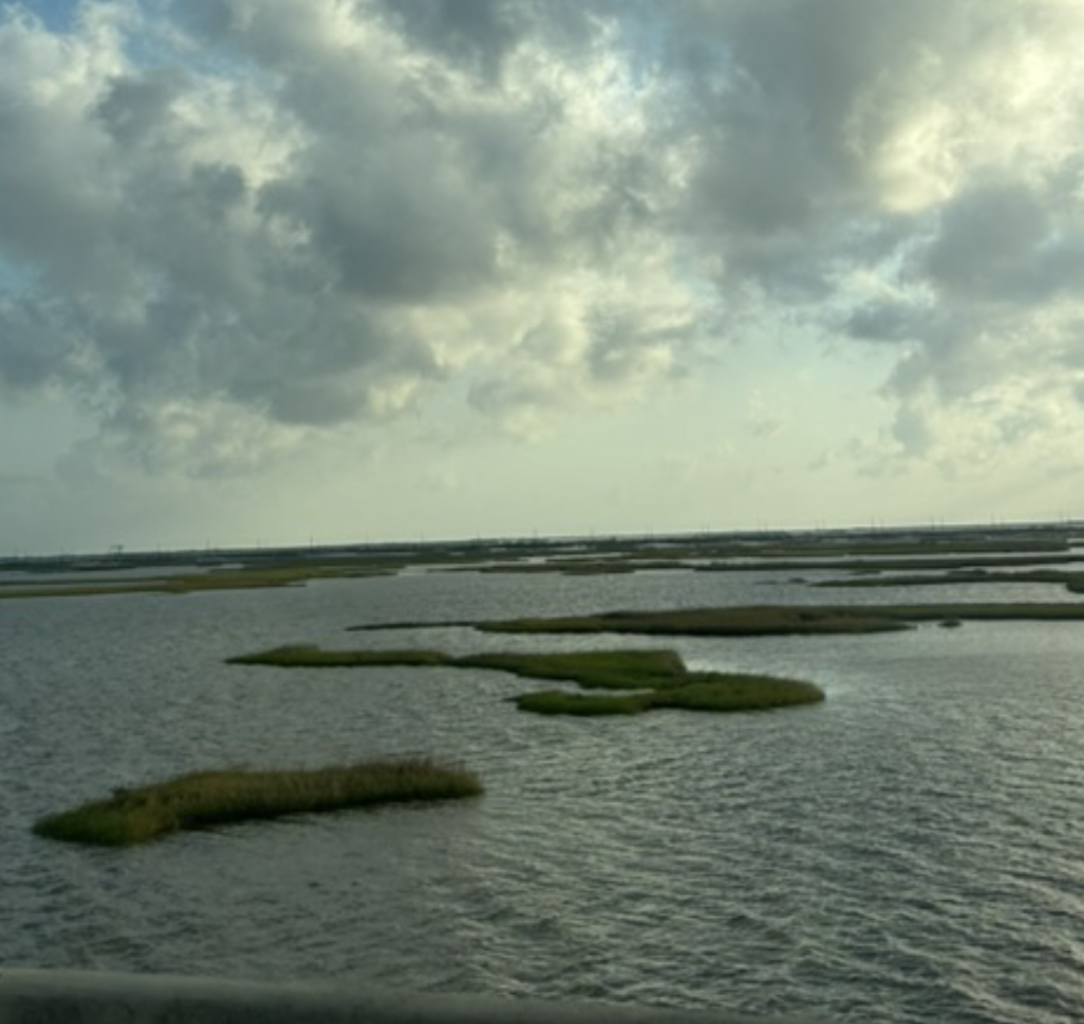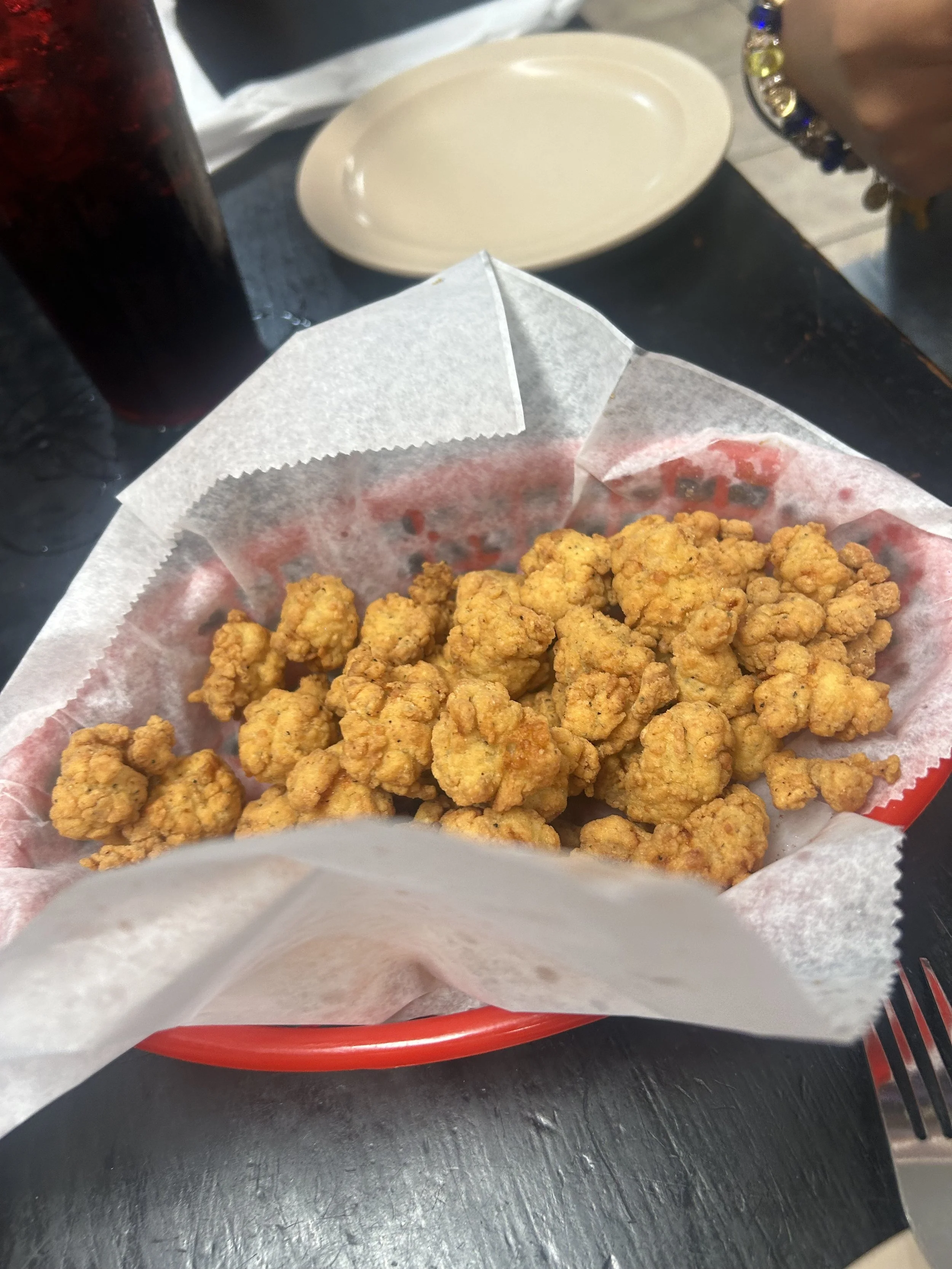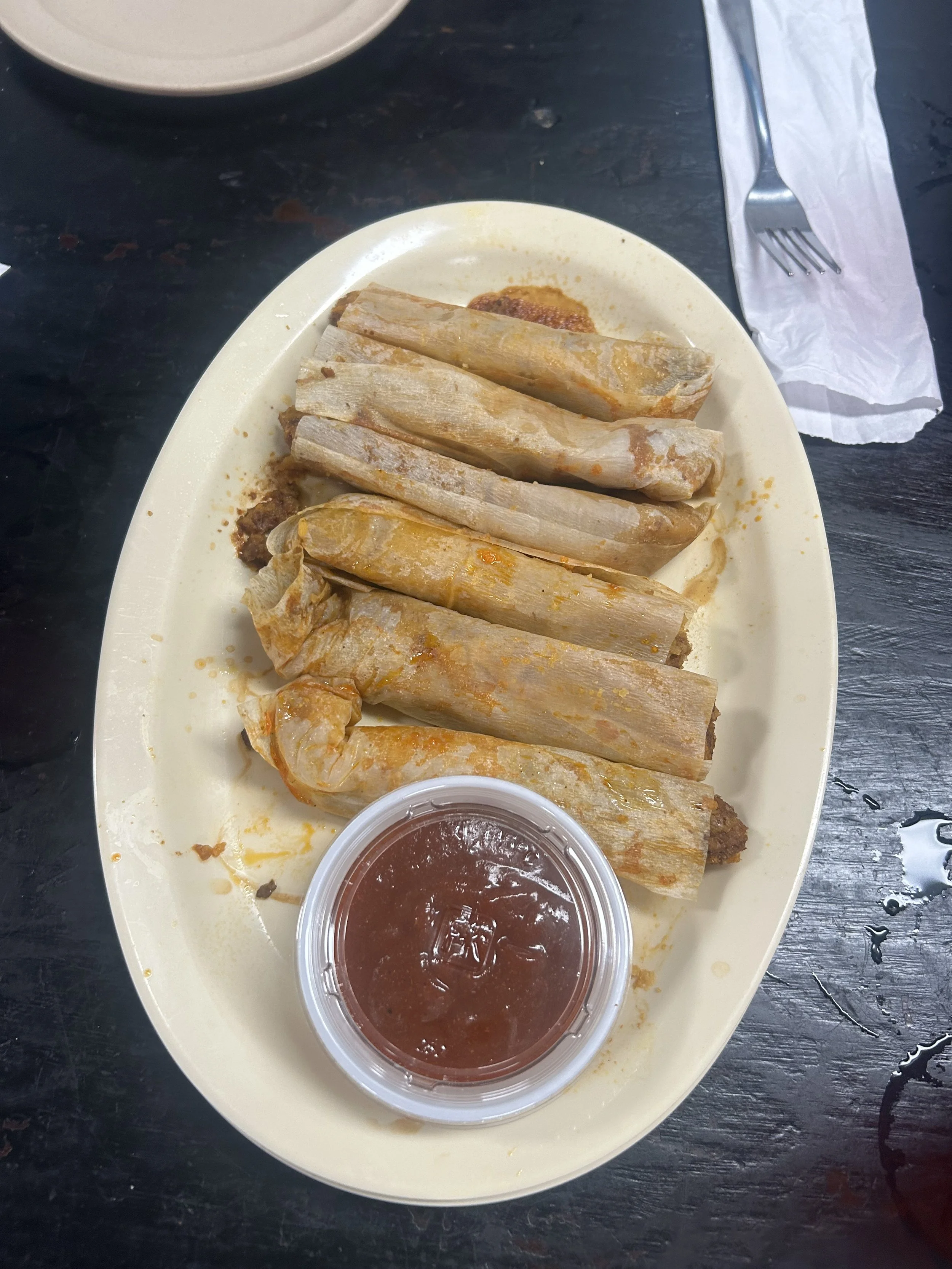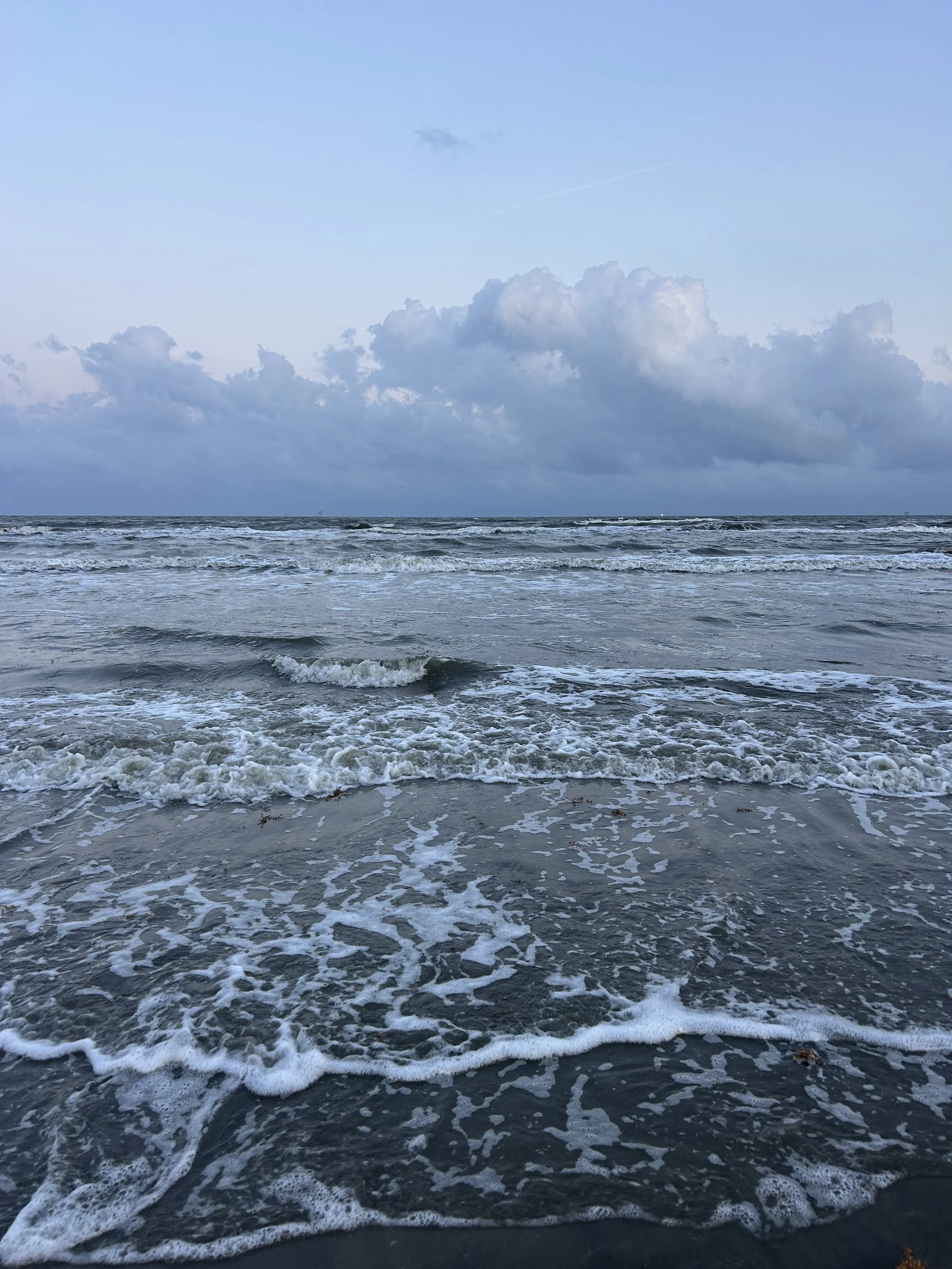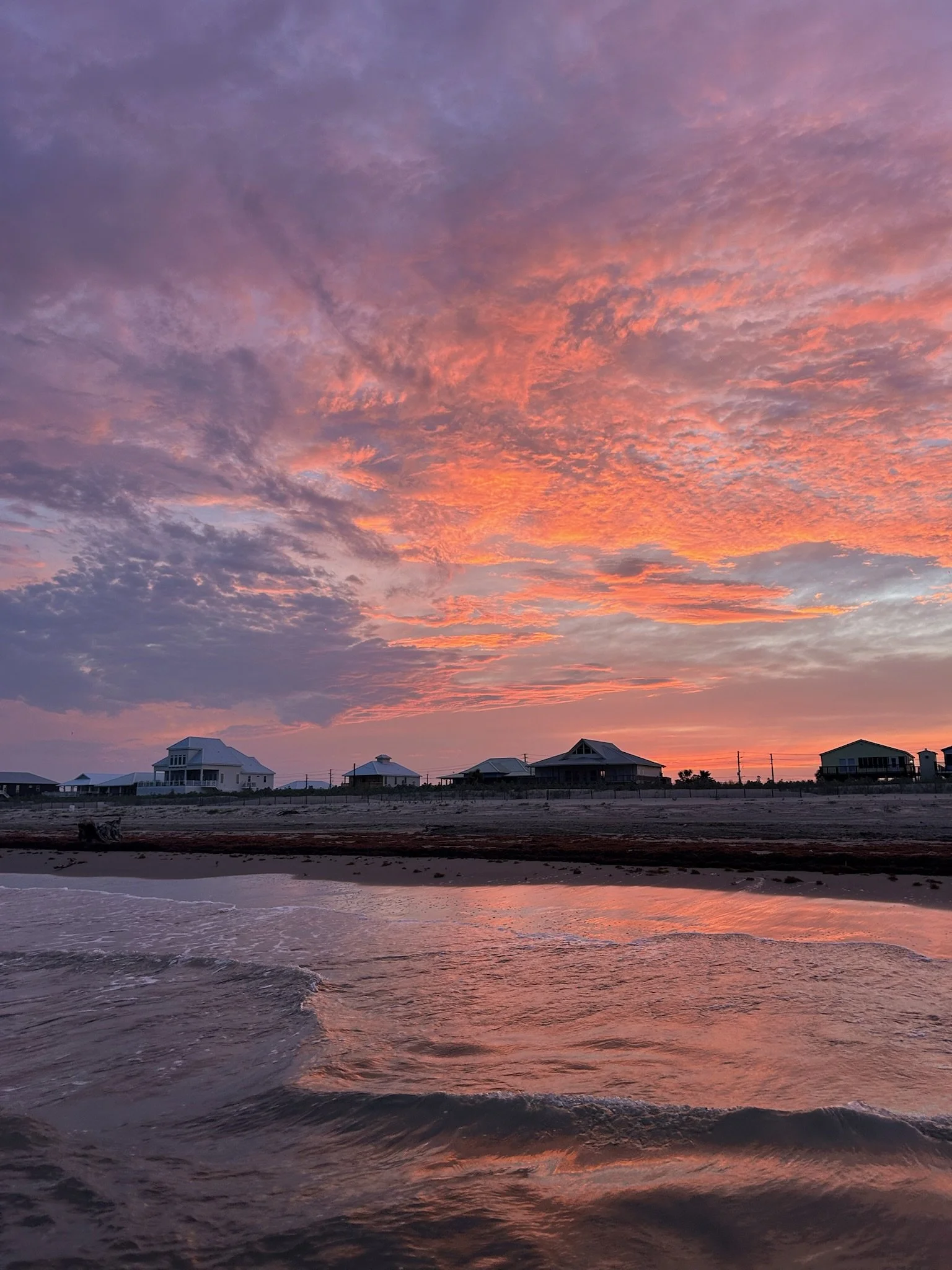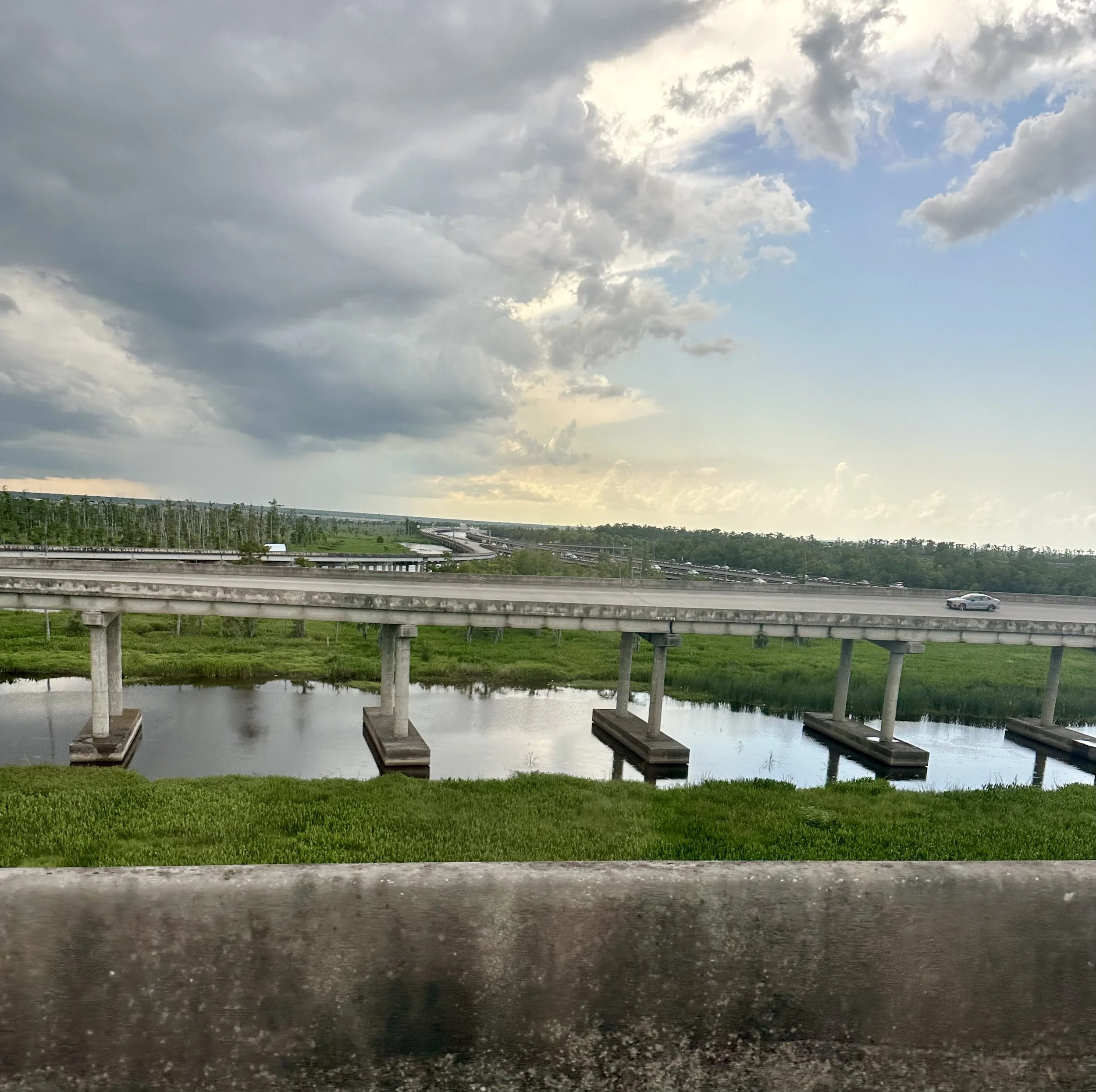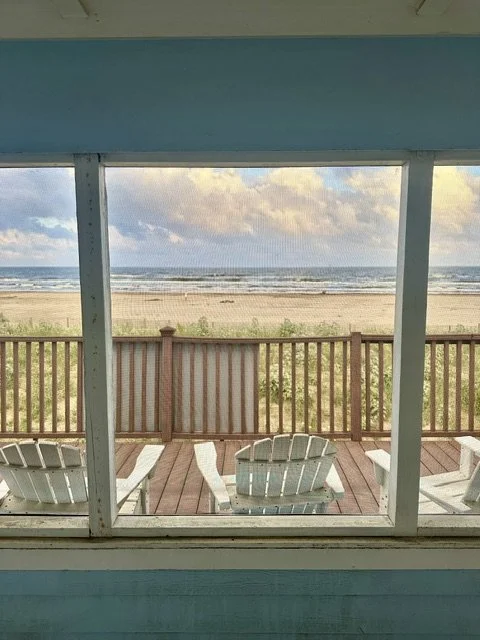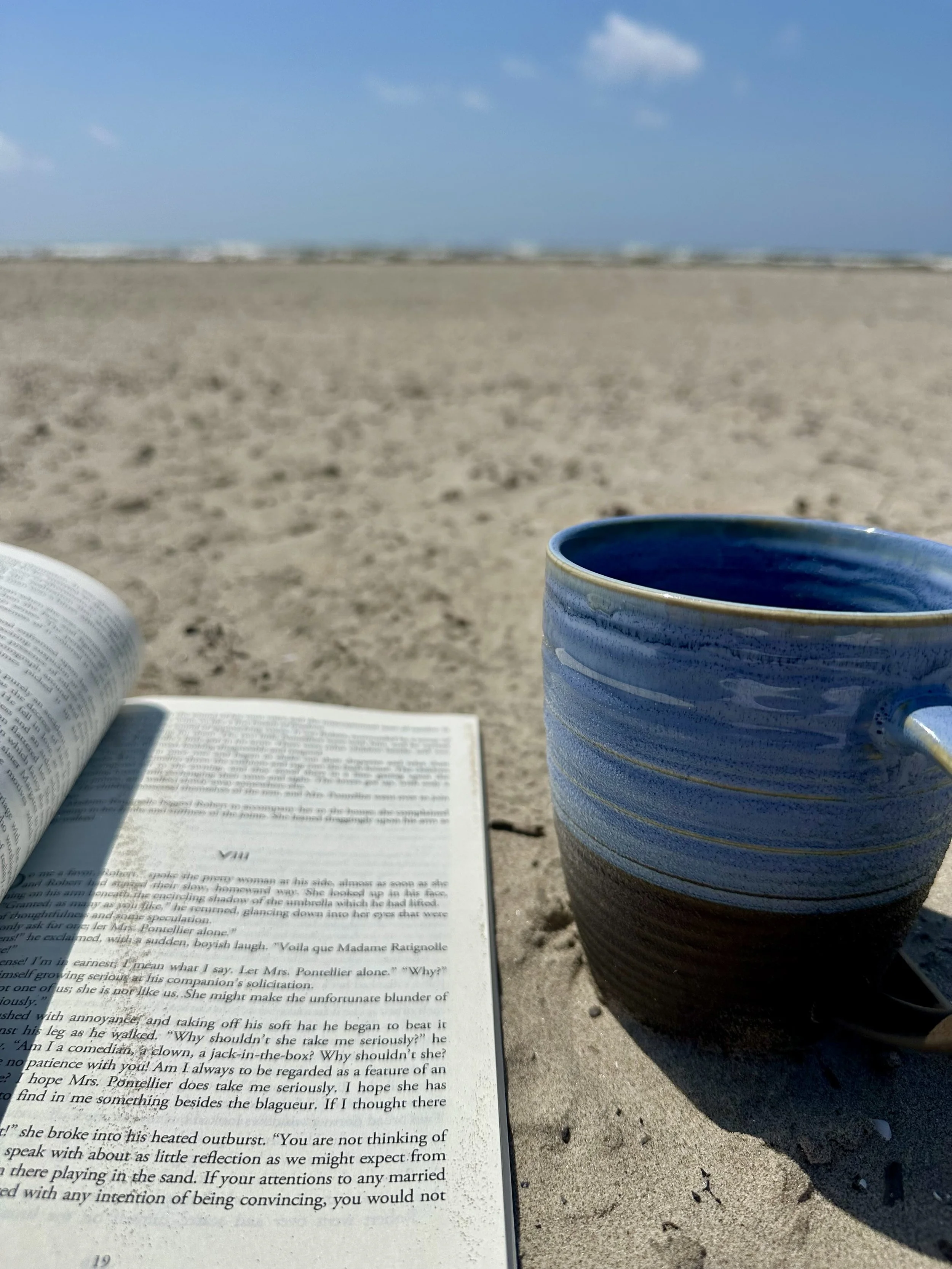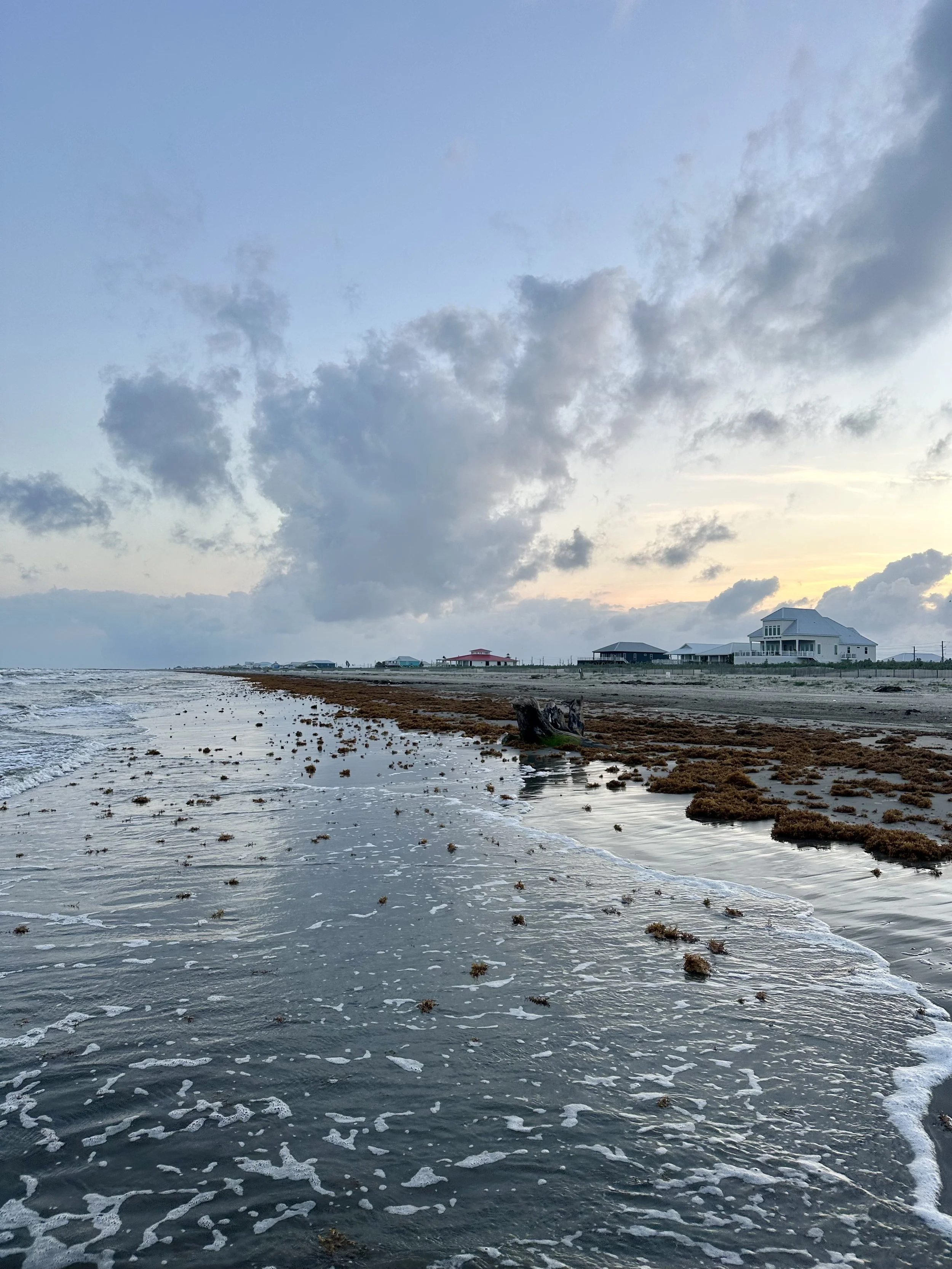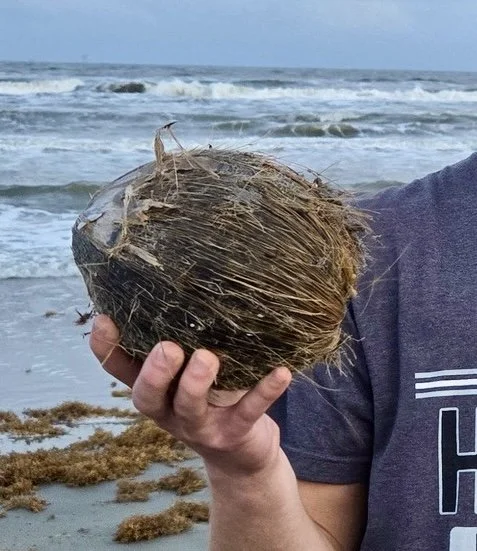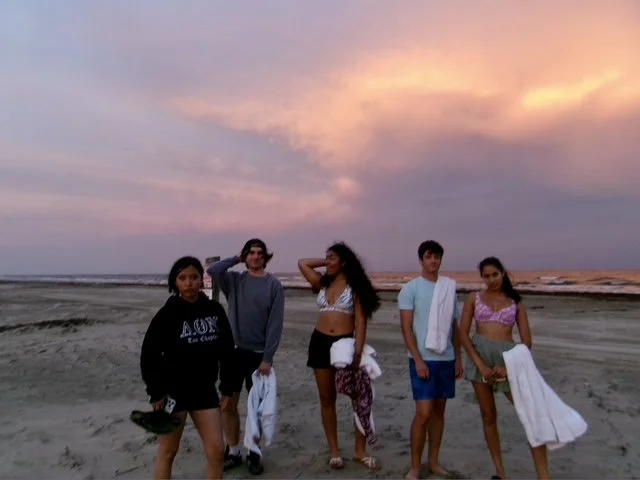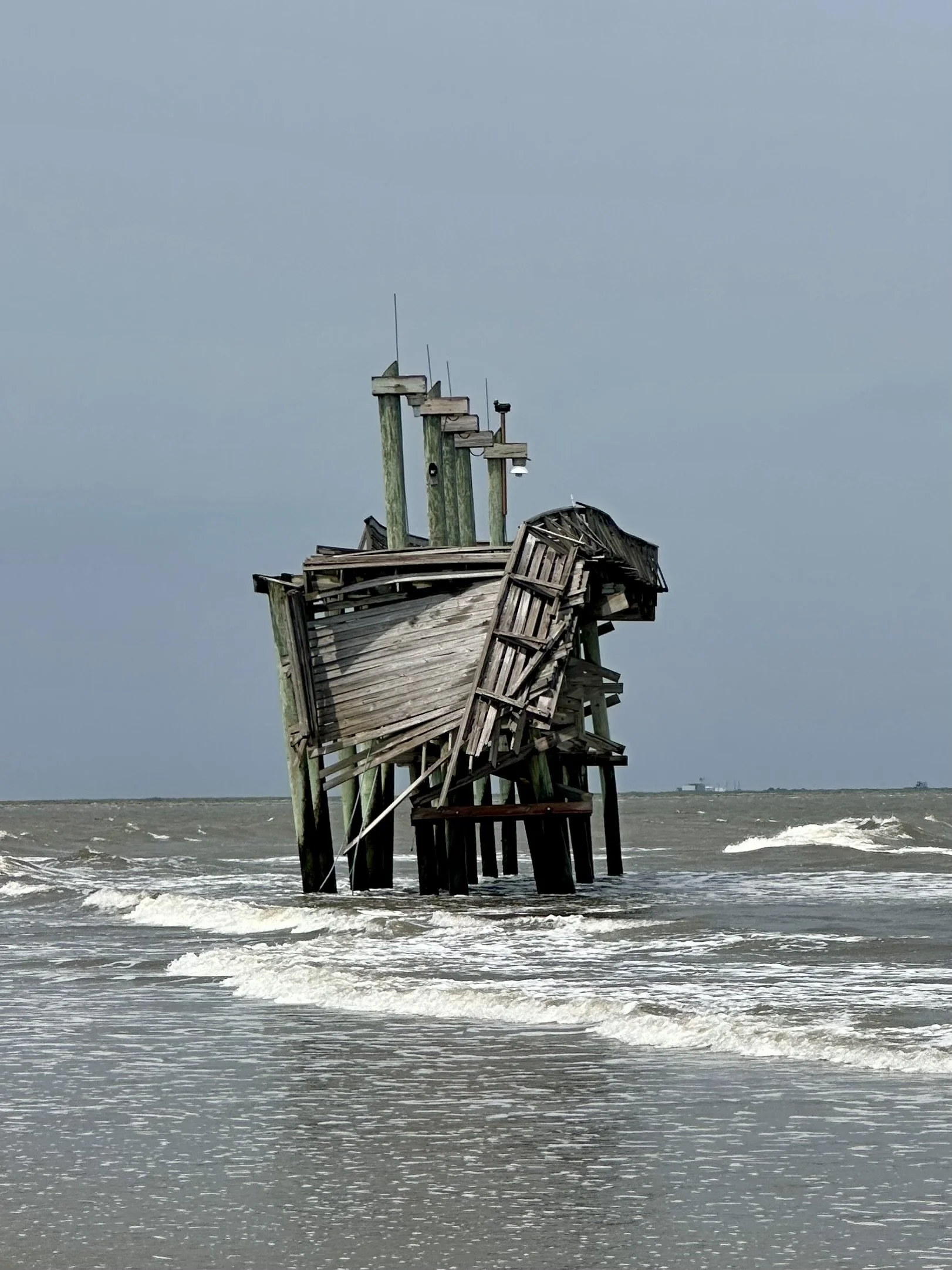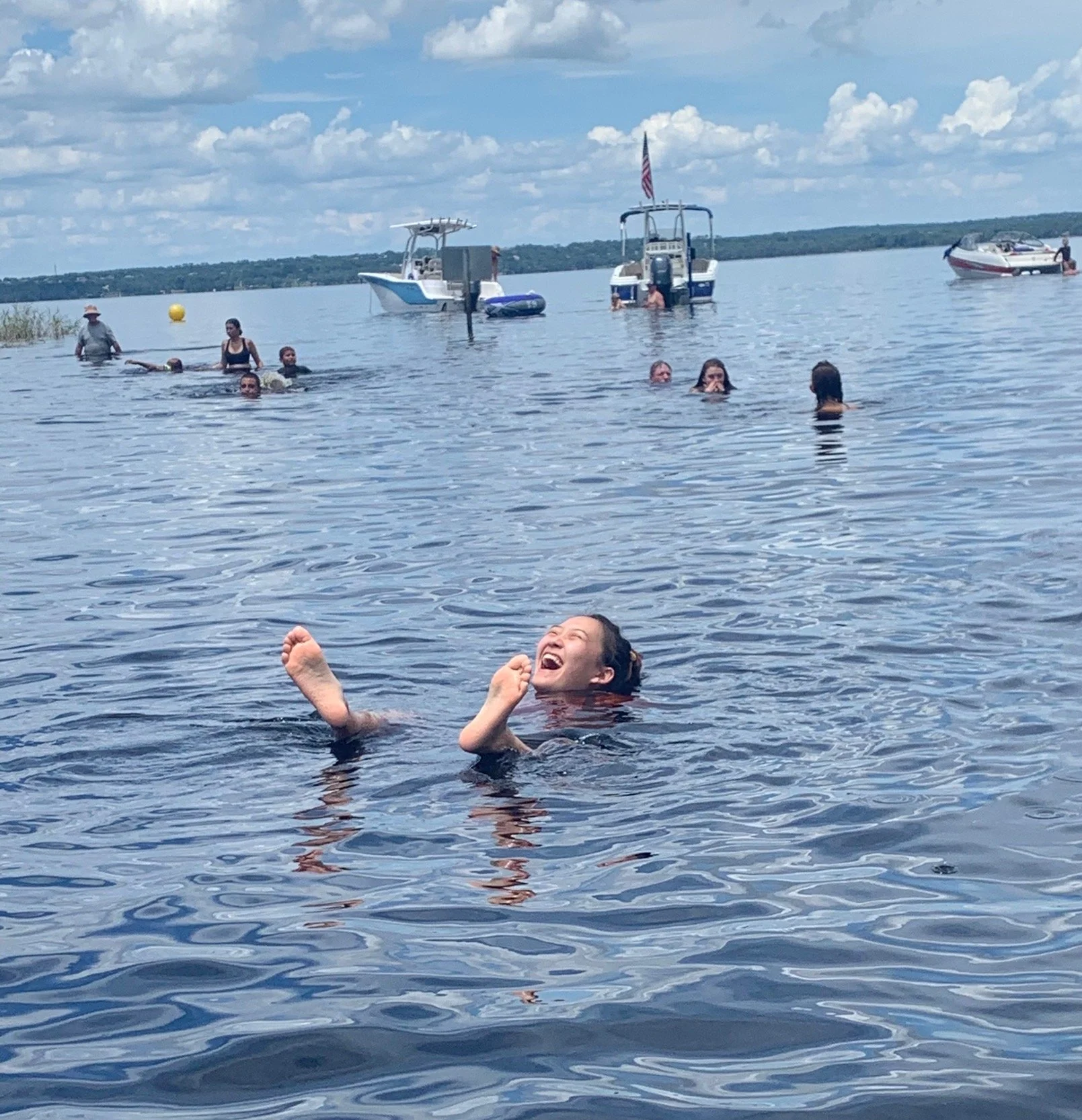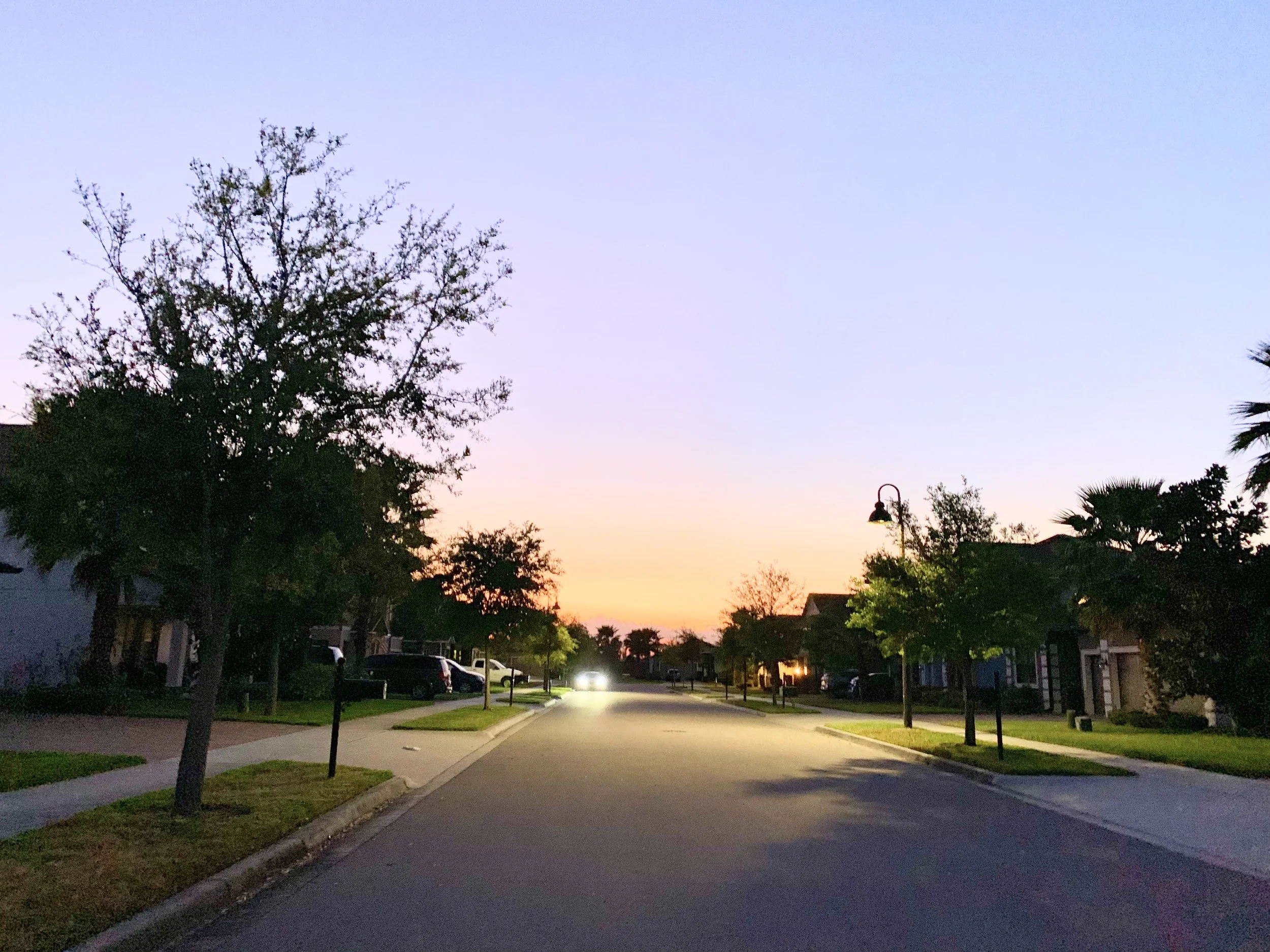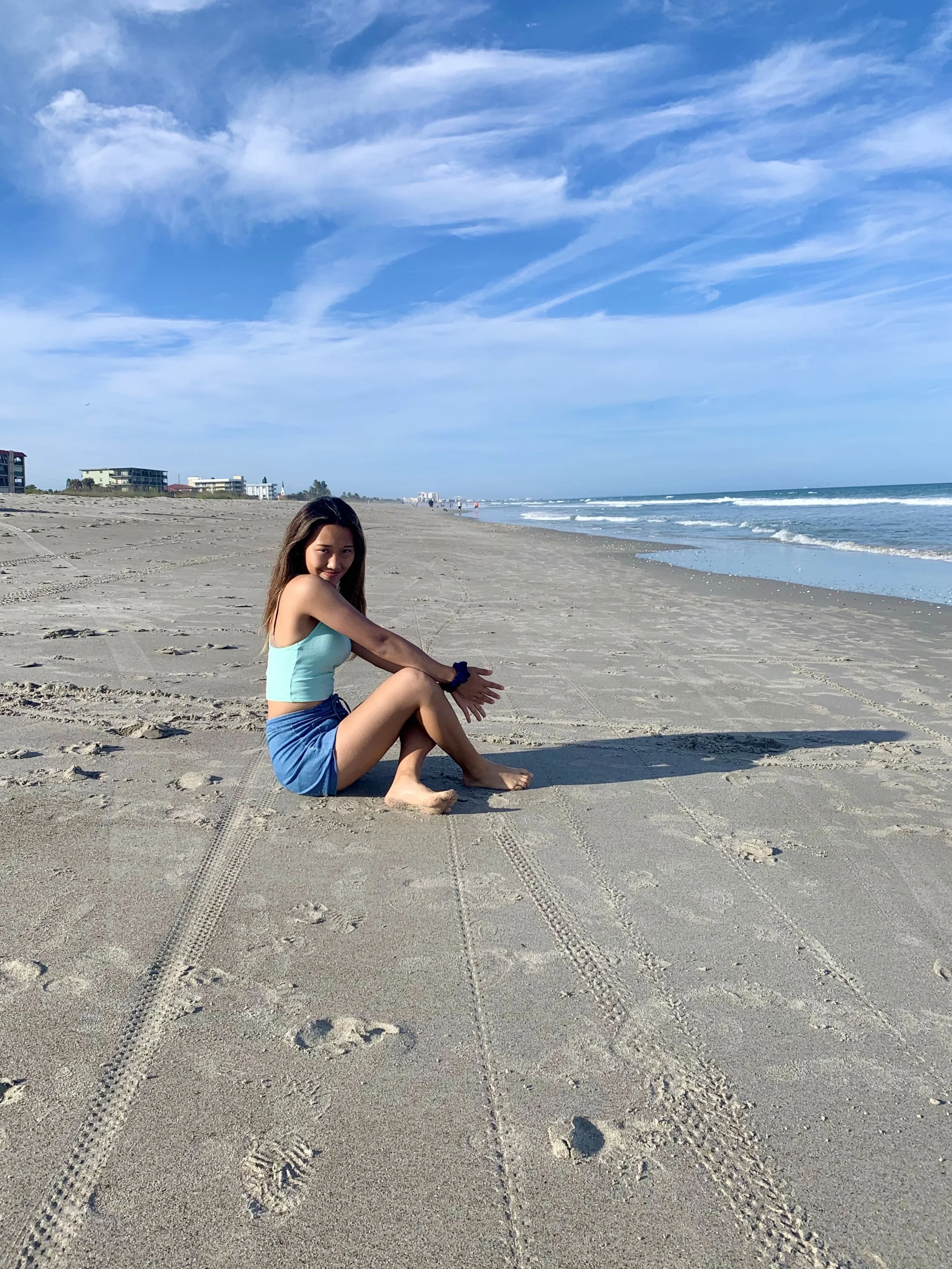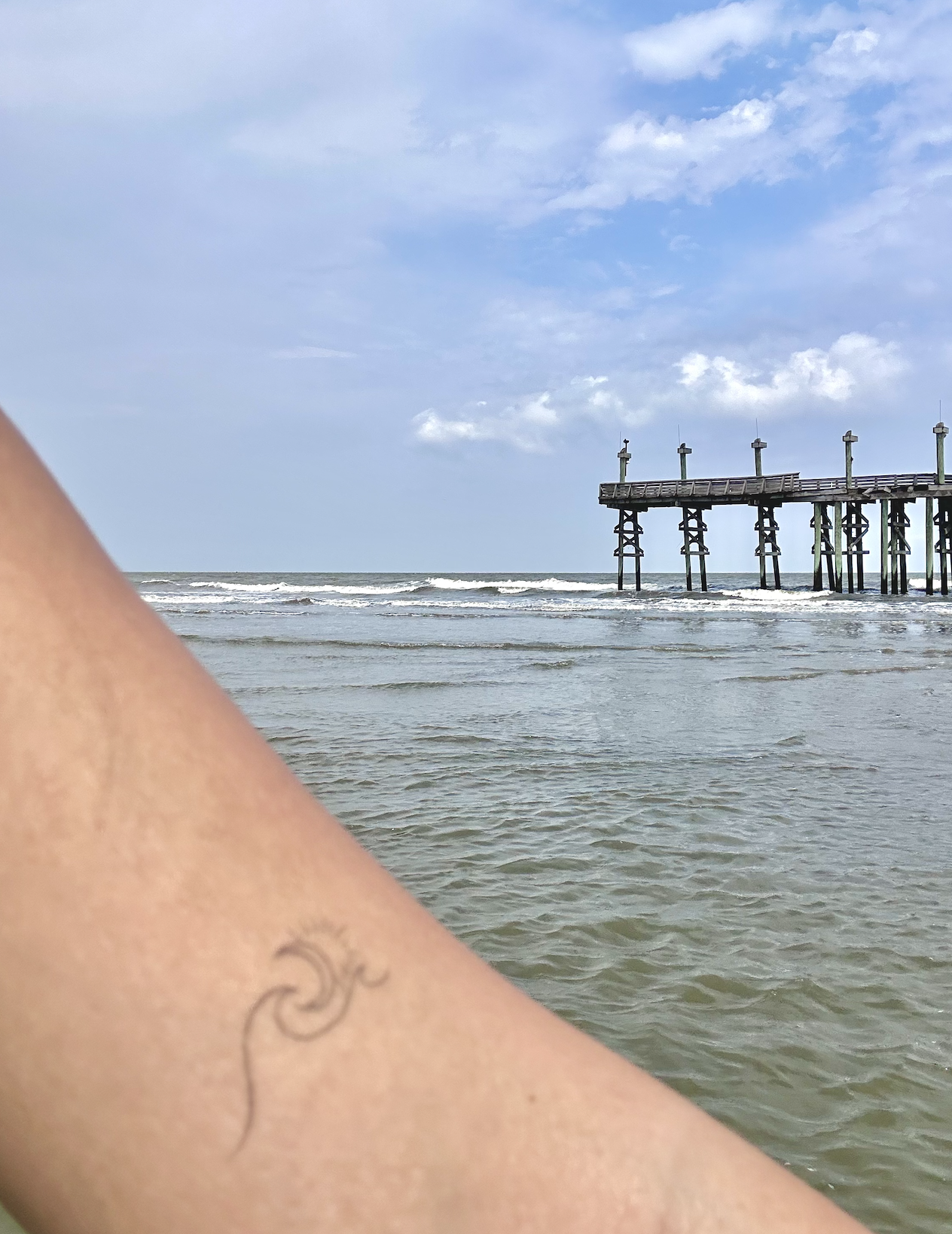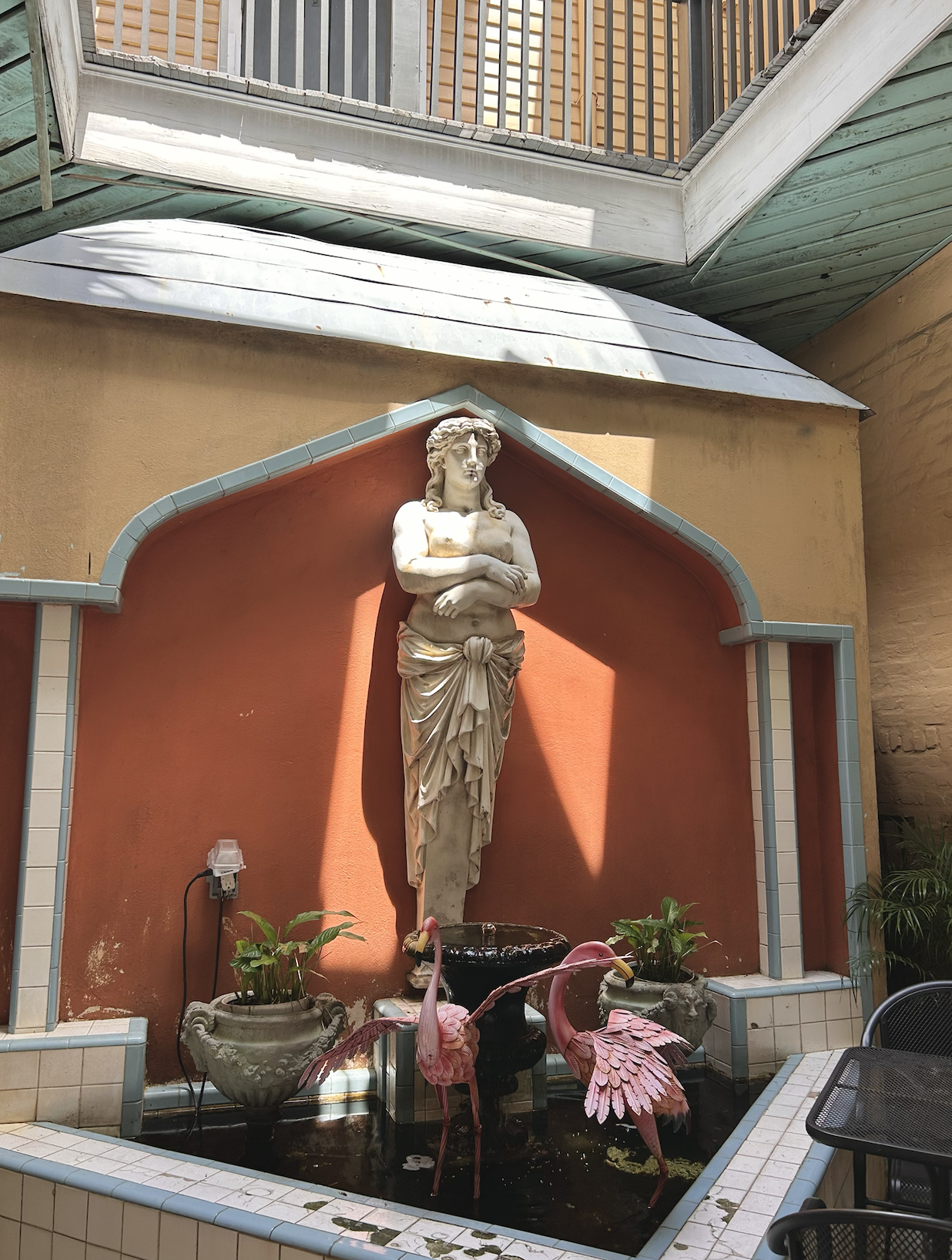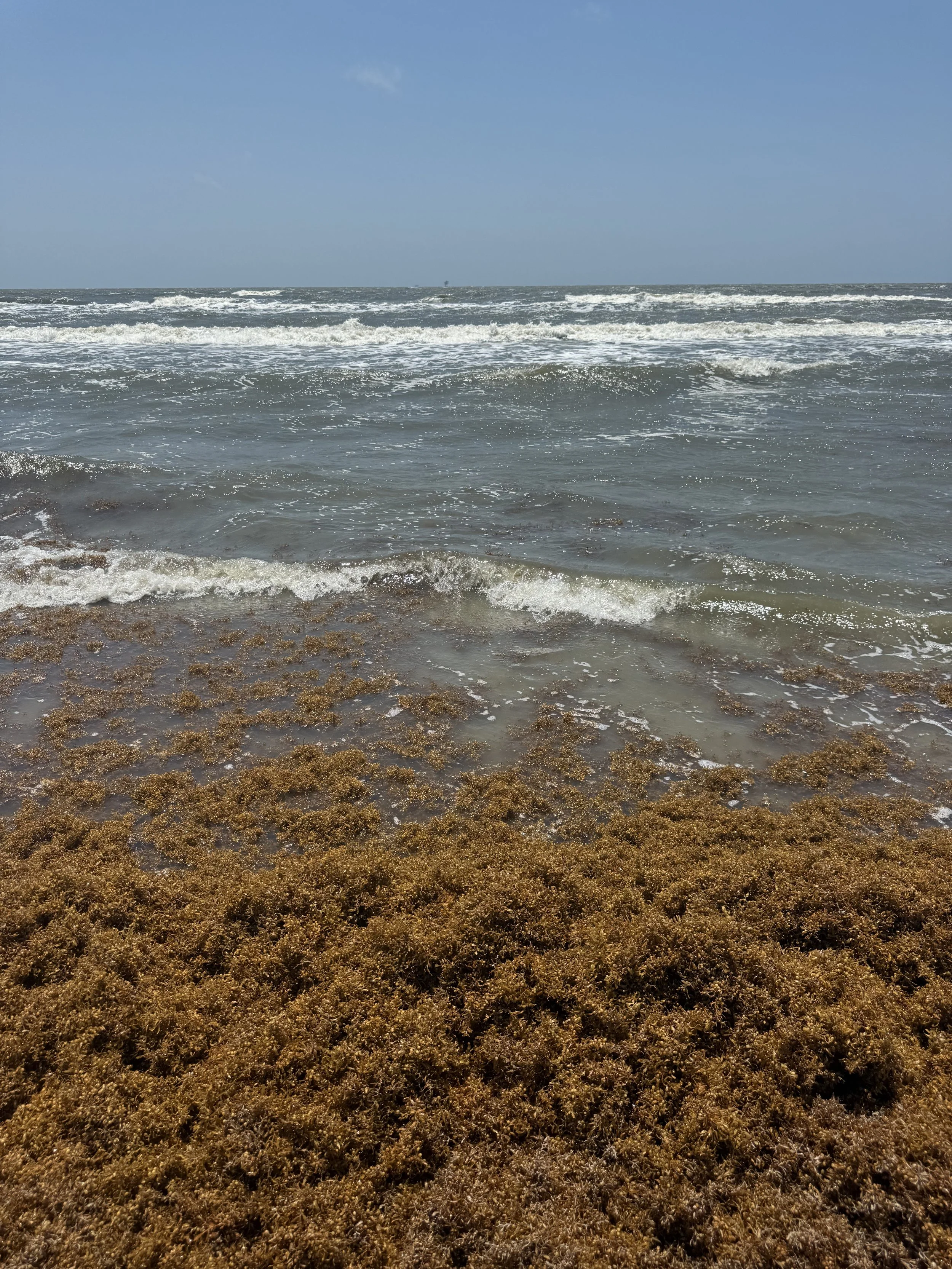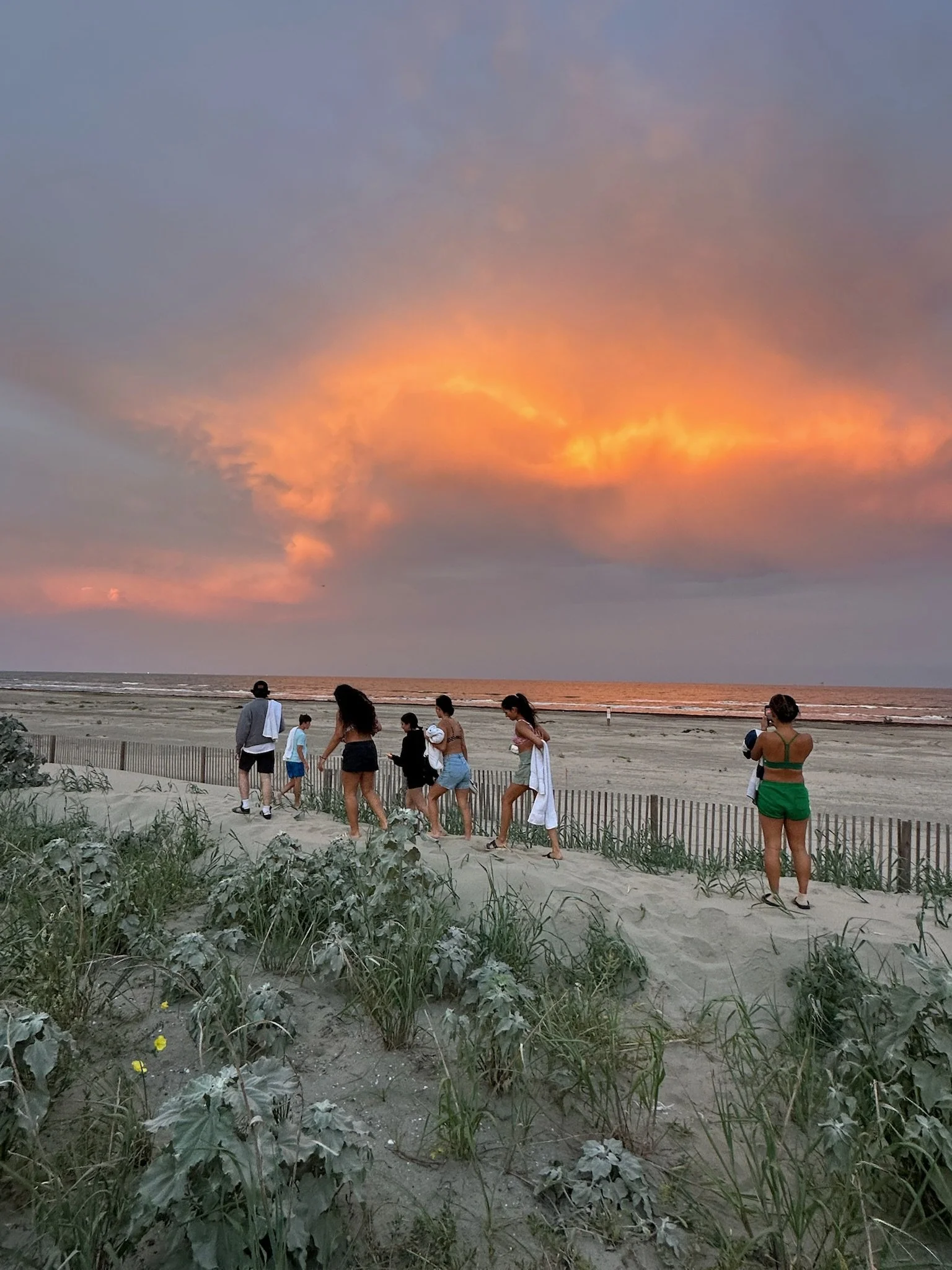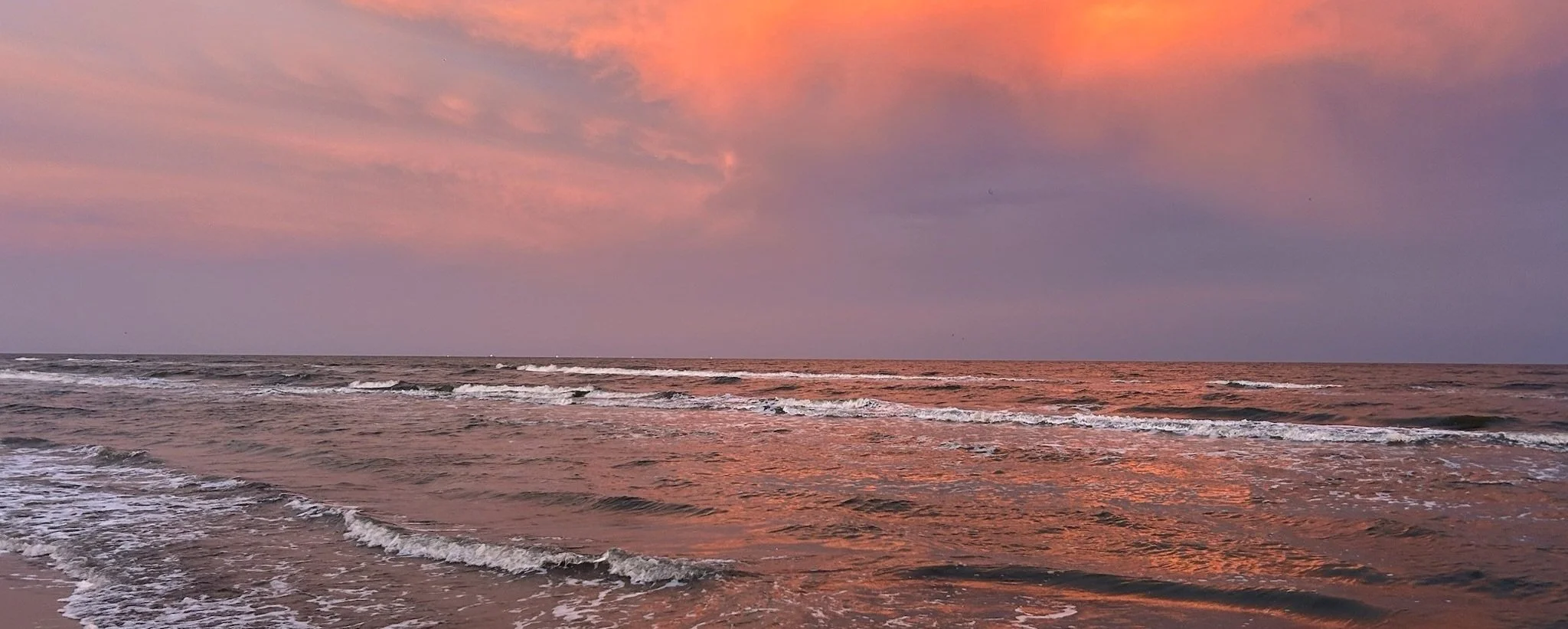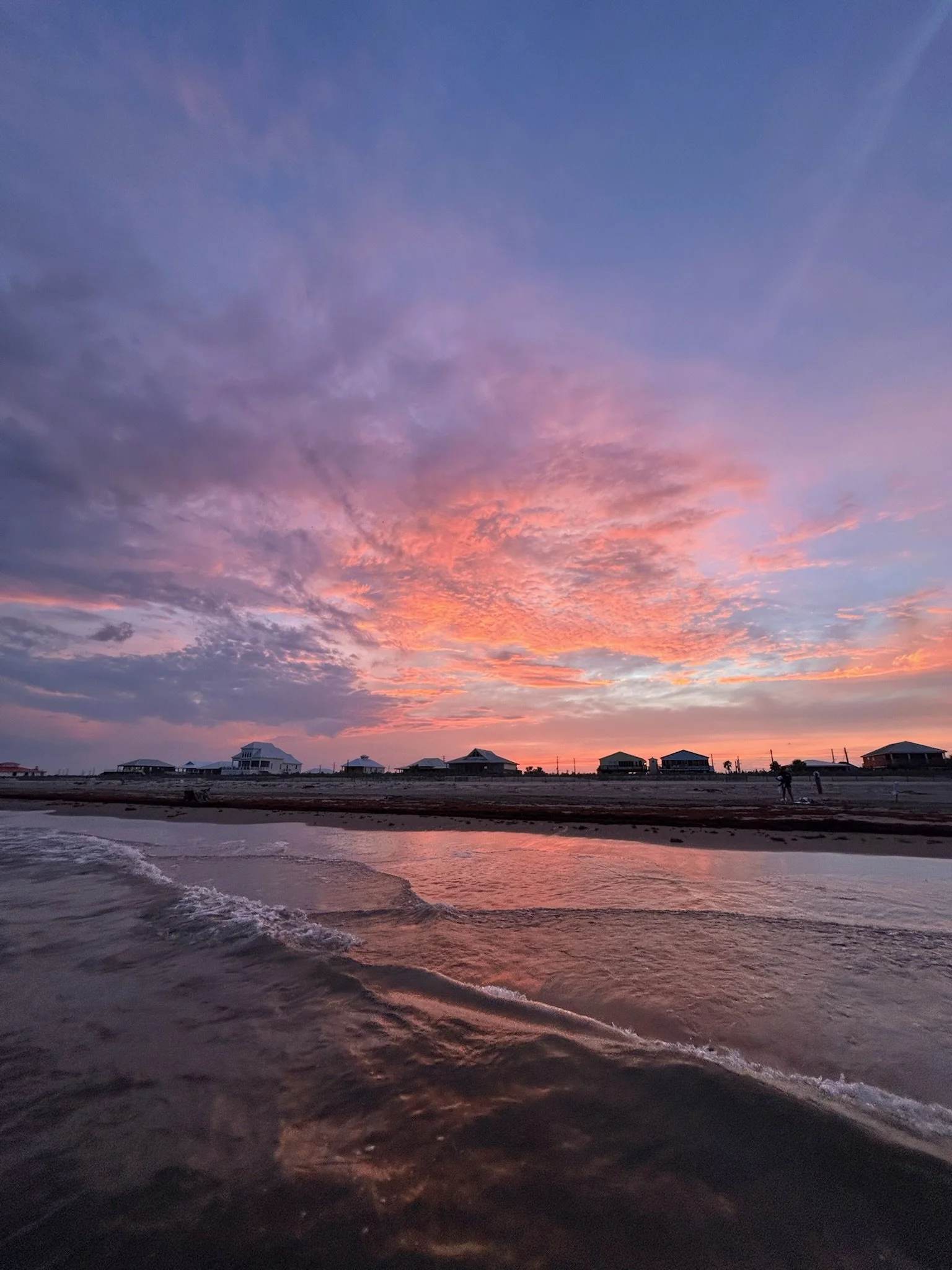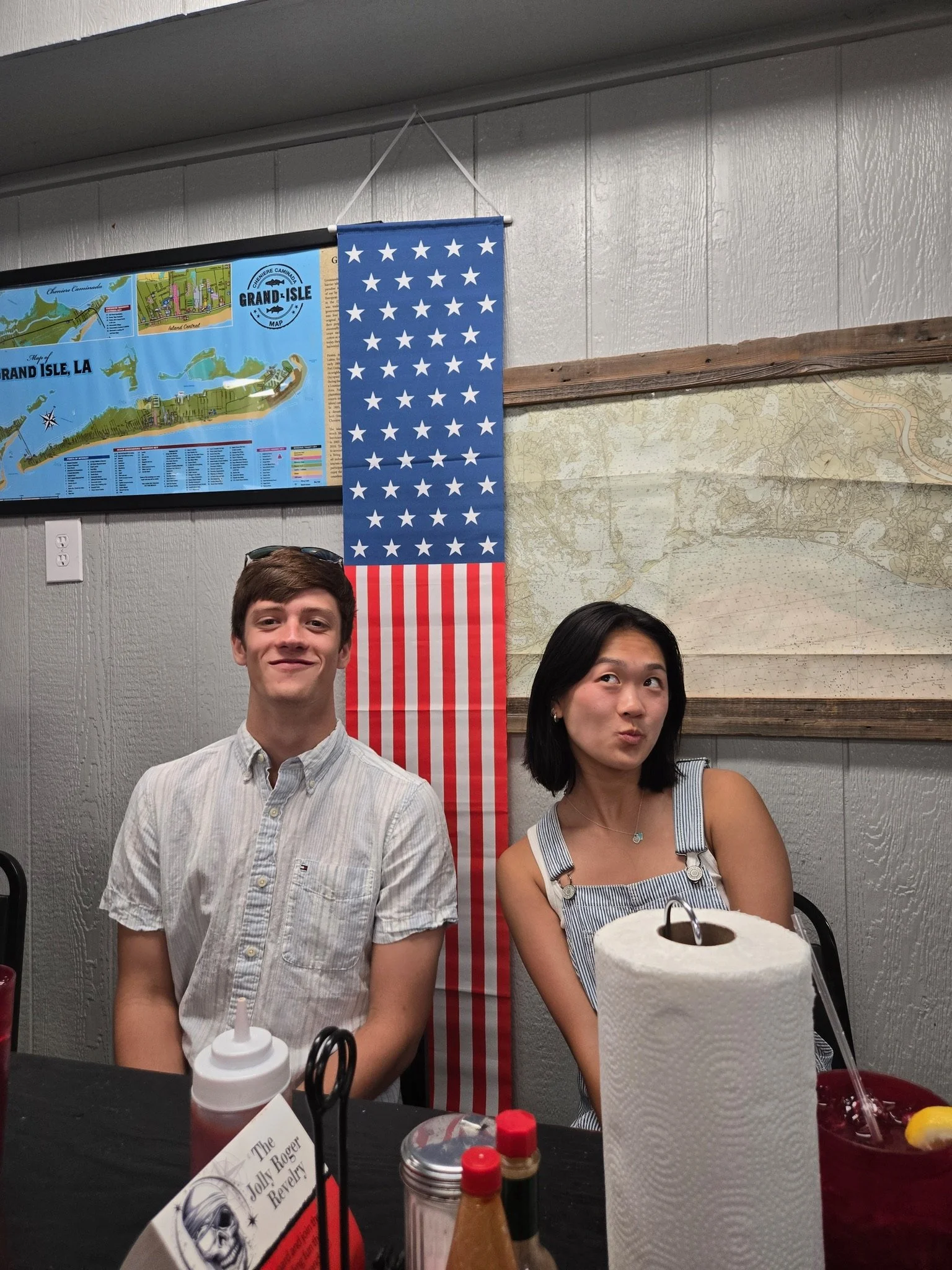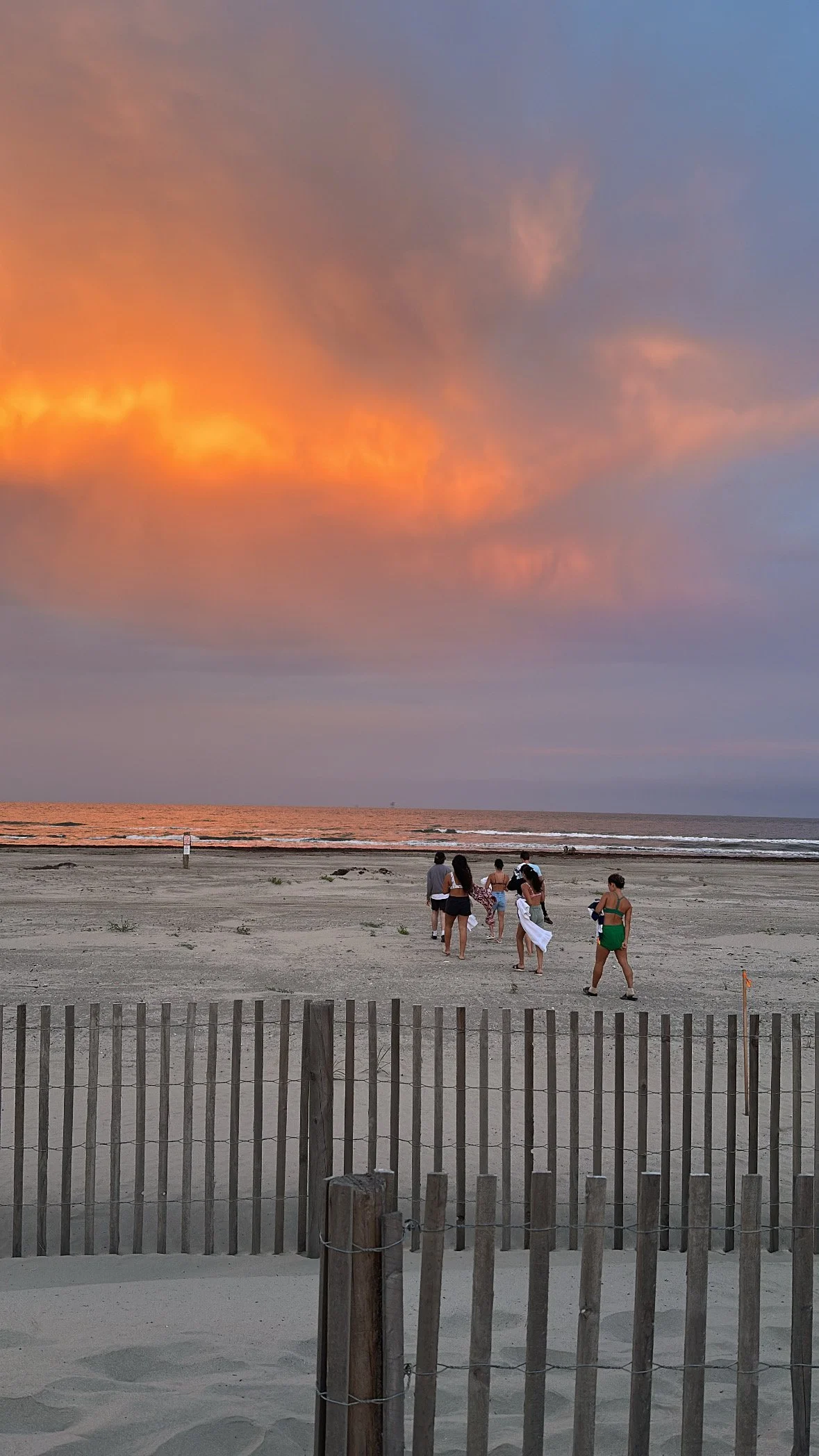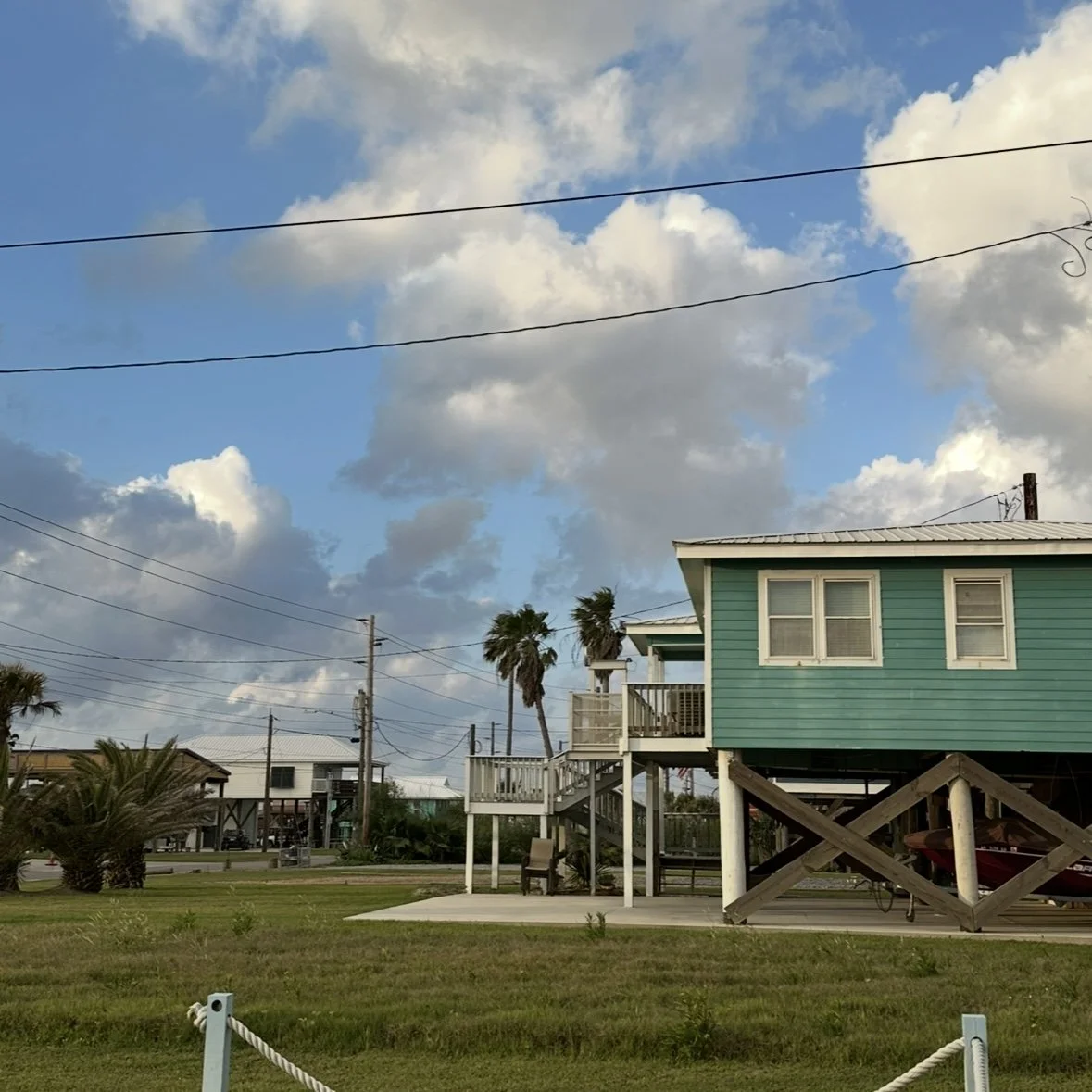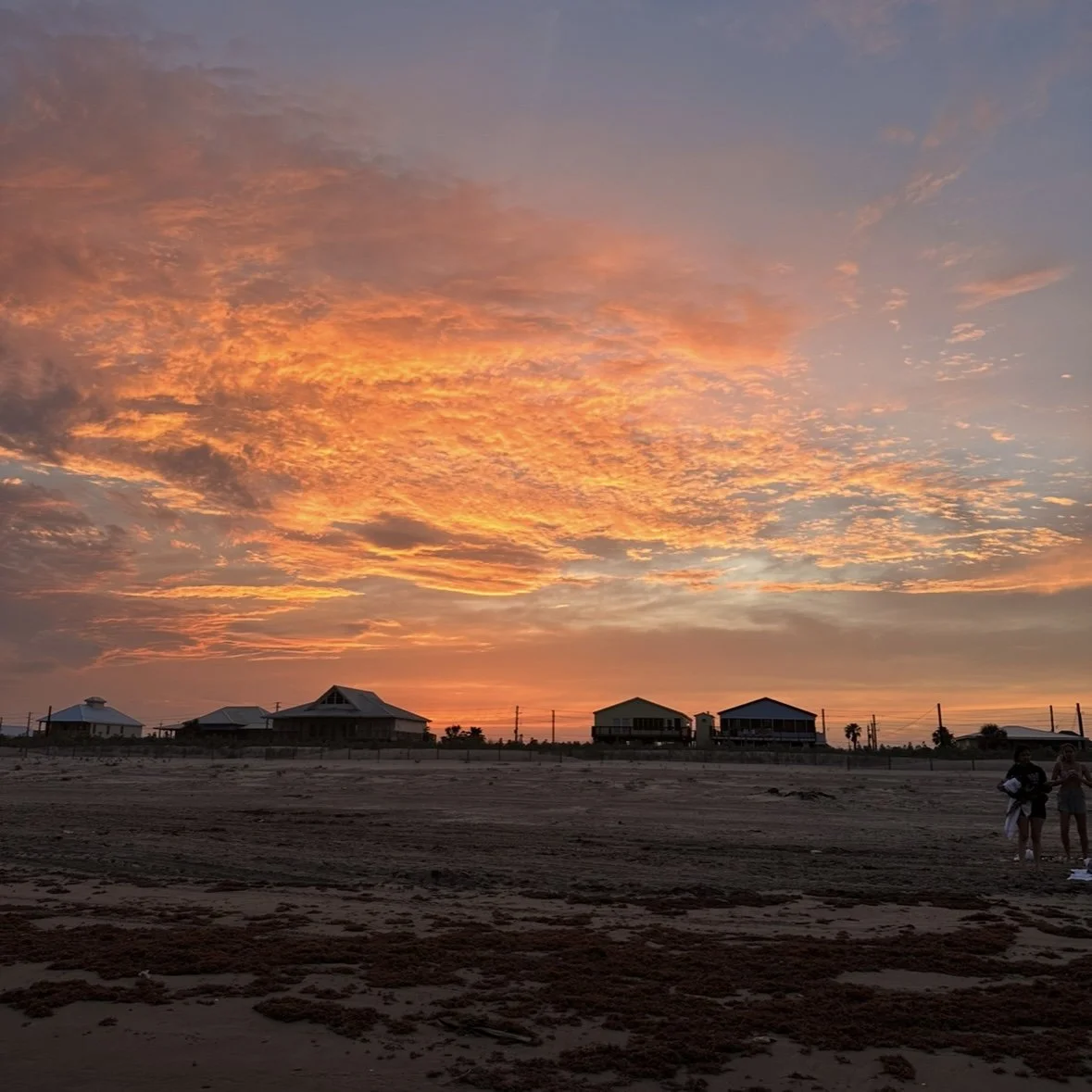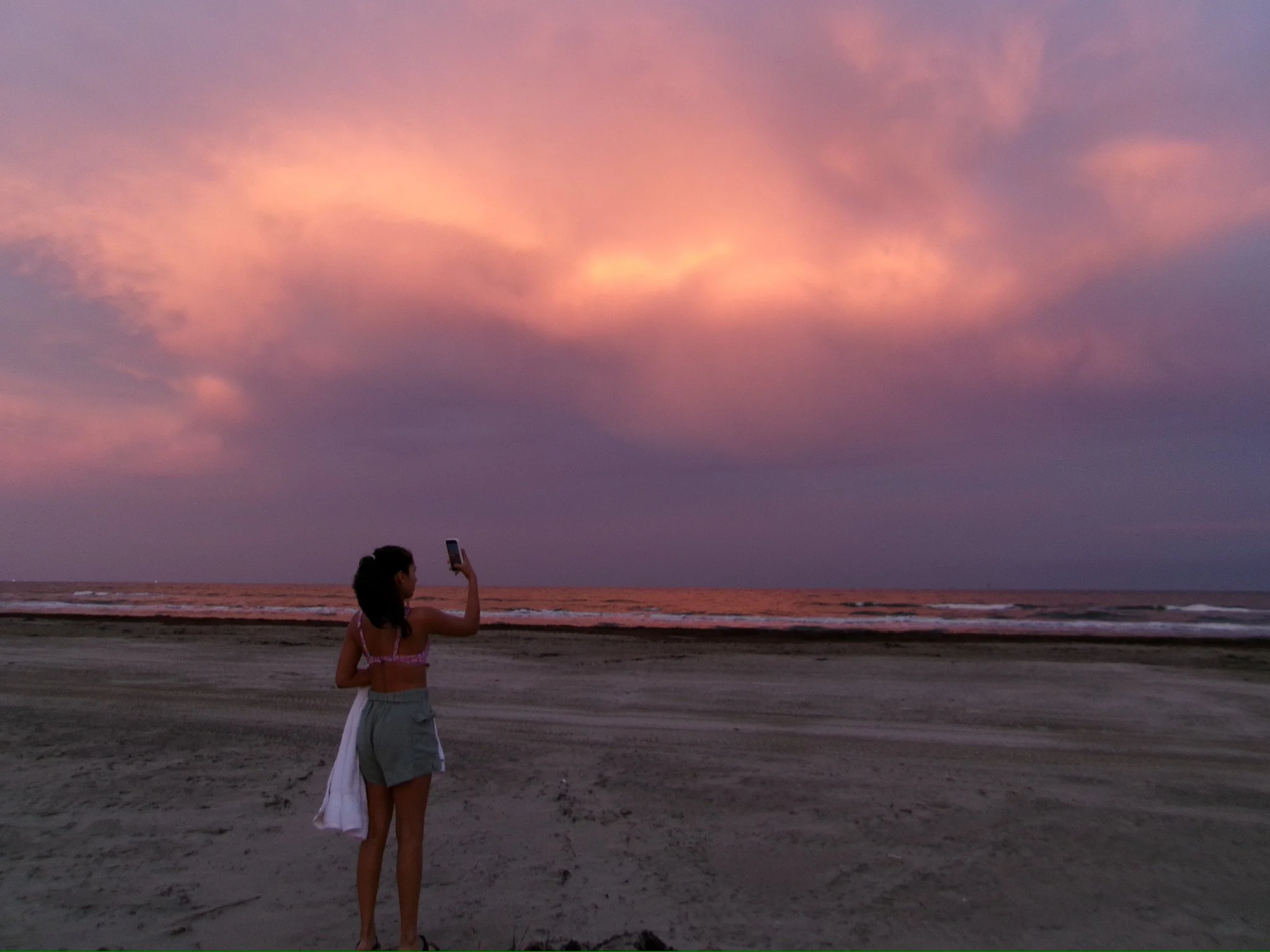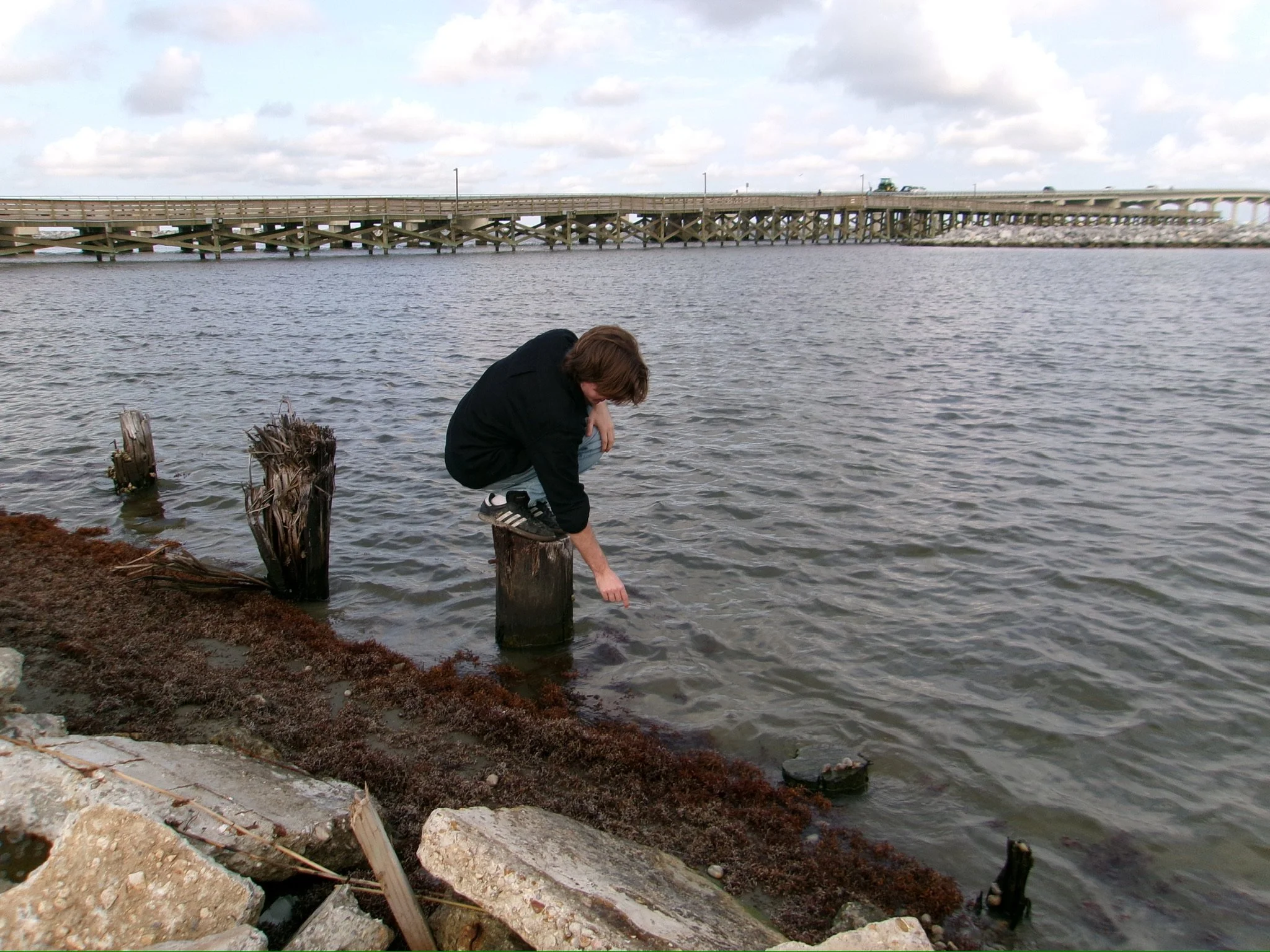We stood under the shade of the same beautiful live oaks with Spanish moss hanging down, as it became clear that this side of the city was still suffering the effects of Katrina.
“Katrina’s postscript—the physical wasteland”
This inconspicuous street was what we had been reading about all week. I felt like I knew the place. Sarah M. Broom’s careful descriptions of each of the houses on the street gave me a pretty good mental map of the area before we visited. I knew the people there, and the people who used to be there. I recognized the concrete slab where the Davis family used to live, the more affluent Ms. Octavia’s brick house, and the thin strip that is 4121 Wilson Avenue. The Yellow House.
“the short, industrialized end of Wilson Avenue, where I grew up, from the longer residential end of mostly brick houses,”
Of course, the house doesn’t stand today; it’s just a thin strip of land next to an impound lot and junkyard. The only landmark on the property itself is the address under the long grass and weeds on the curb. I’ll be honest, it’s a little bizarre reading so much about this Yellow House just for it not to be there. I didn’t know I had this much anticipation to see it, but I have to admit it fits. The yellow house was the epicenter of the family. Throughout all of the struggles and life changes, the yellow house remained, even if it barely stood. Then, when it was gone, the epicenter of this family’s story went with it.
Our Professor pointed out that the old Cyprus was gone, too. This landmark has stood for New Orleans bookpackers in previous years, but it no longer does. I think it shows how this street is moving on from the story of the Yellow House. This place, which has held generations of people, is moving on, removing any trace of what came before. Soon, the book will be the only physical memory of what used to be here.
As we stood by the empty lot, a local working at the junkyard next door mentioned that her boss had bought the land and was planning on expanding. They had just taken out the tree a couple of weeks prior. I was surprised it had been so recent, since there hardly seemed to be a trace in all the overgrowth. It is all about to be gone.
As much as I recognized all of the landmarks as Sarah M. Broom had described them, something about the street hung with me. You could almost feel the emptiness; the people who had left this place behind. Places like these are a stark contrast to the French Quarter, where we spend so much of our time. Without the money to rebuild immediately, people have left. For every well-maintained house, there is one in disrepair and one empty one.
The street’s emptiness was contrasted by the active industrial zone, with multiple cars going into the junkyard while we were there. Wilson Street feels a little forgotten. Some houses remain standing, but the activity is only industrial. Tow trucks moving in and out, empty lots, and quiet disrepair don't fit in with the “affluent suburb” this place was supposed to be. The houses that stand are the ones that feel out of place.
“I repeated it back to myself: We lived on an industrial-zoned street where the houses were the exceptions.”
Entrance Gate
Later that morning, we transitioned from focusing on what used to be to what could be. We drove onto the site where Emmy-winning composer Elvin Ross plans to build a film and corporate retreat complex. This park was built for Jazzland, a jazz-themed park, before it was acquired by Six Flags. The park didn’t last long under either name, with Hurricane Katrina taking it out nearly twenty years ago. The area has been falling into disrepair, with only its parking lot being used for a couple of blockbuster films.
Ross has an inspiring vision for the place and an acute understanding of what it could mean for the area. He imagines a variety of multipurpose modular sound stages being built, housing corporate retreats, e-sport tournaments, and blockbuster films alike. Ross also plans to build all the facilities required for these events on the park grounds, knowing that the shored-up swampland is currently the most valuable asset within the 120-150 acres it occupies.
We arrived at a historic moment for the park. Power was being connected for the first time in 20 years, kickstarting this ambitious project. As we walked through the gates, the bones of a theme park were immediately apparent. The remains of replications of historic French Quarter buildings were recognisable amidst the rubble and under the graffiti. You could see the waterline just above my chest height, where the devastating storm surge reached. It told a similar story to Wilson Street.
Katrina’s Waterline
Despite all of this rubble, the potential was evident. Ross and his son Landon took us around the park, showing us renderings of what they hoped to build, transforming the good bones that we stood on. Ideas for administrative offices, performance venues, cabanas, and soundstages showed a transformed park, part of a revitalized community.
As Edwin Ross described the potential for the education portion of this project, his love for the city was evident. That's exactly what a place like this needs. Bold investments could revitalize areas like this, injecting cash into a community that could use it.
